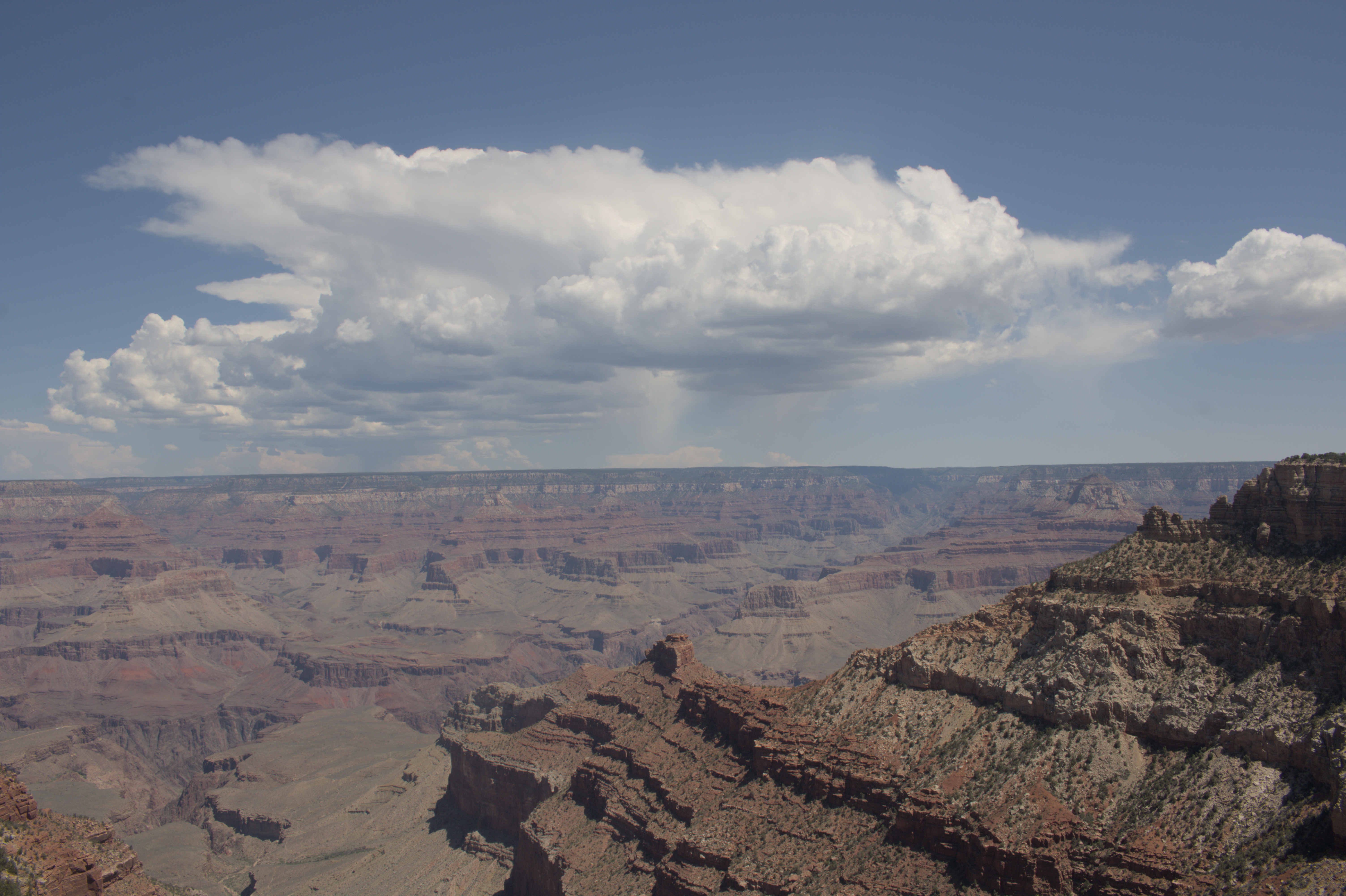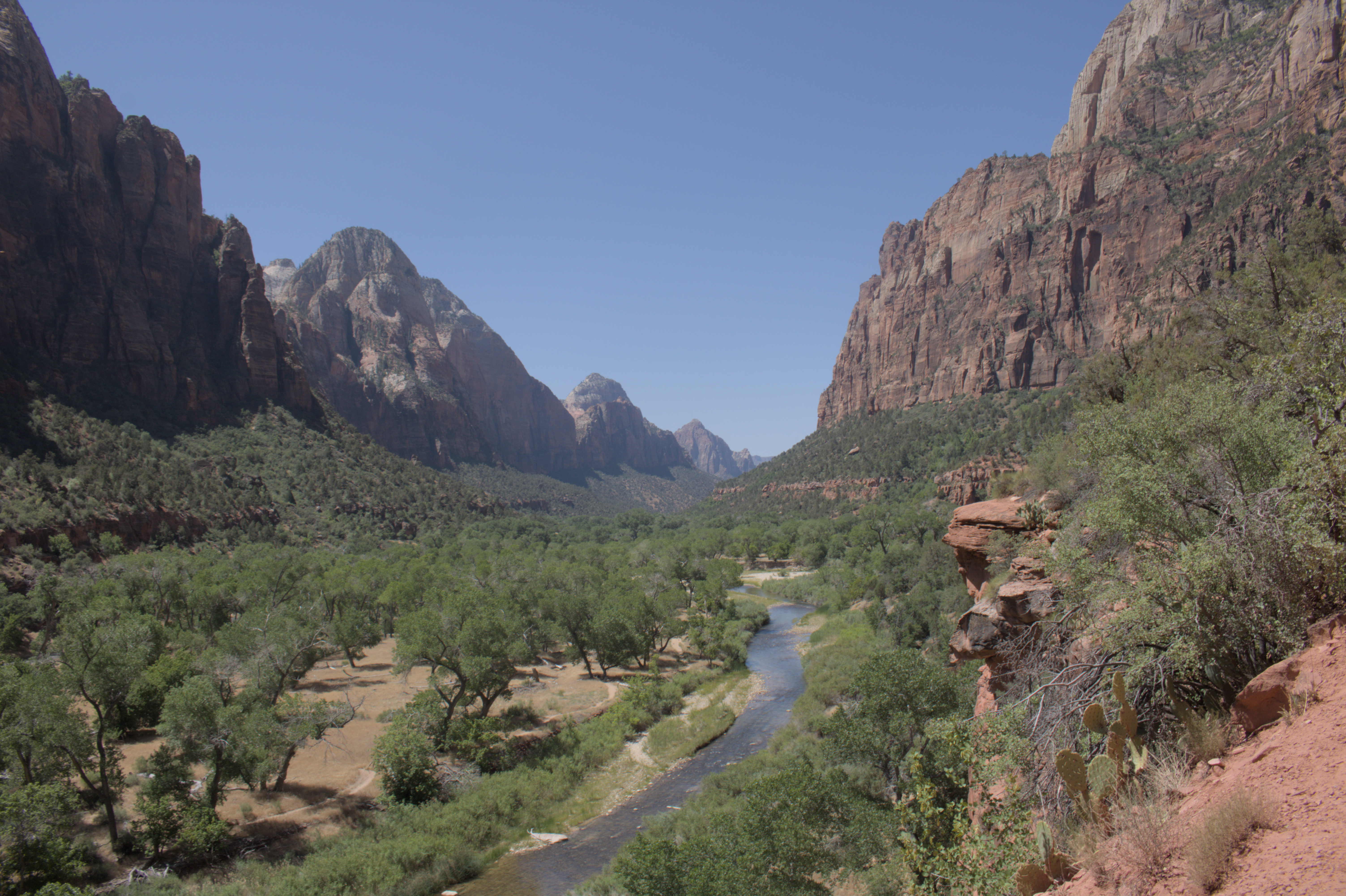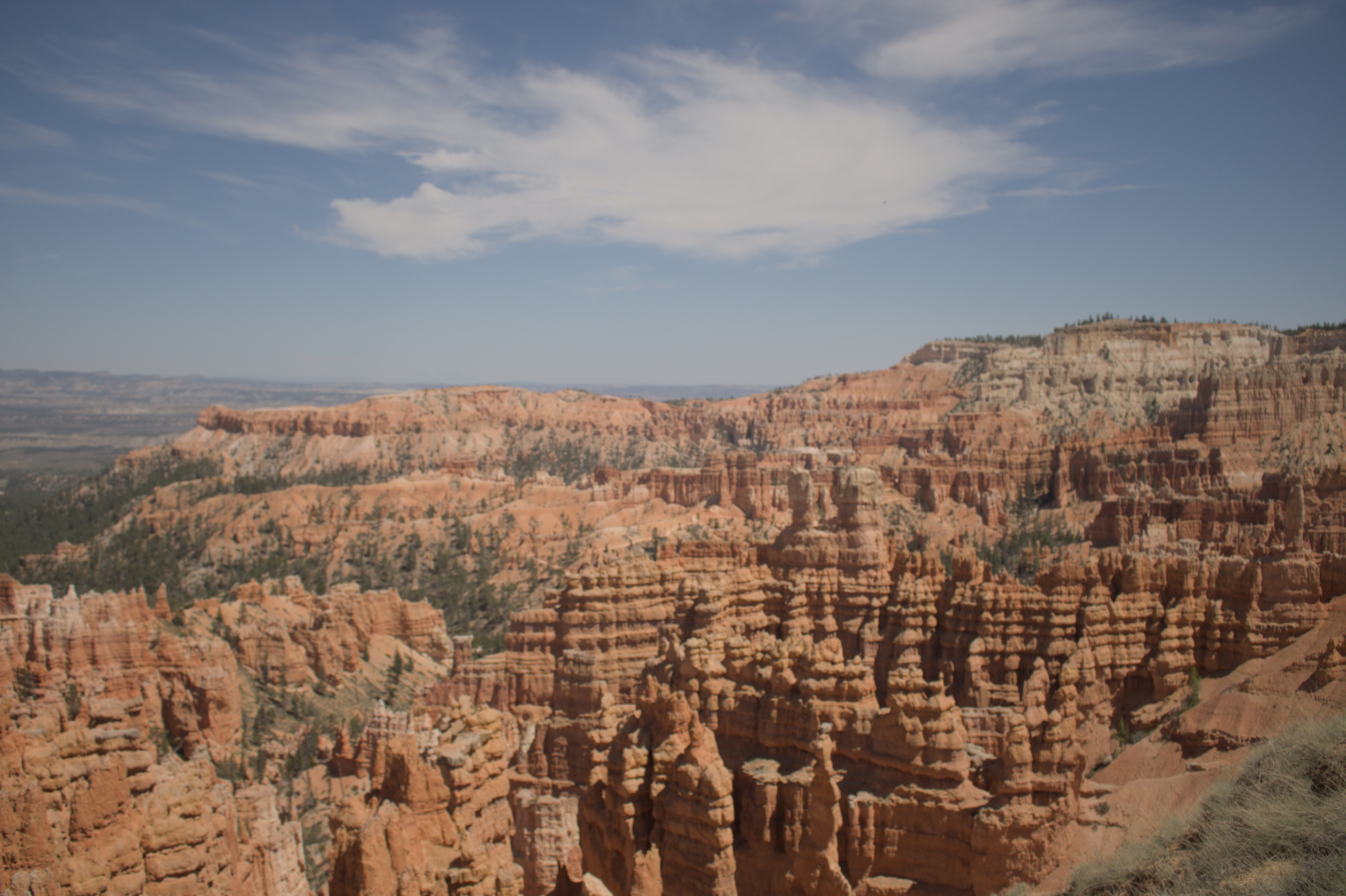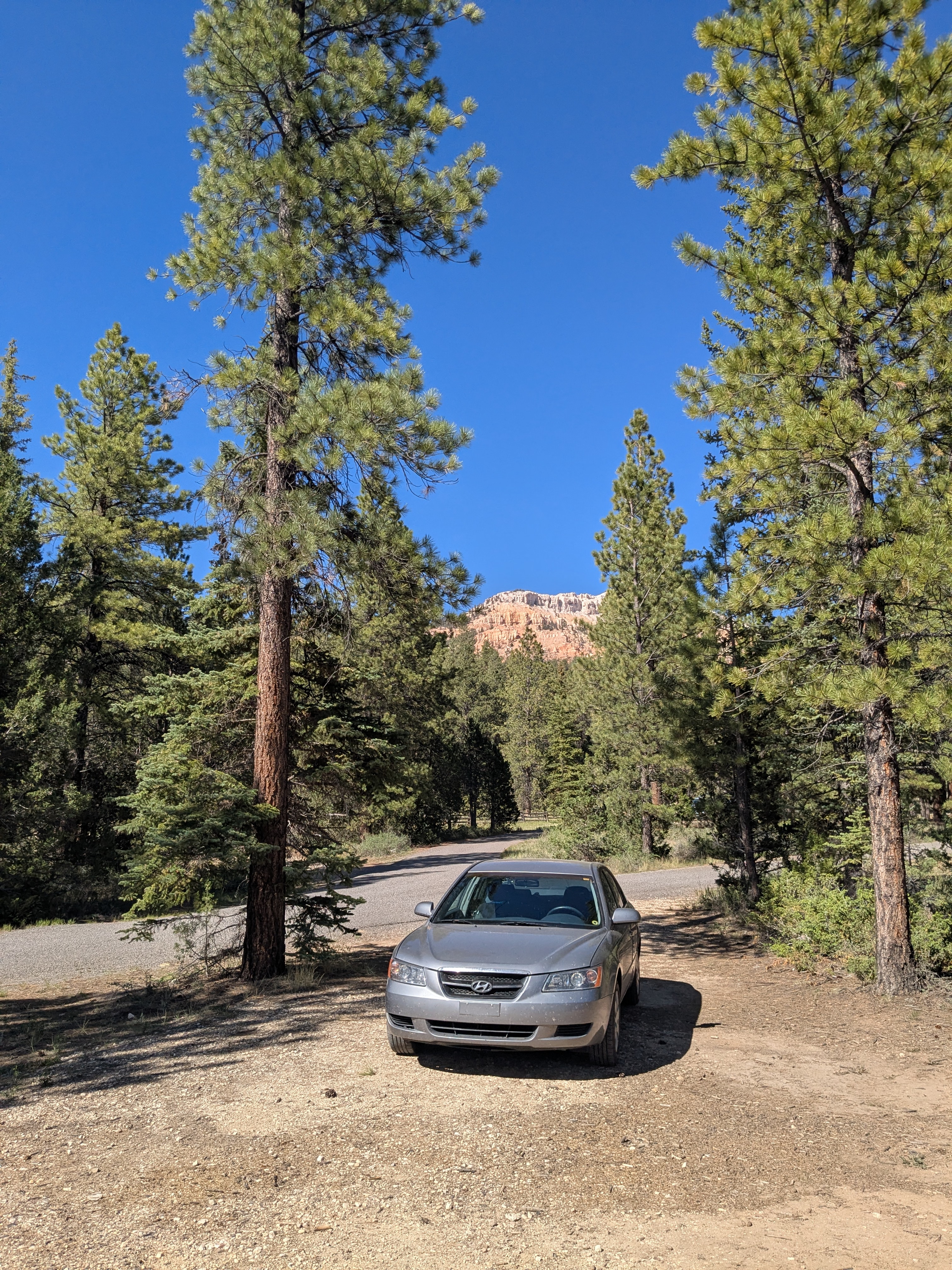This post will cover stops 14 through 19 as I explore the American Southwest.
The Grand Canyon
I think the Grand Canyon is the opposite of Mount Rushmore.
Mount Rushmore is a monument that fits within a frame. If you’ve seen a picture of Mount Rushmore, you basically get the gist. Its hand-carved slopes transform a mountianside from natural beauty to cultural icon.
The word “Grand” doesn’t do the Grand Canyon justice. There’s a sheer scale to it that makes observation akin to astronomy: a reminder of how miniscule a human really is. No one picture does it justice.
And, as someone who recently underestimated a hike, I appreciated that the signage emphasizes this scale, and makes the difficulty of the full hike clear.
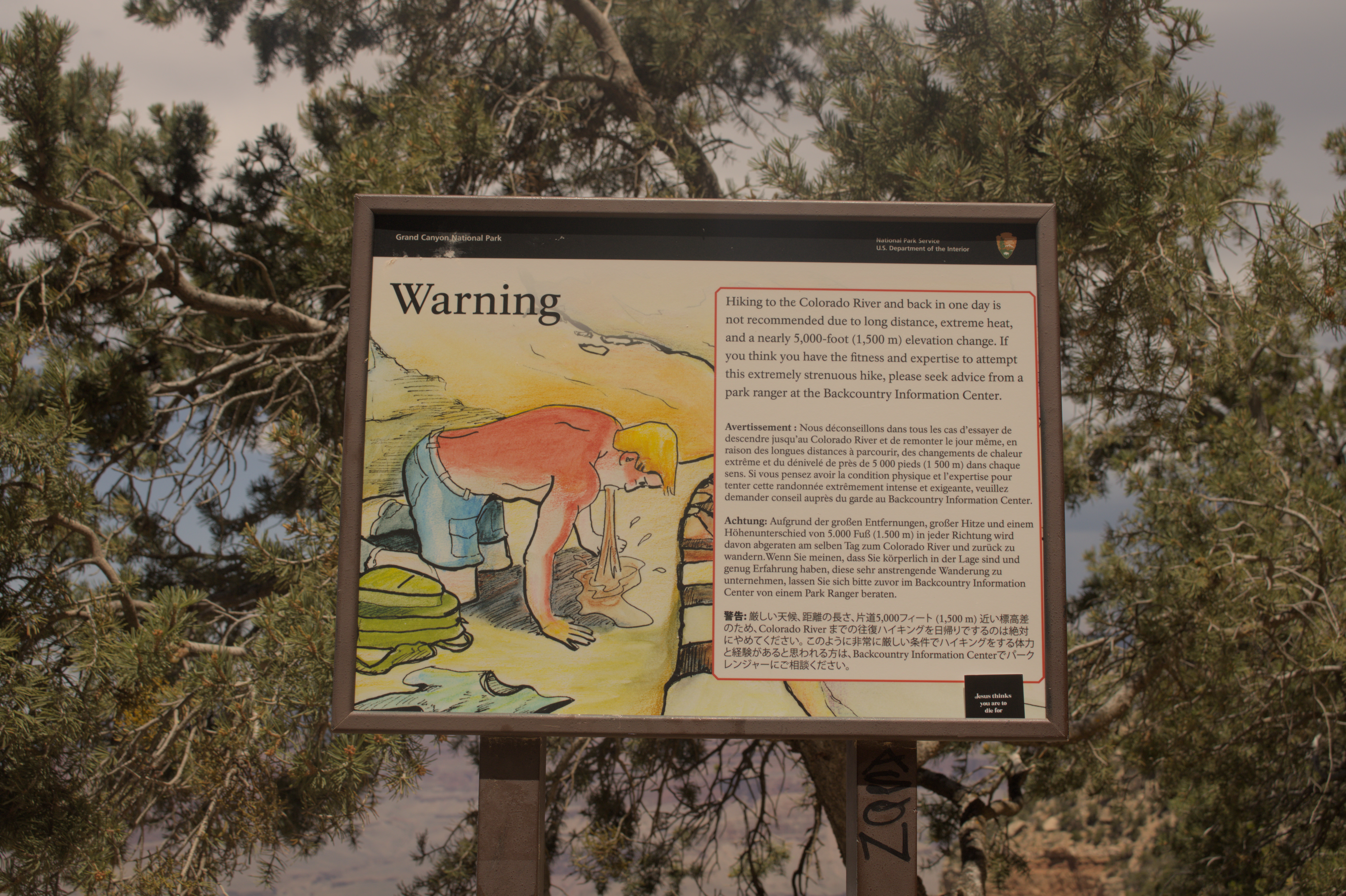
I know there’s tourist attractions at the Grand Canyon, where they’ll bus you into the most picturesque spots, or let you walk on a glass skywalk. However, I decided to keep it simple, and just wander at my own pace. The Grand Canyon Shuttle made it easy to explore on a whim.
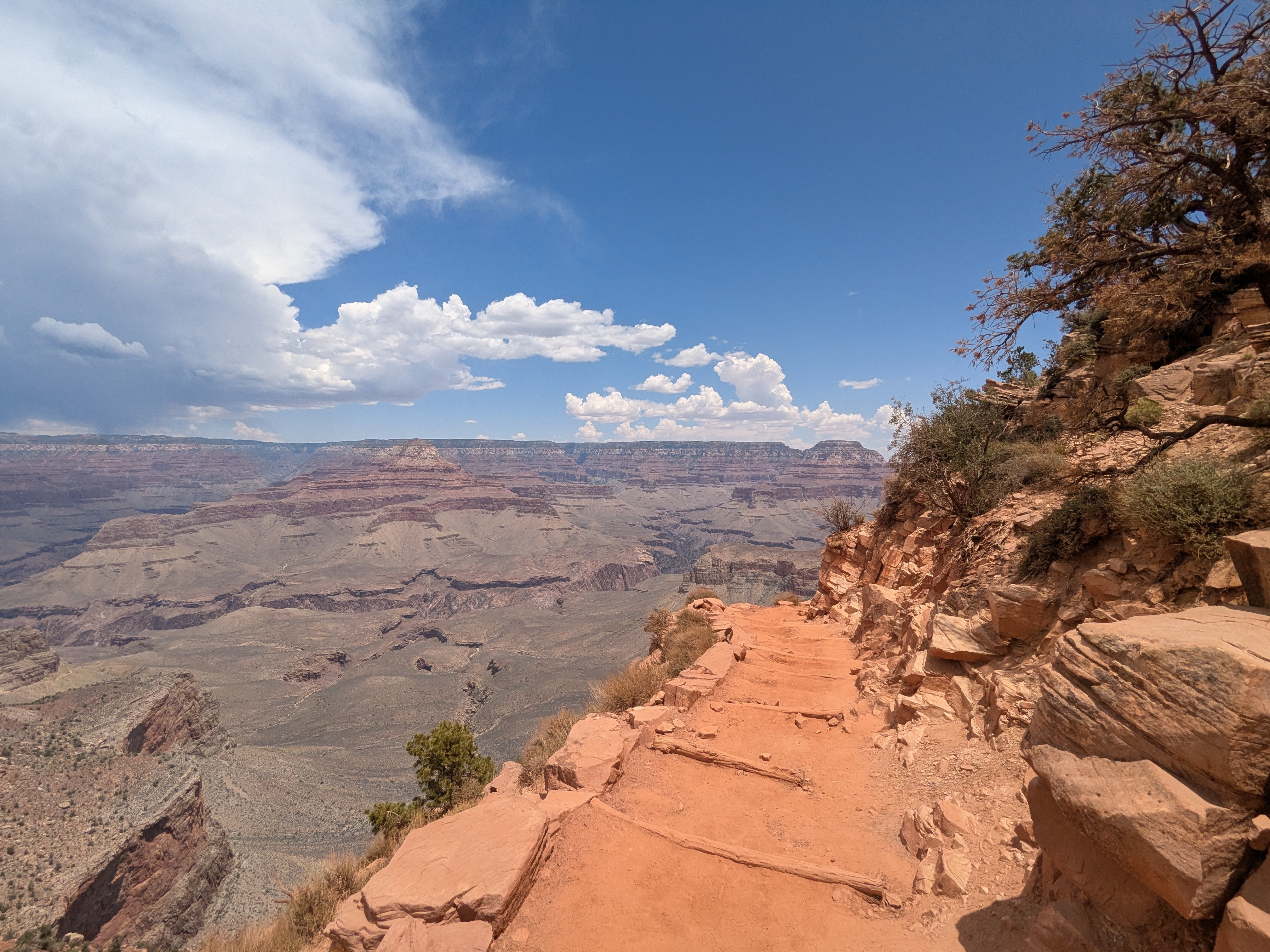
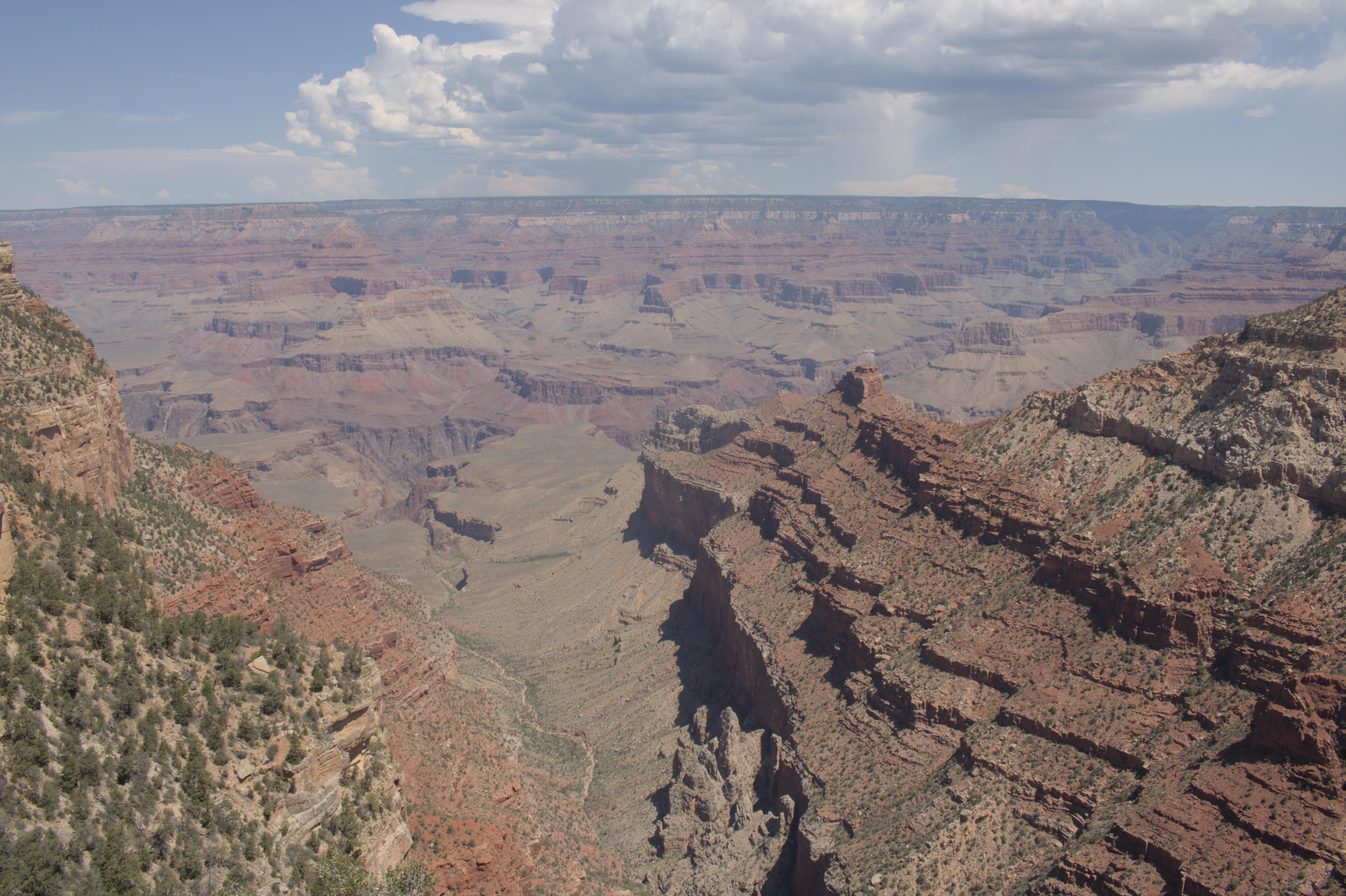
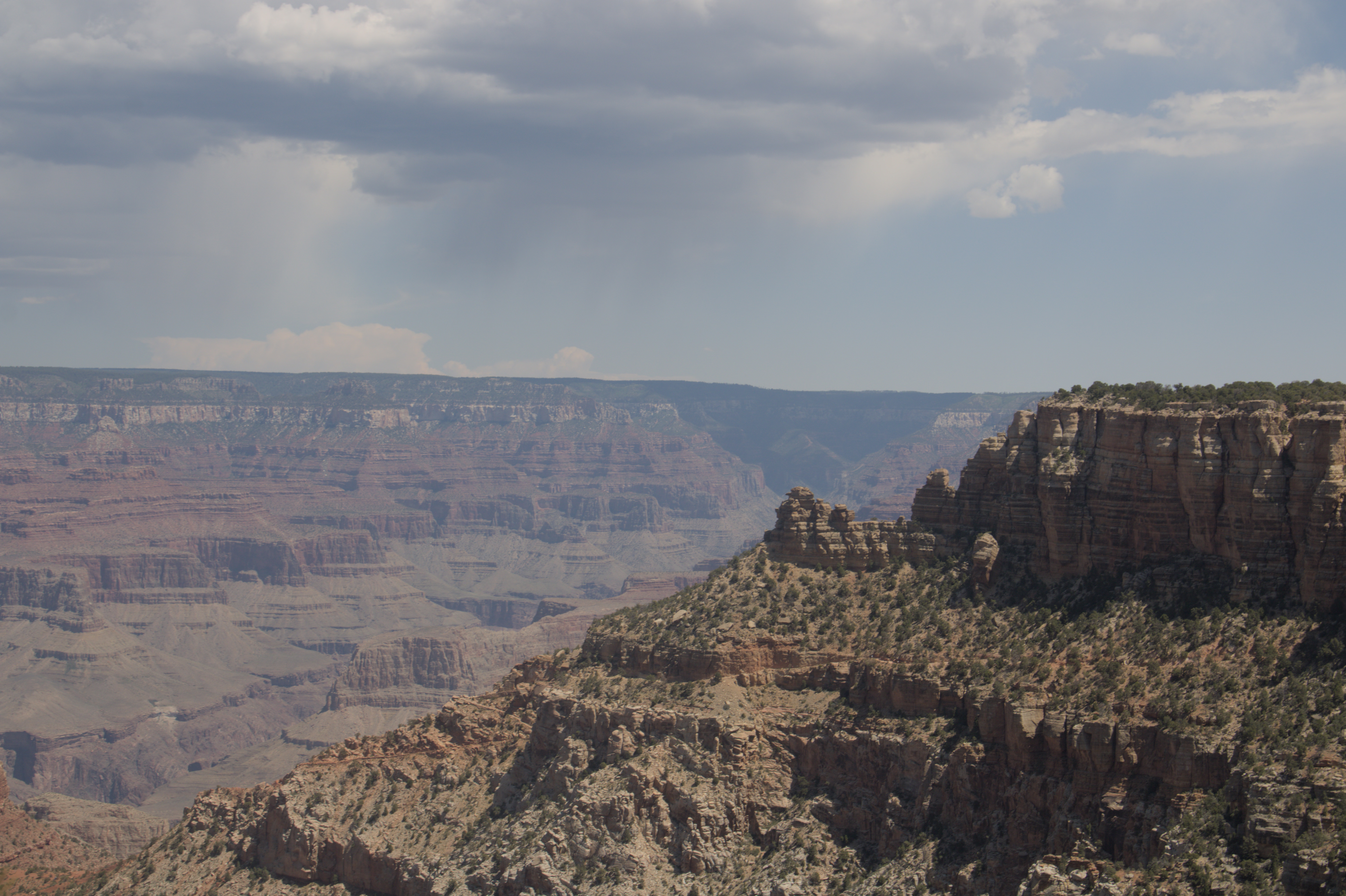
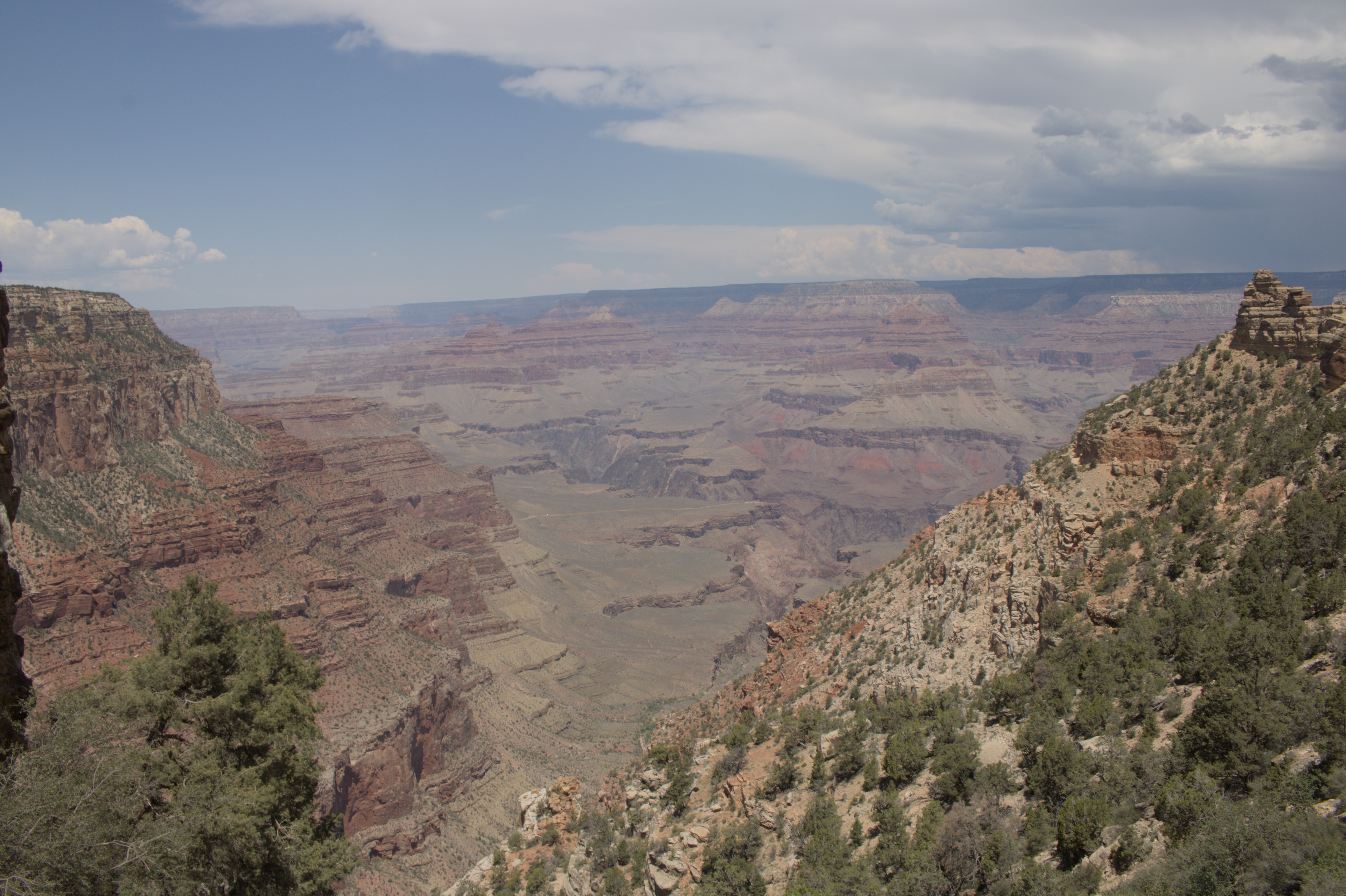
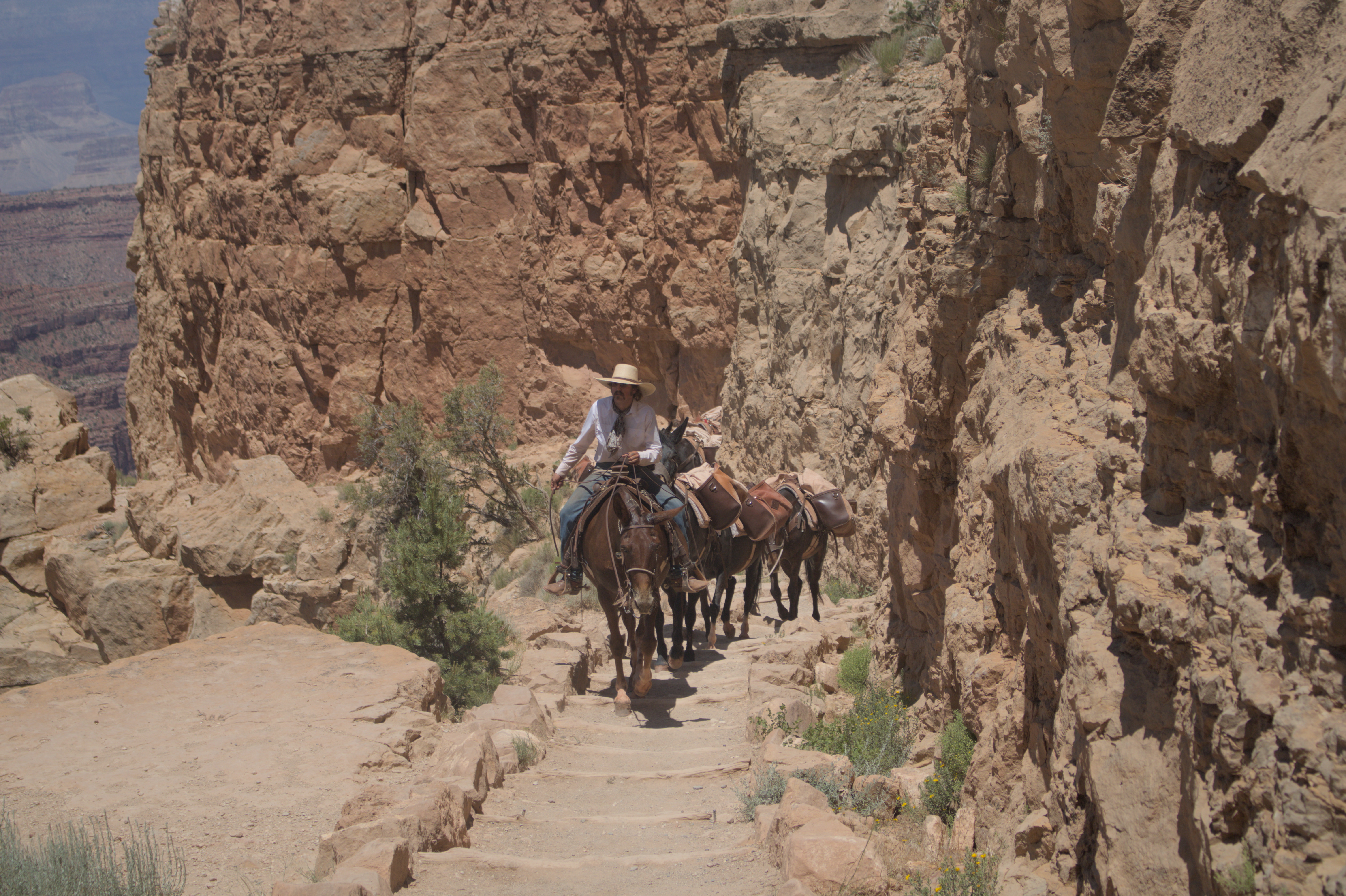
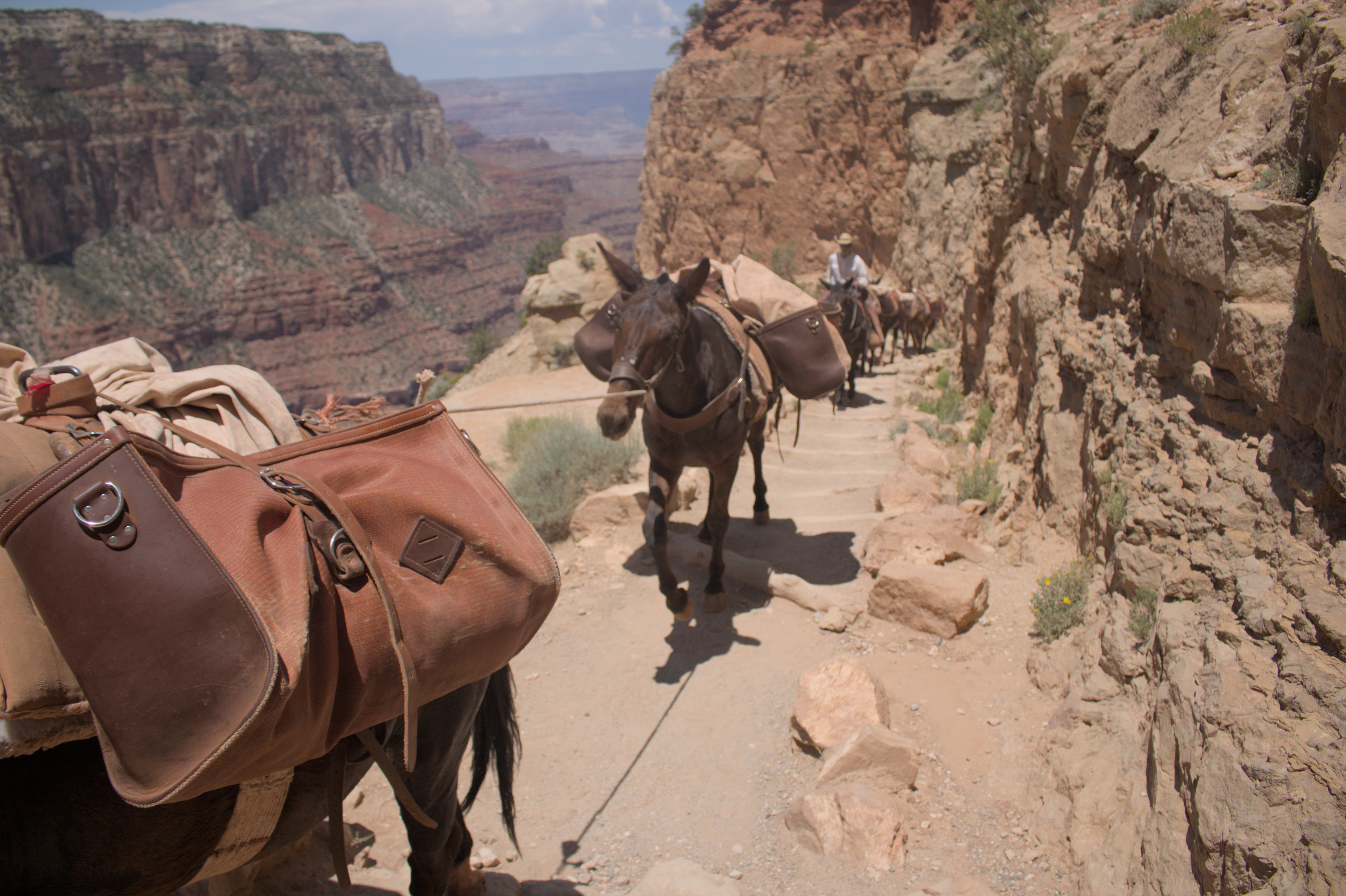
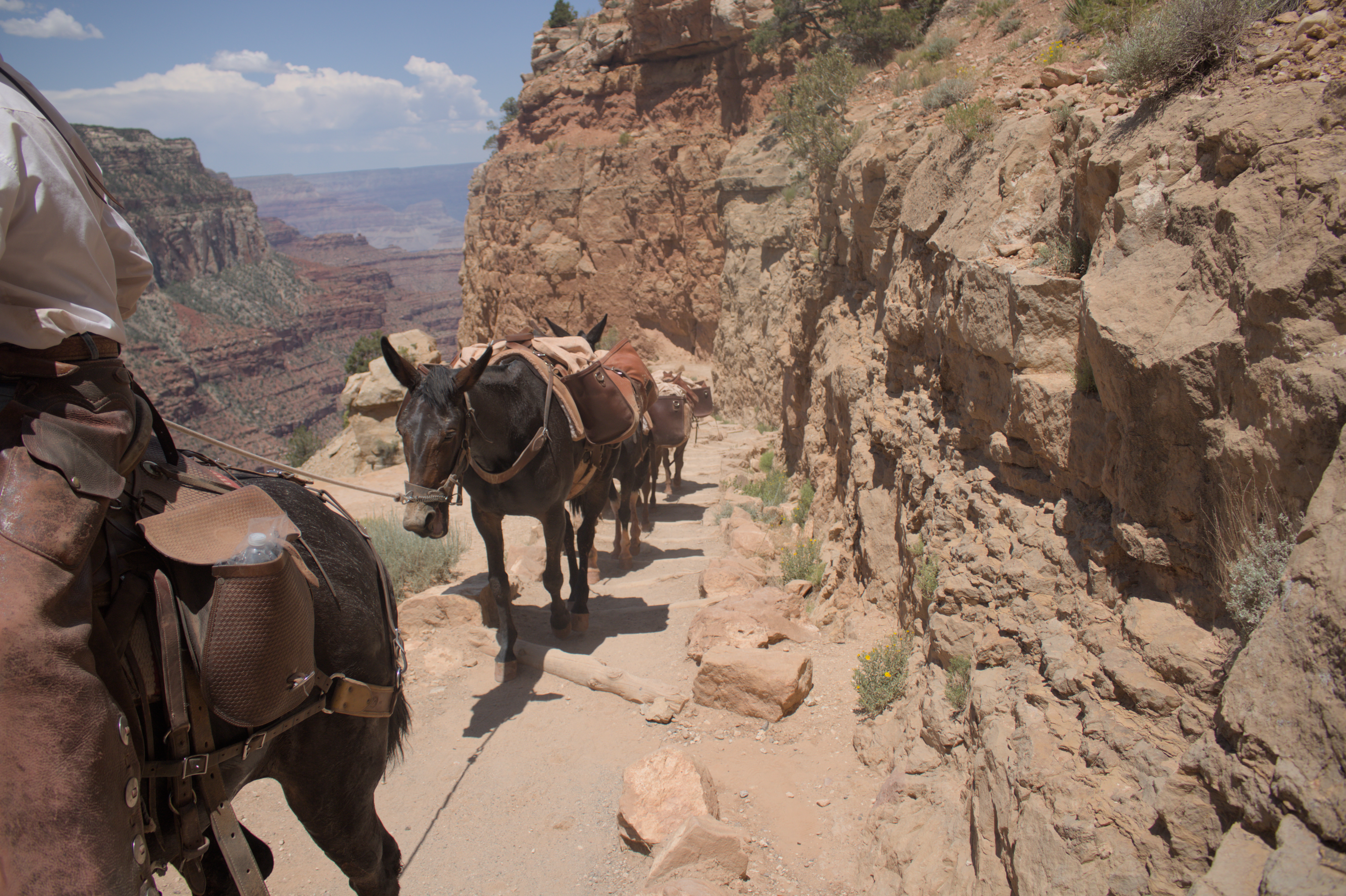
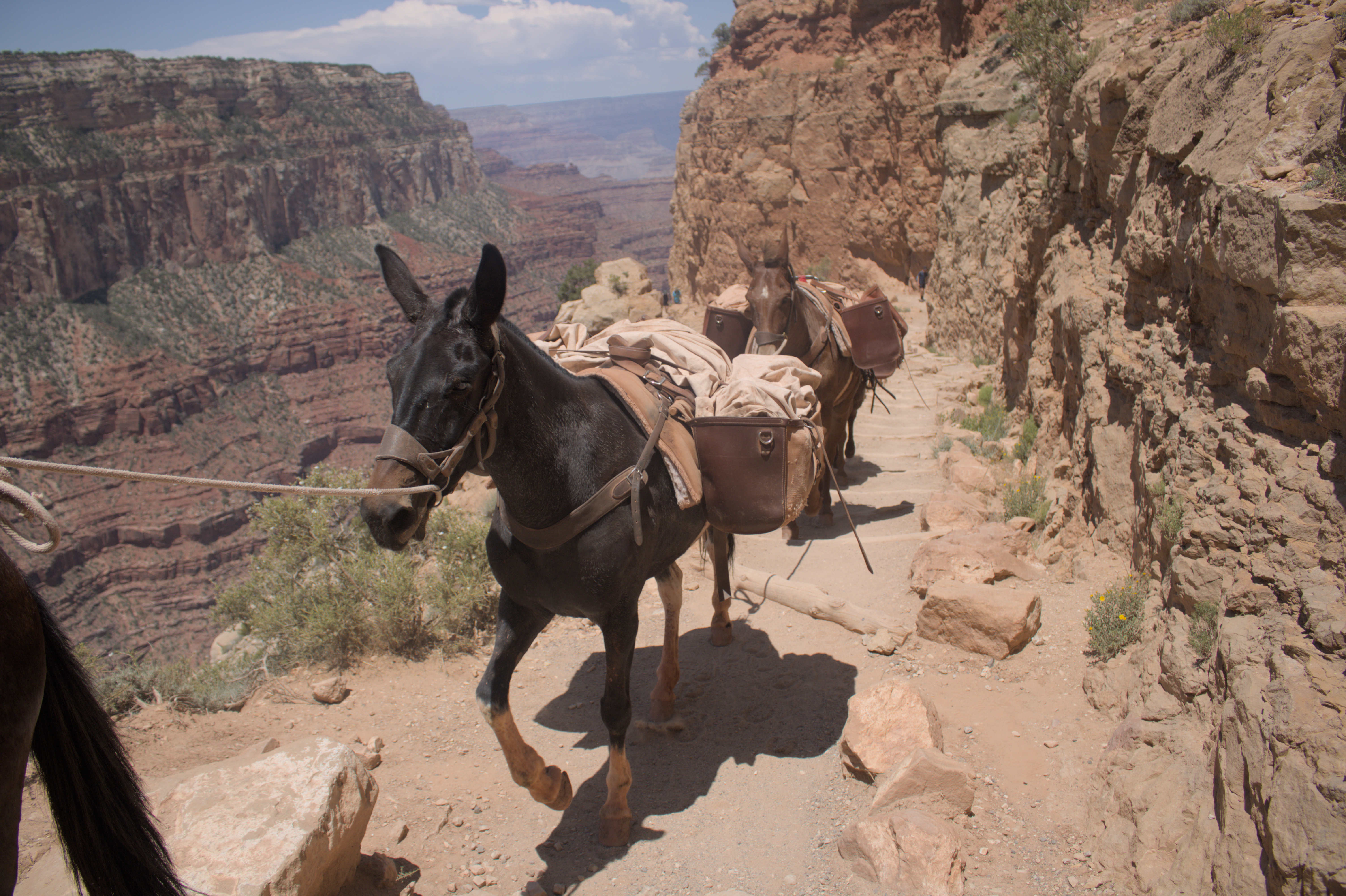
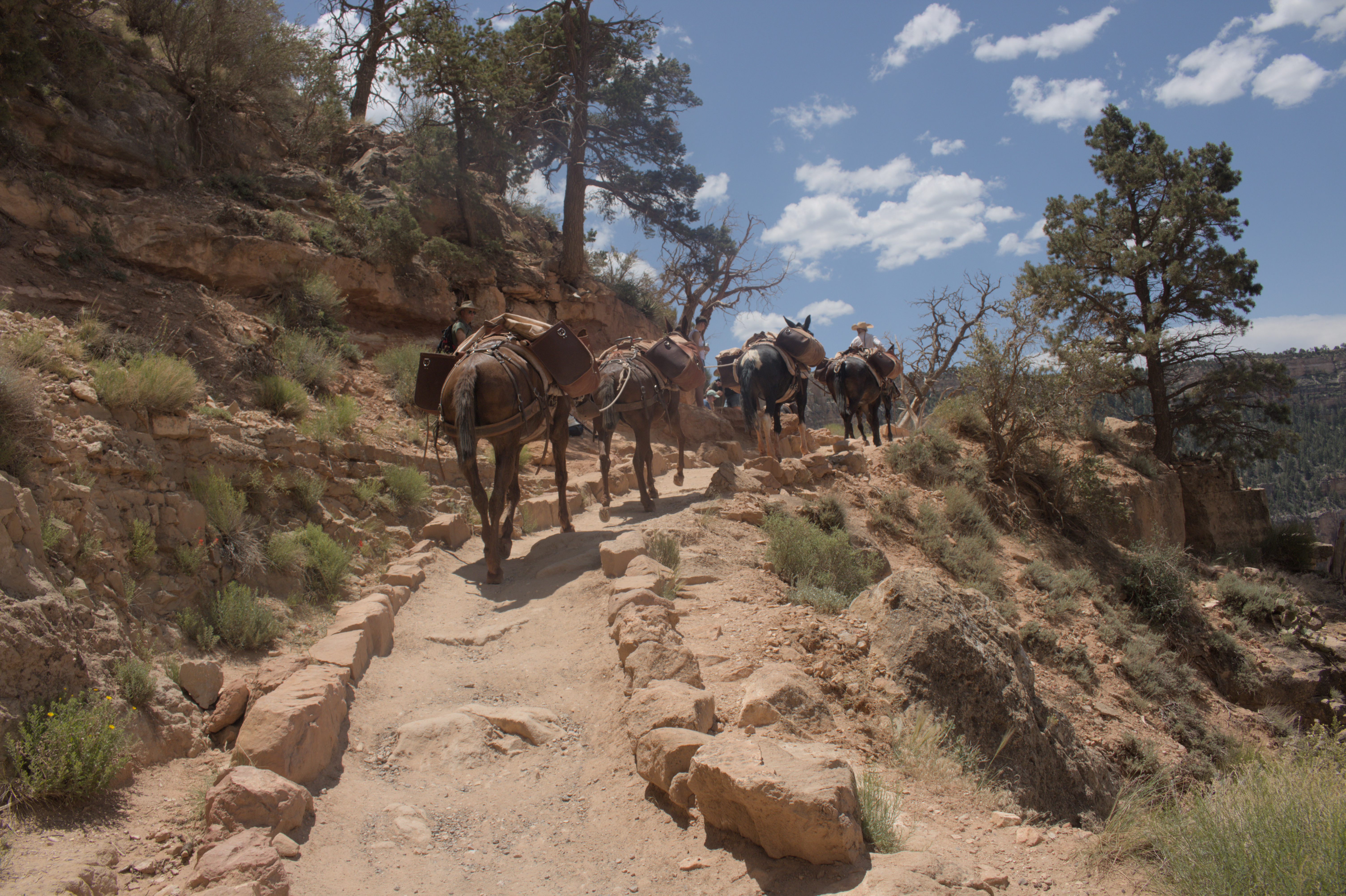
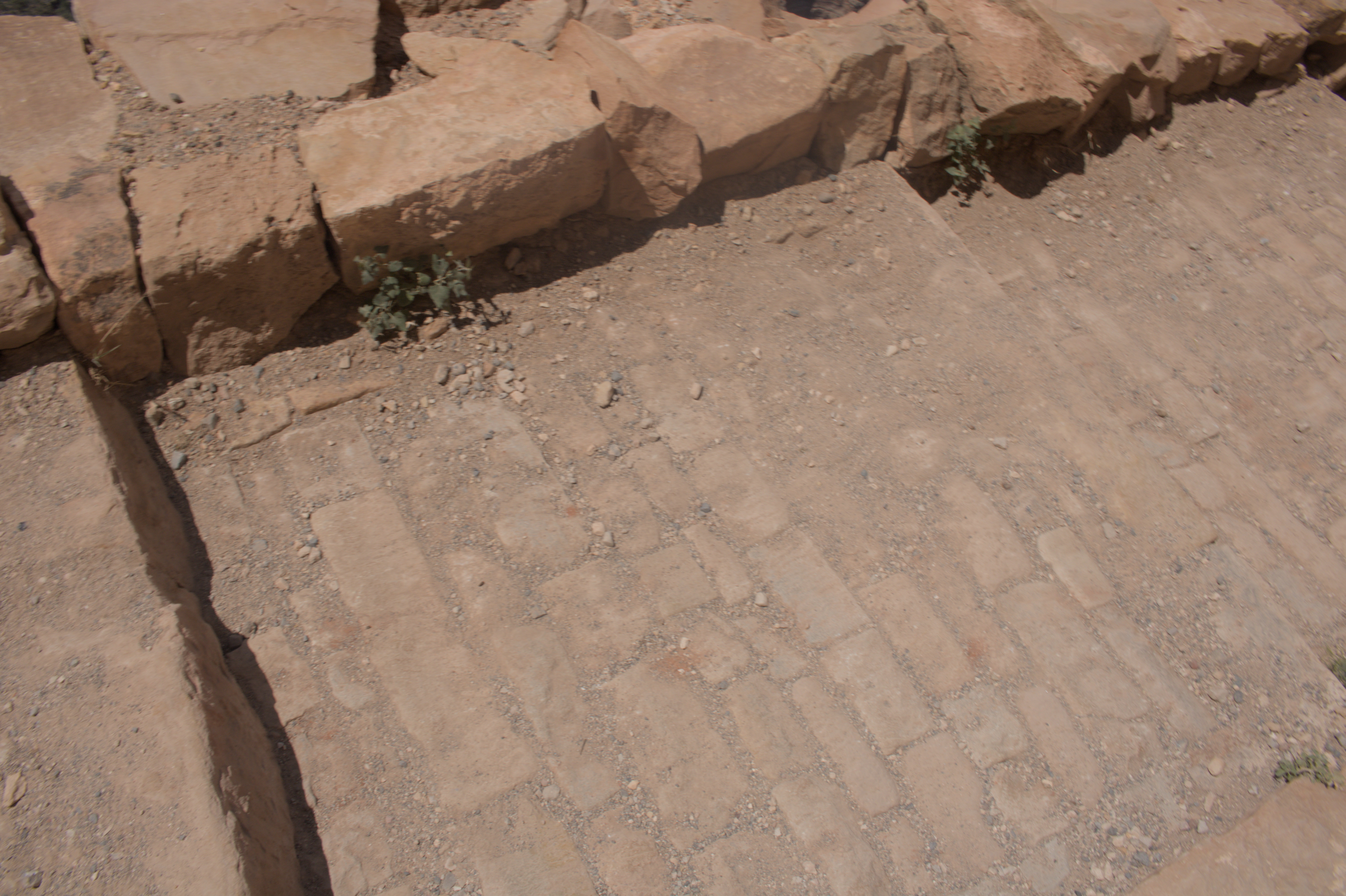
I loved seeing the mules at work in the Grand Canyon. They do a few jobs. For one, you can book a mule ride for a casual $185.56/person1. They also carry equipment and supplies to the canyon floor, which is what I believe is happening here. In this case, I believe they’re coming back from the 7.5 mile route2 across the South Kaibab Trail to get to Phantom Ranch, which is the only lodging below the canyon rim.
Also, I want to highlight the incredibly solid trail construction. This is another example of the outstanding work by the CCC, and continues the theme of durability we talked about earlier: it’s lasted ~100 years, and it’s likely to last at least another 100 years with light maintenance.
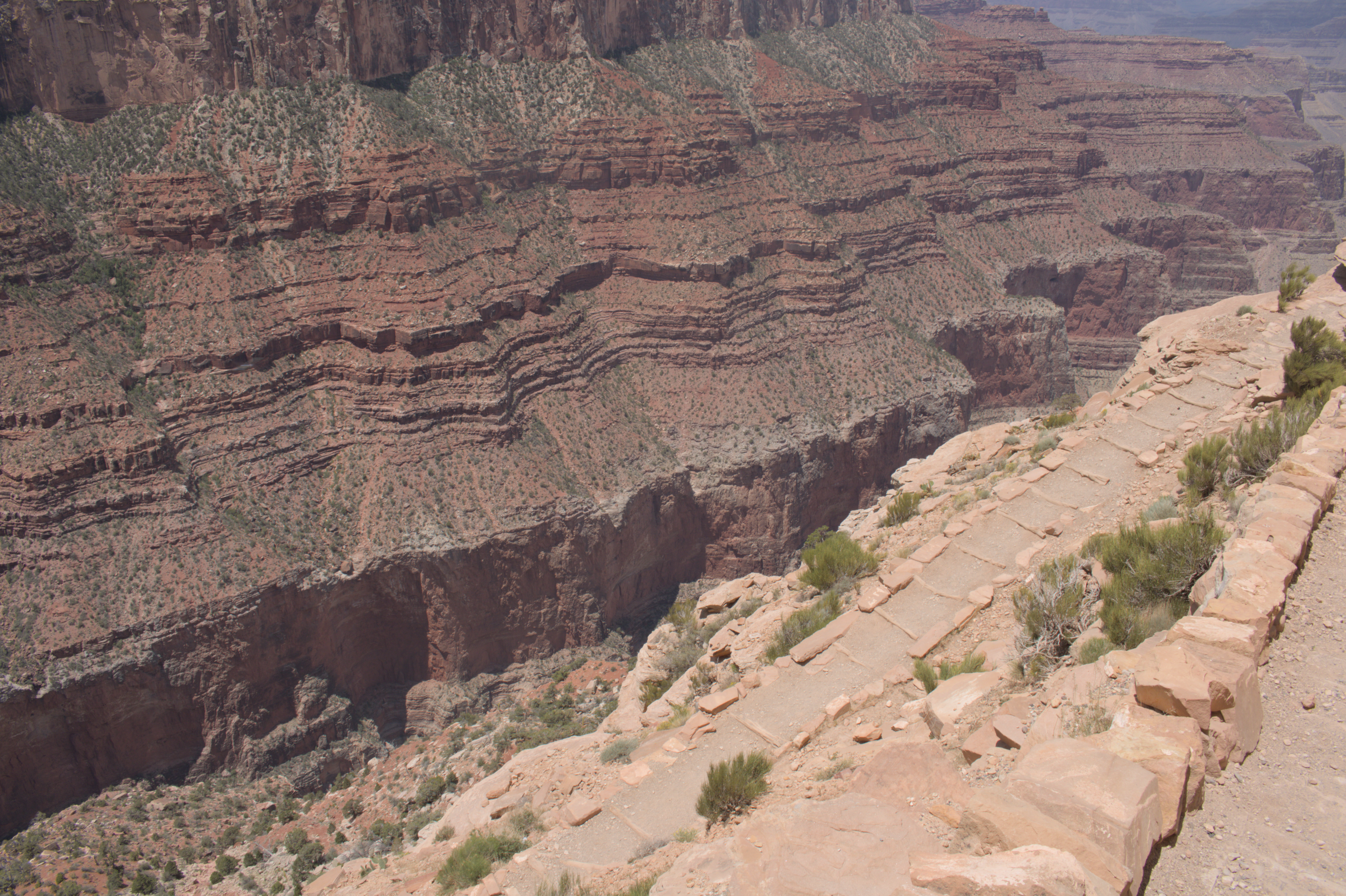
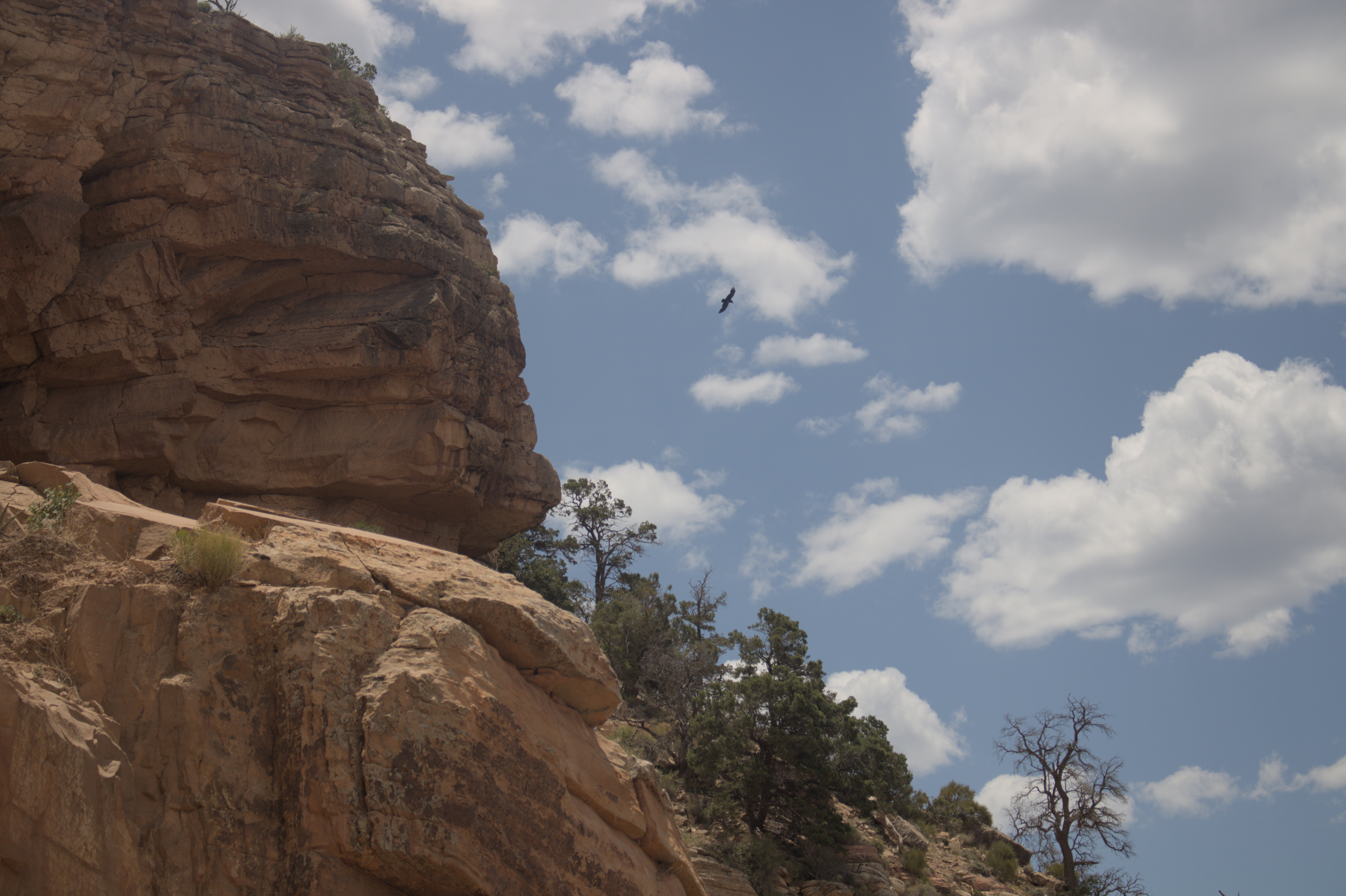
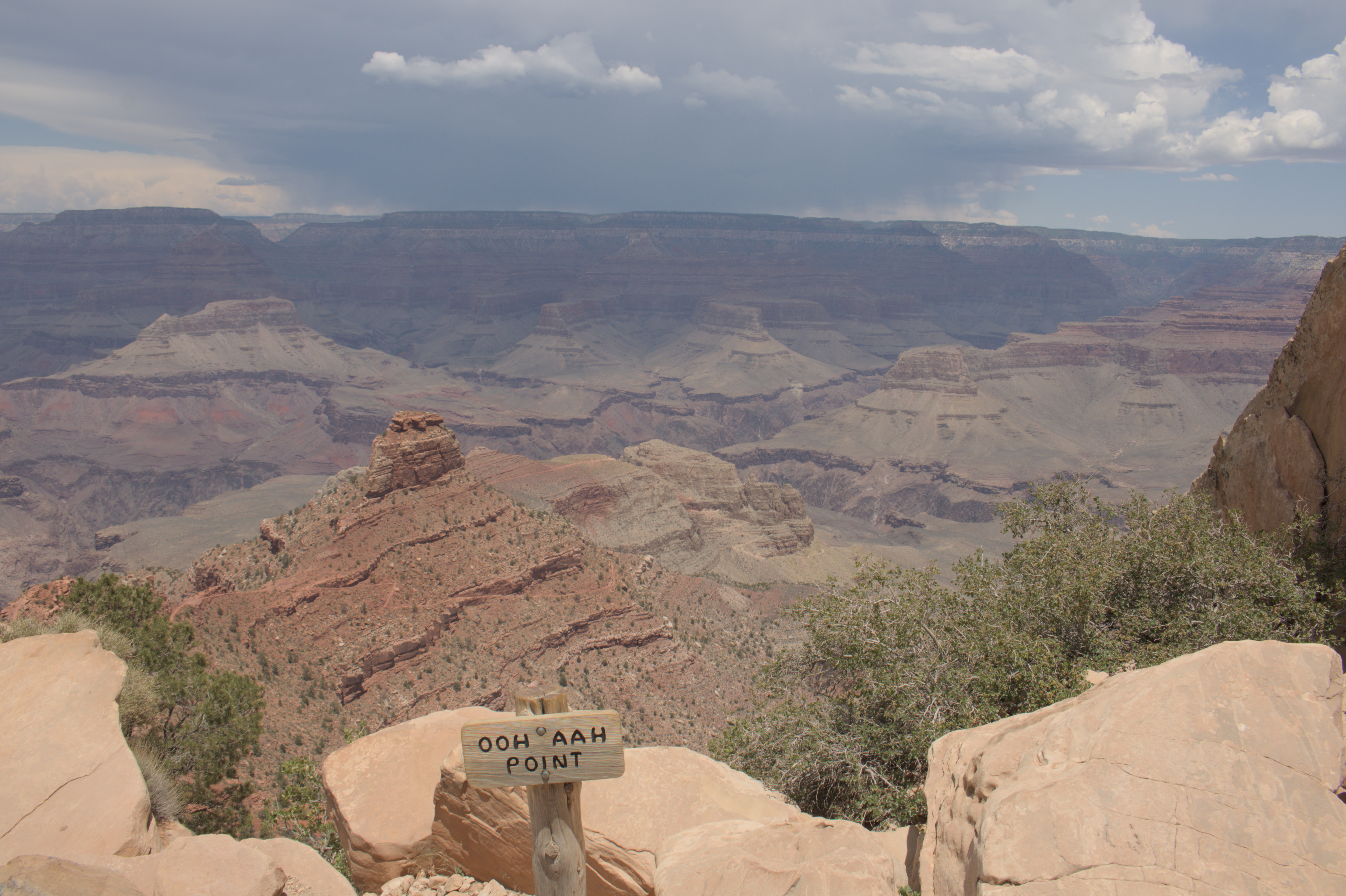
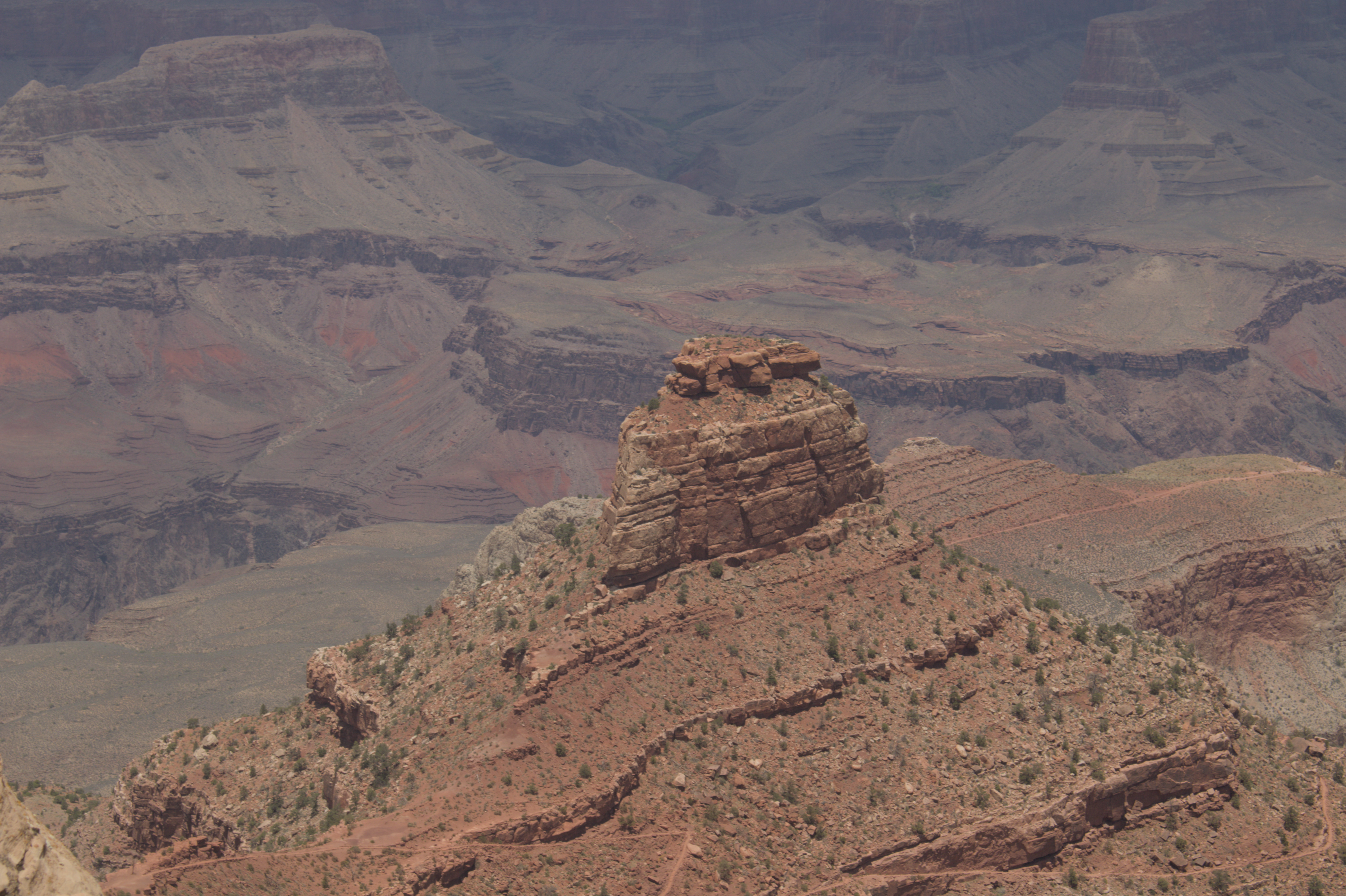
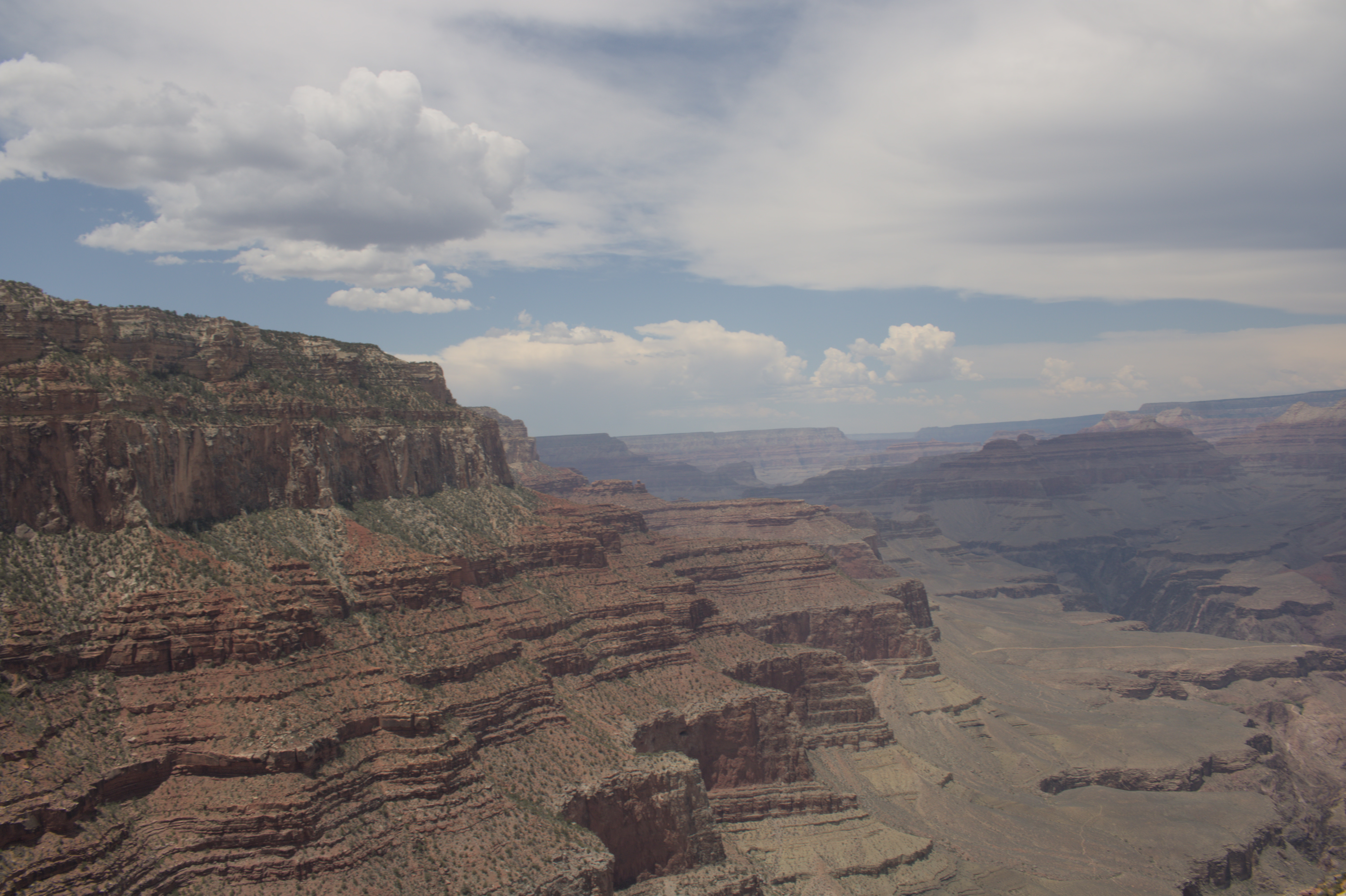
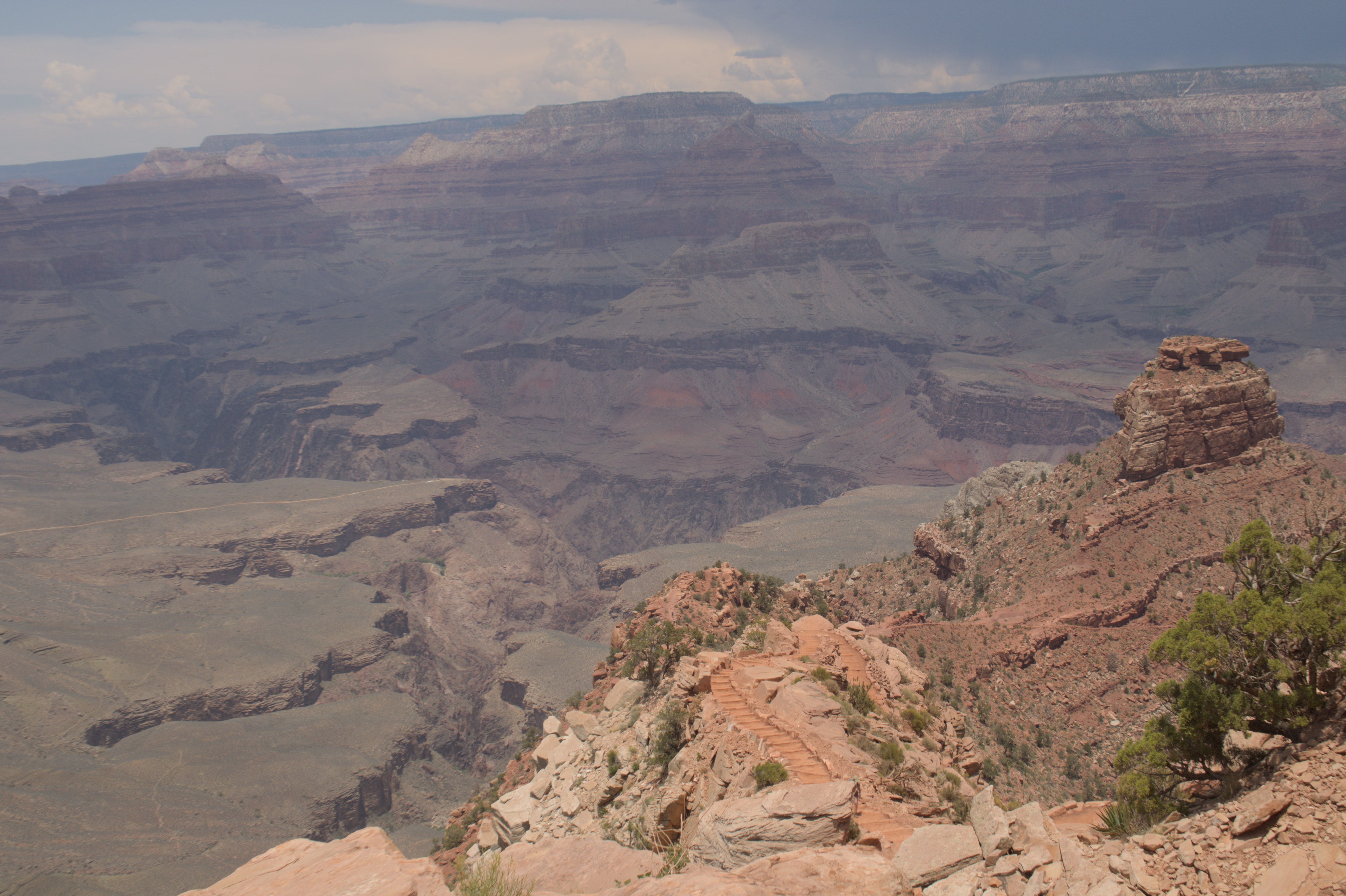
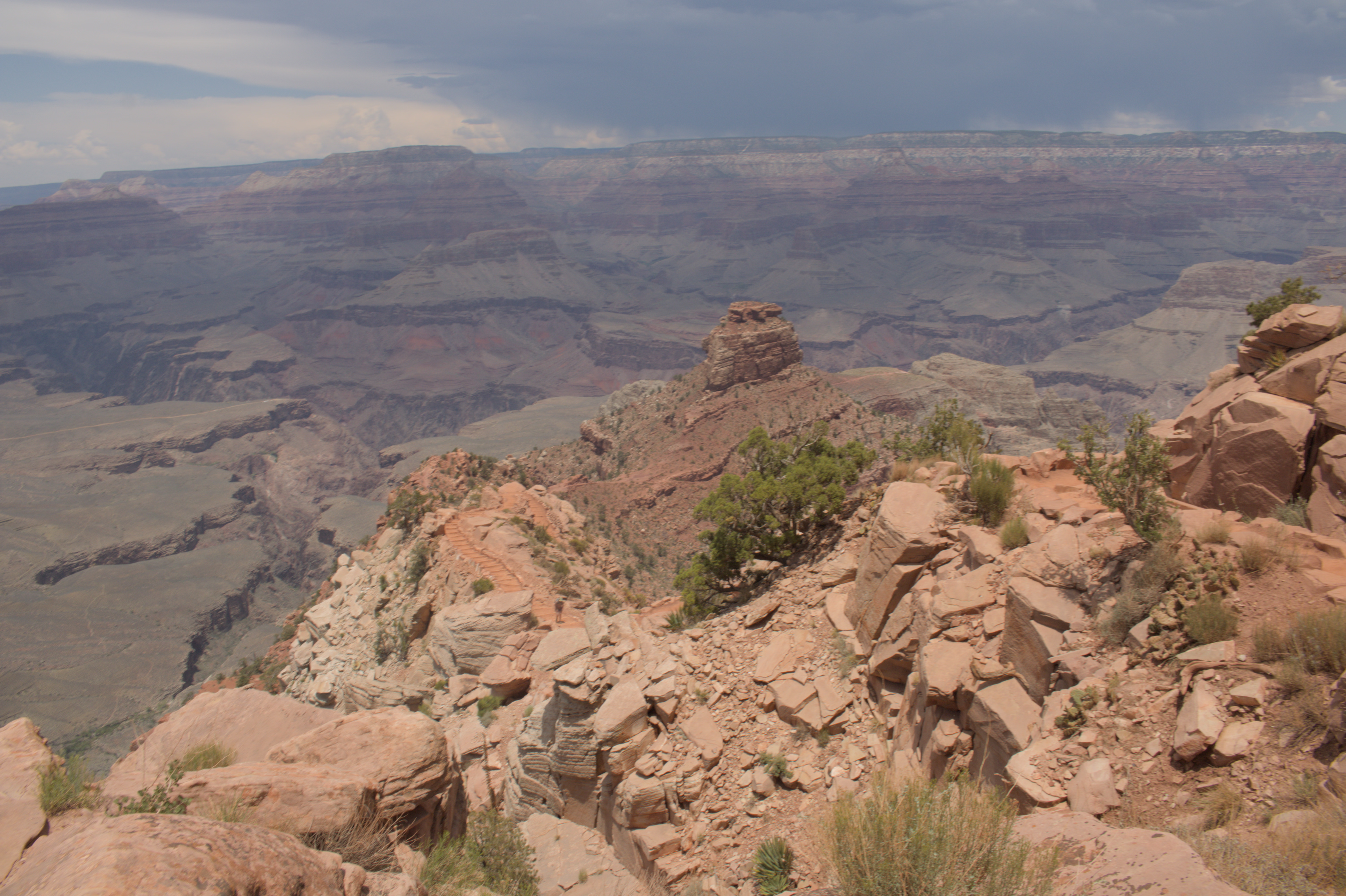
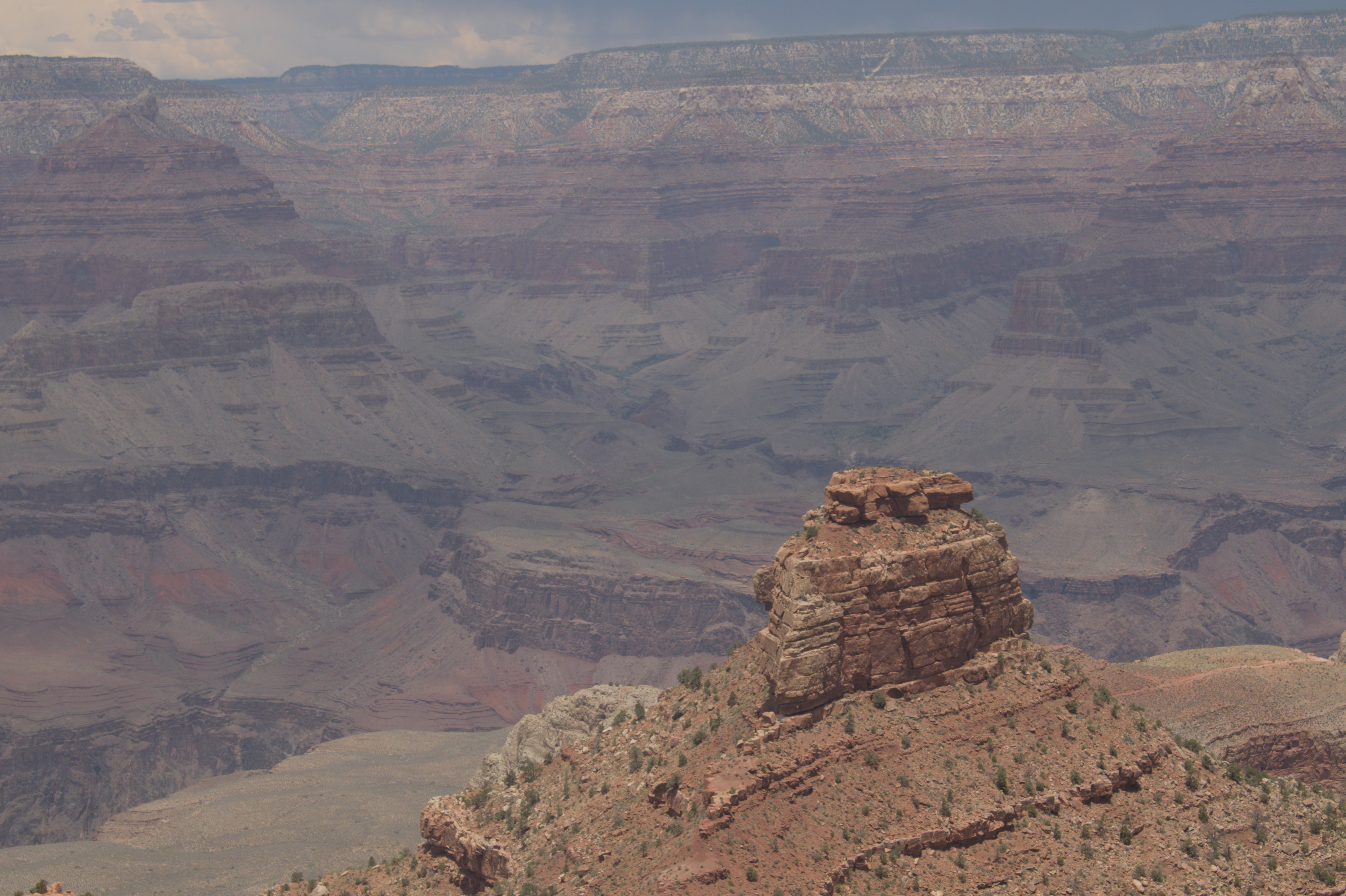
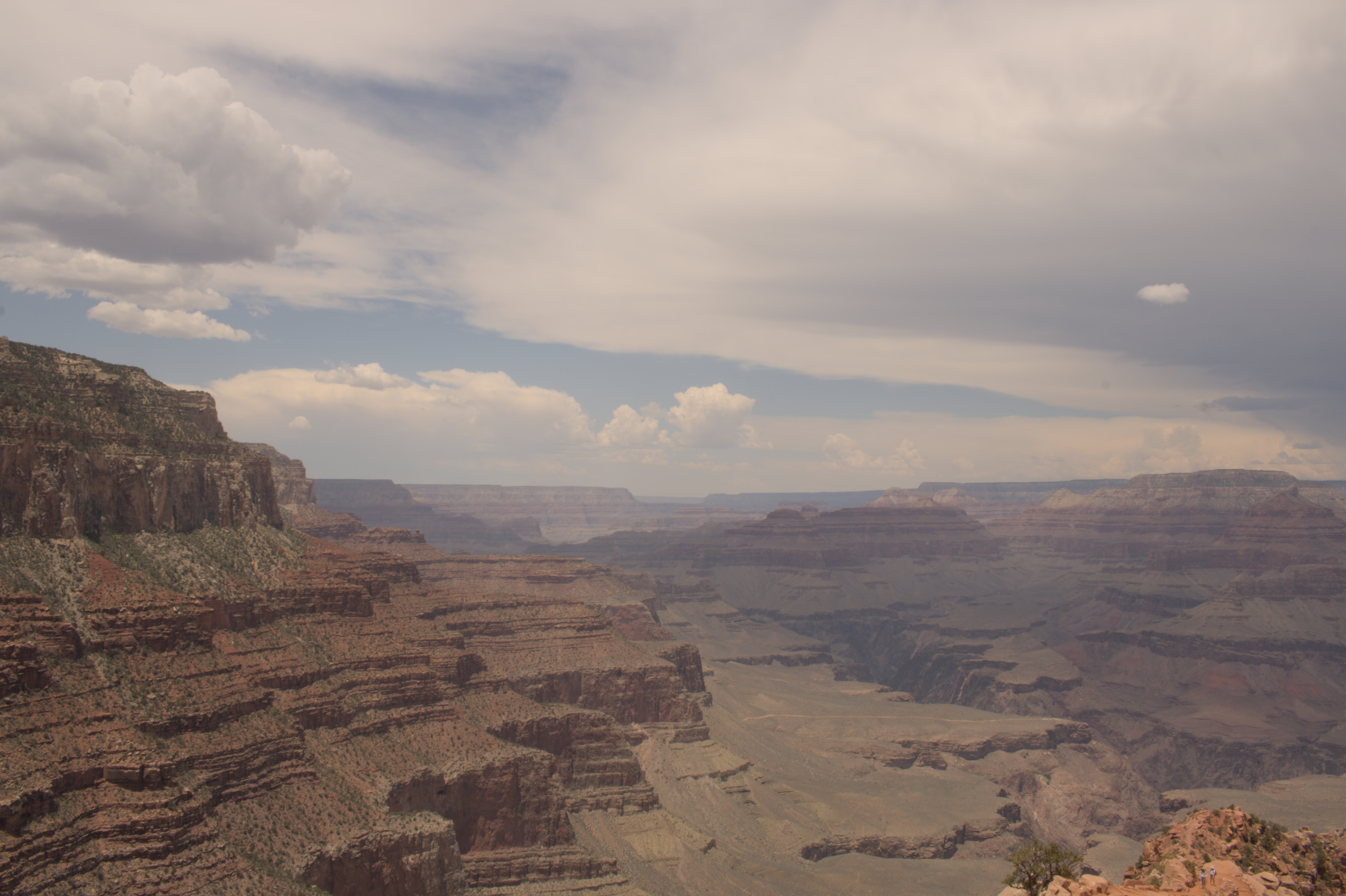
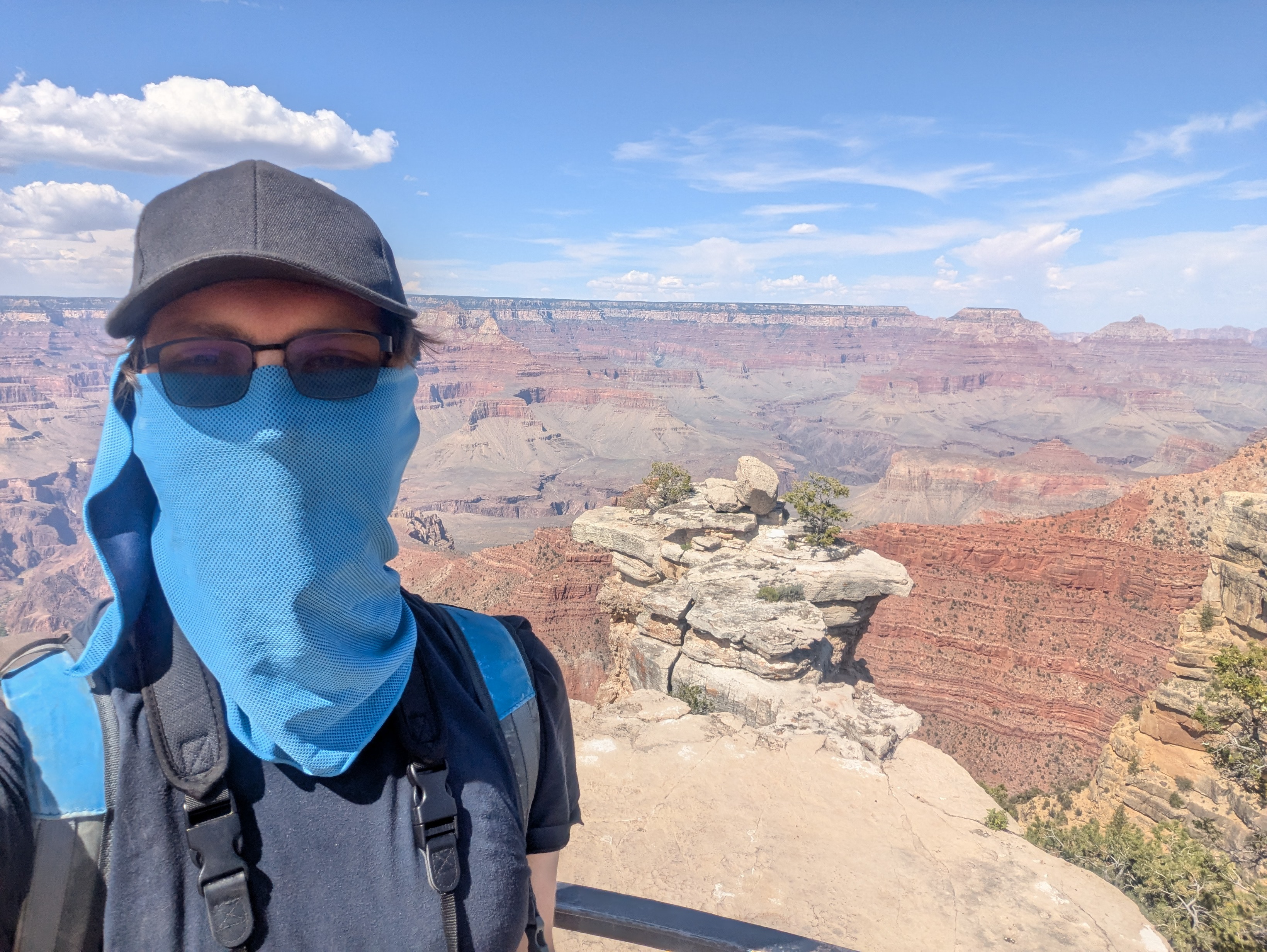
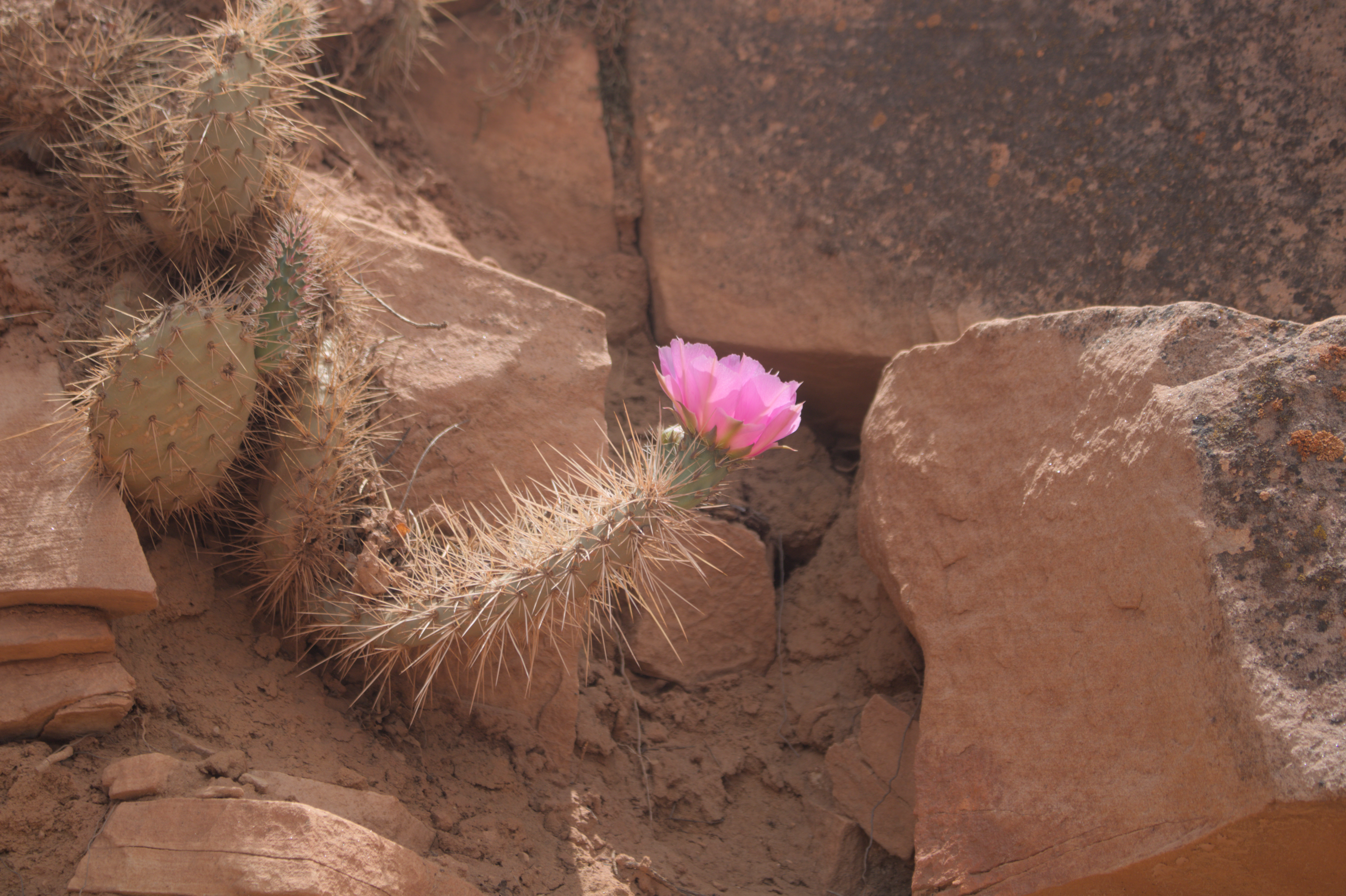
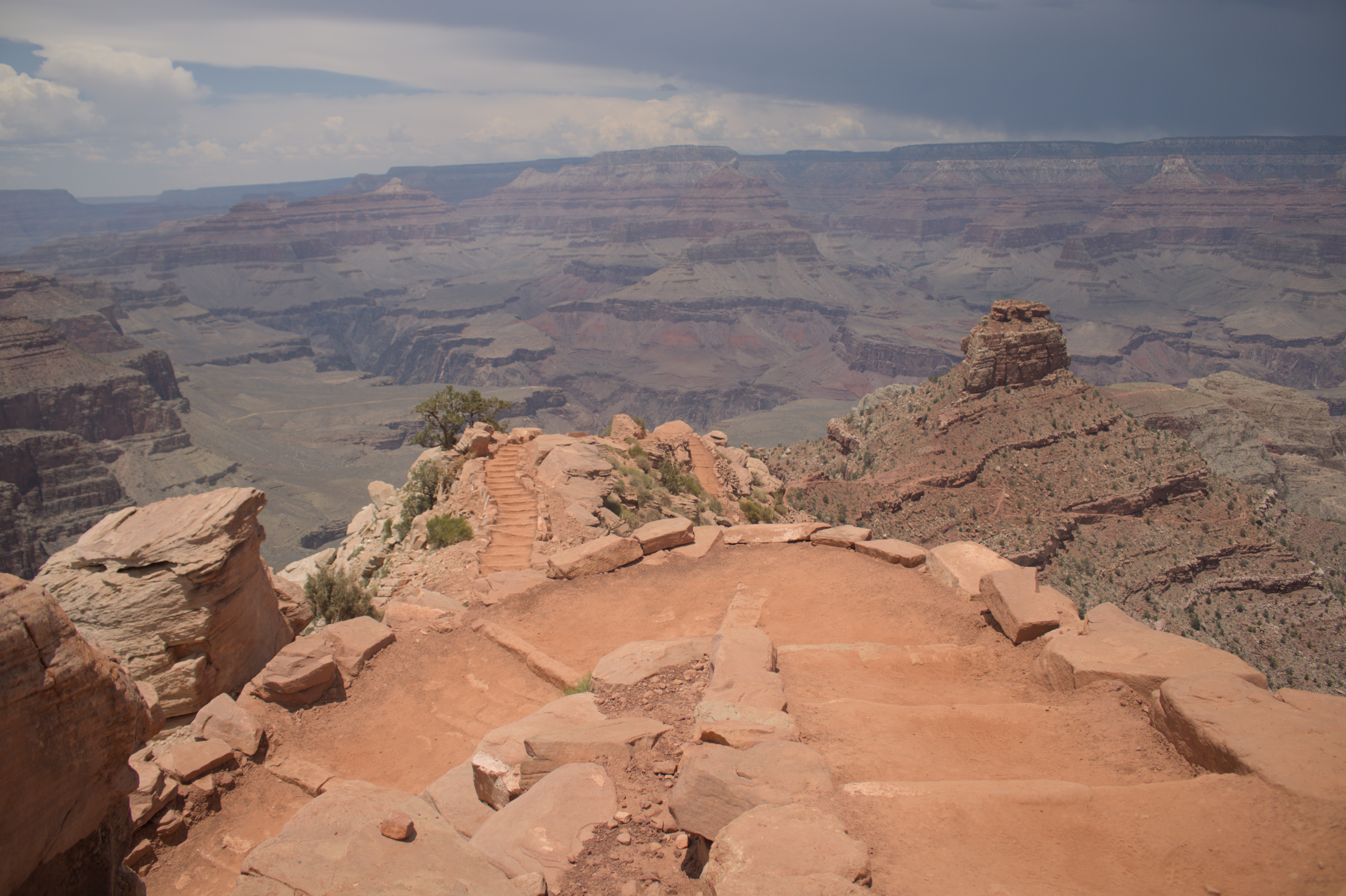
Sometimes, the scale of the Grand Canyon blends together. It’s easy to lose sight of how incredibly massive it is, compared to humans. Take a look at the picture below, and see if you can spot the two grainy specs of humanity. You can use the button below to reveal their location.
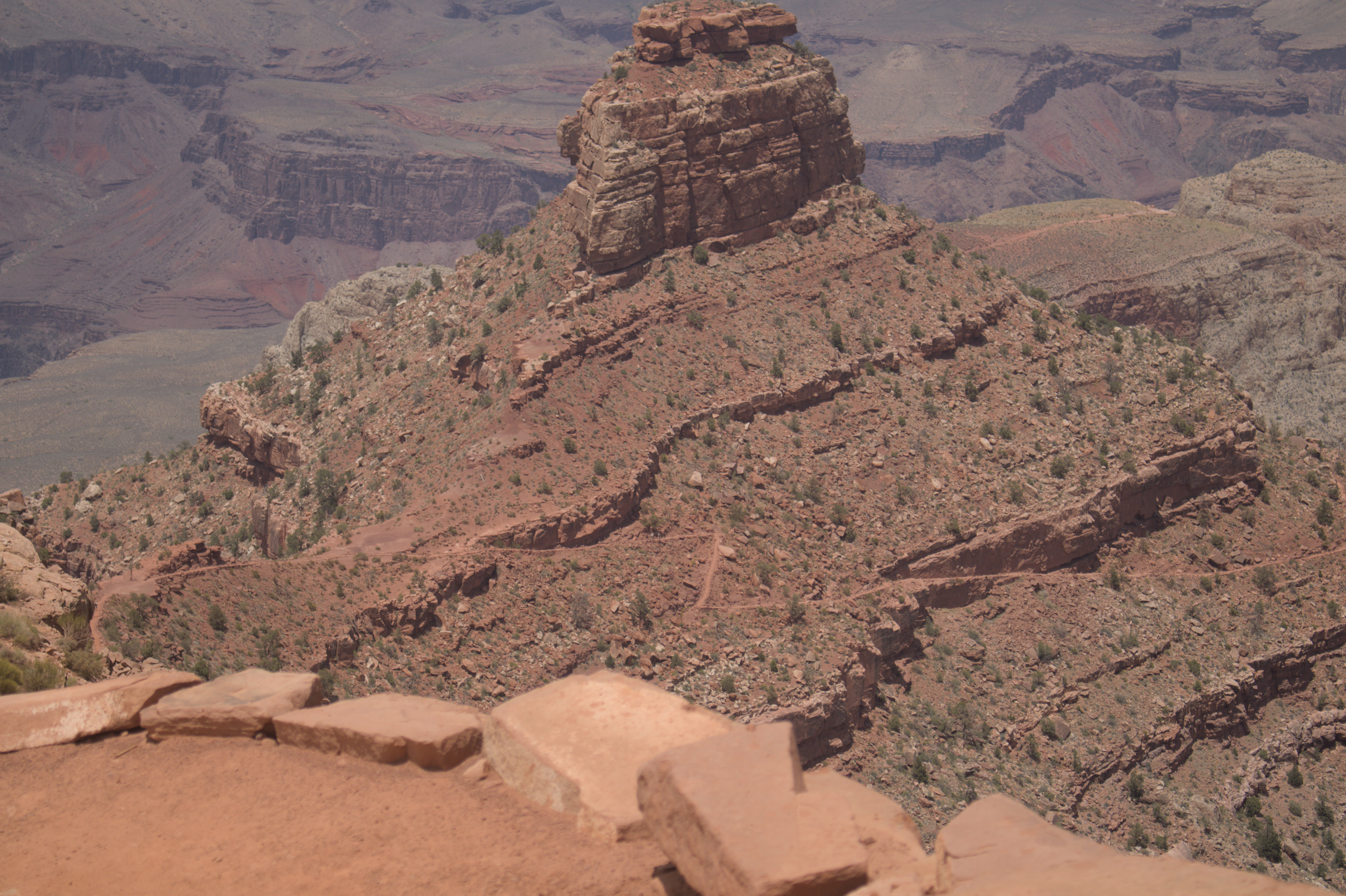
Eleven Native-American tribes, including the Basketmaker-Pueblo, Hopi, Hualapai, and Yavapai-Apache, have a history of living in or near the Grand Canyon. The history is fascinating, though I don’t feel qualified to explain it here. Nonetheless, as I see how small humans are compared to the canyon paths, I also reflect on how impressive it is that humans lived in the canyon thousands of years before there were tourist-friendly trails.
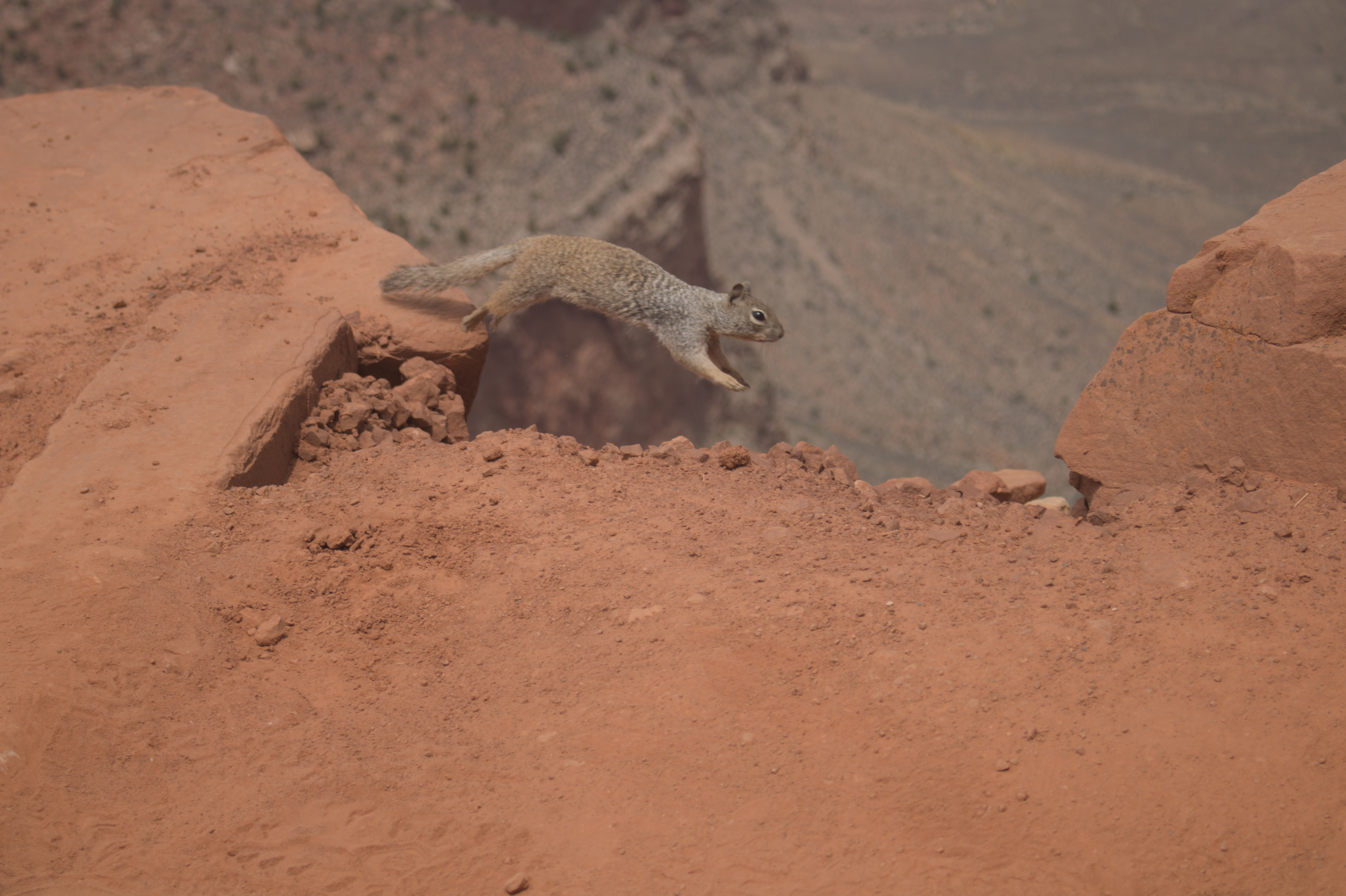
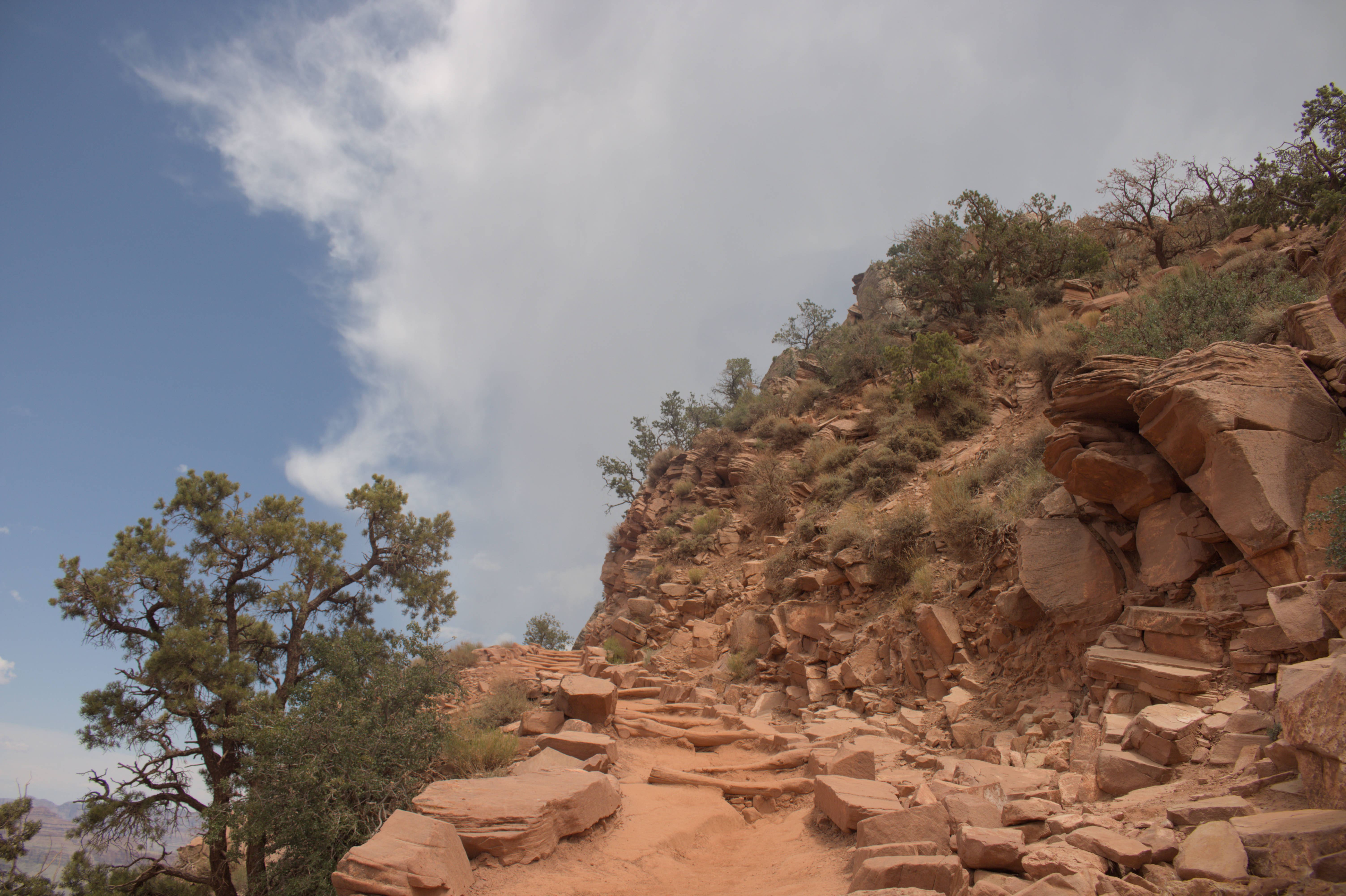
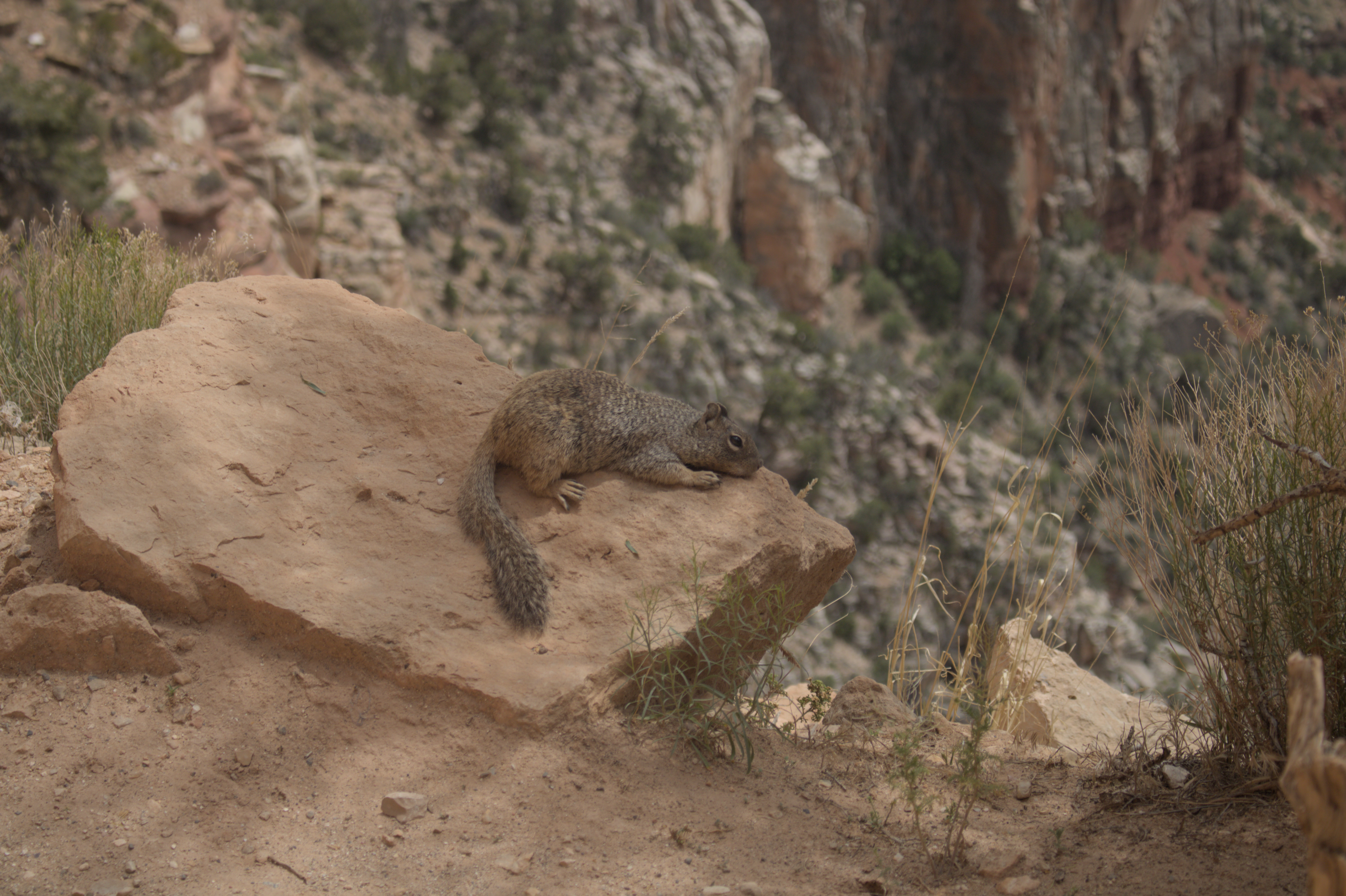
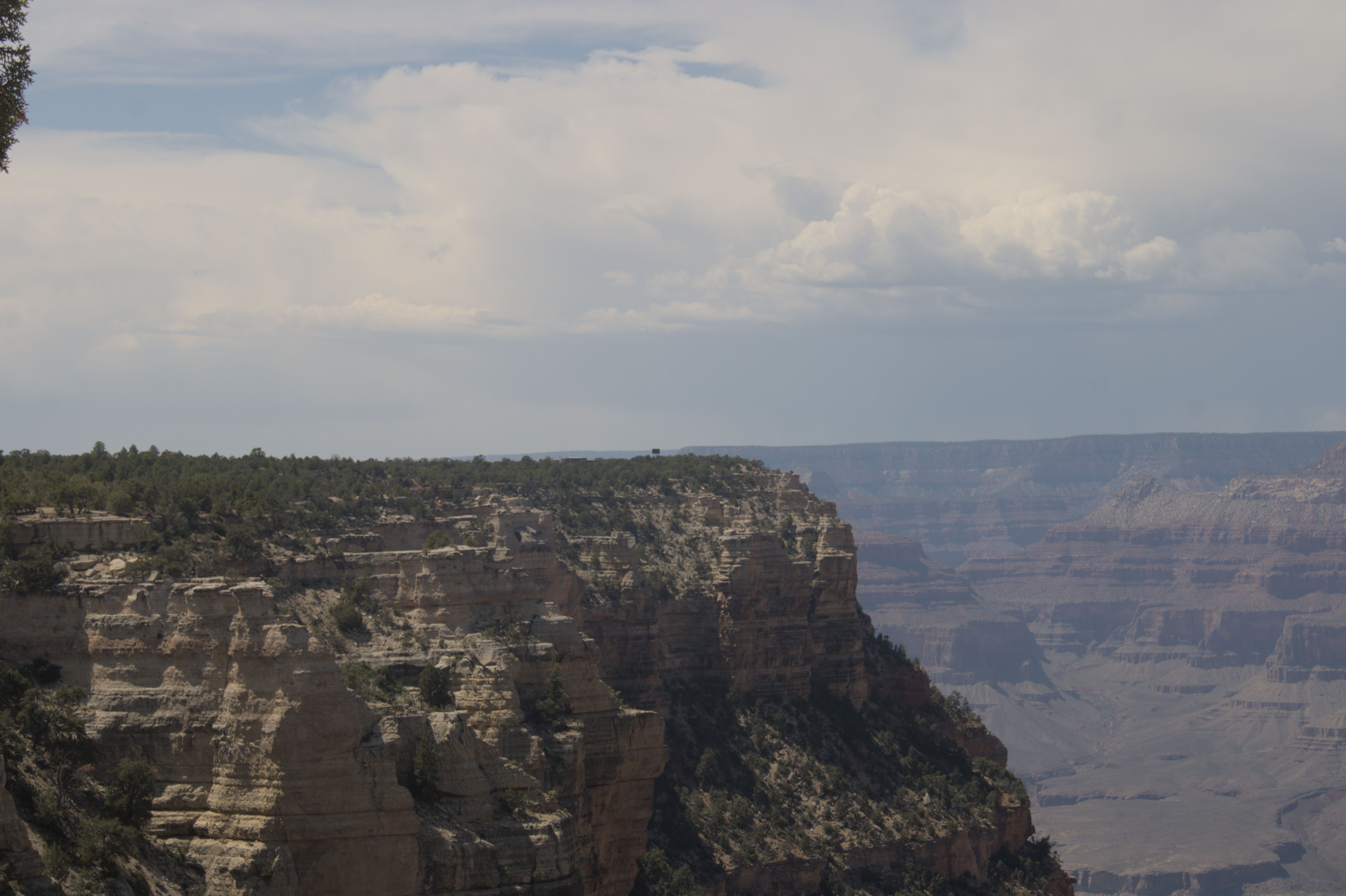
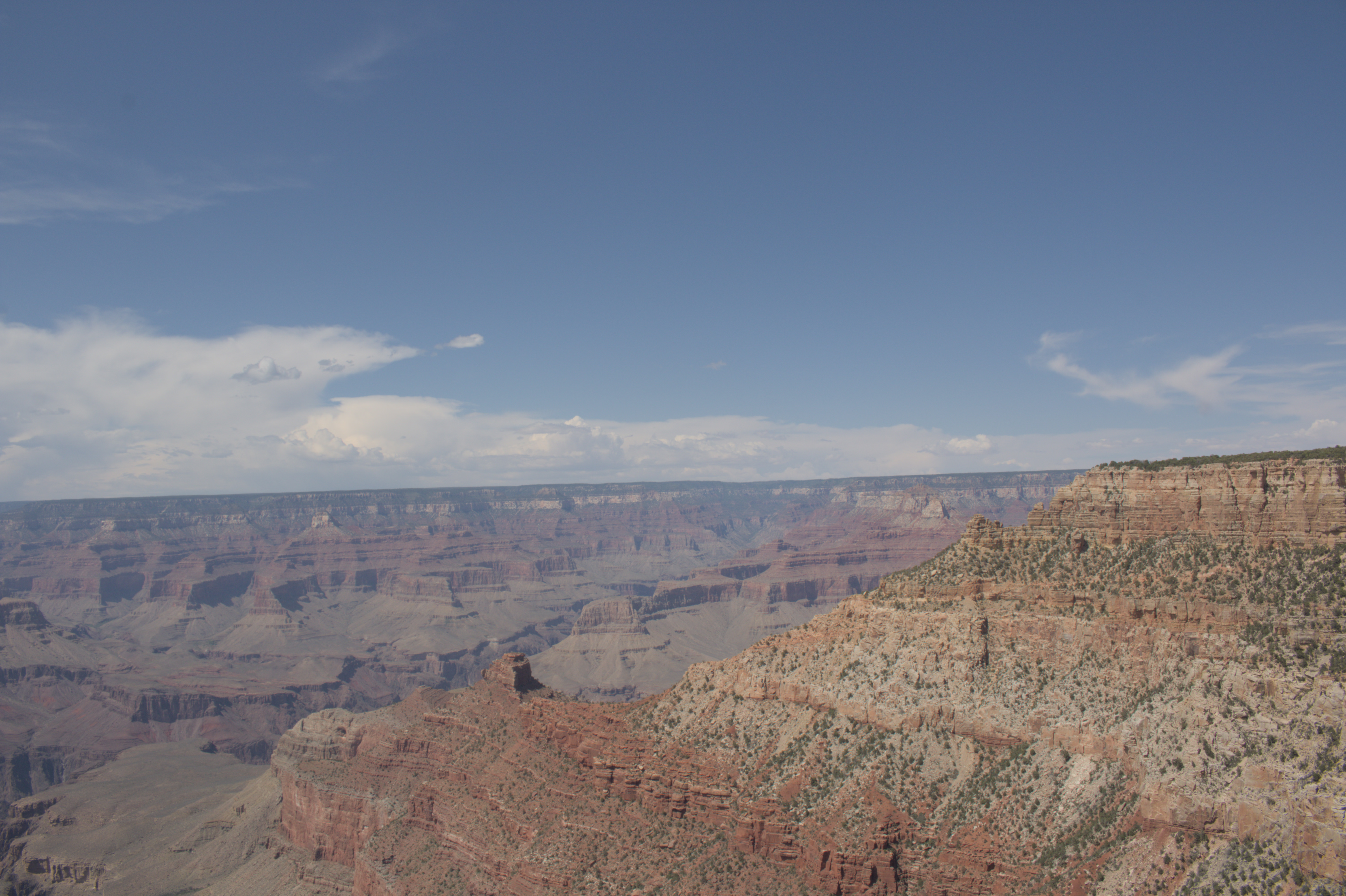
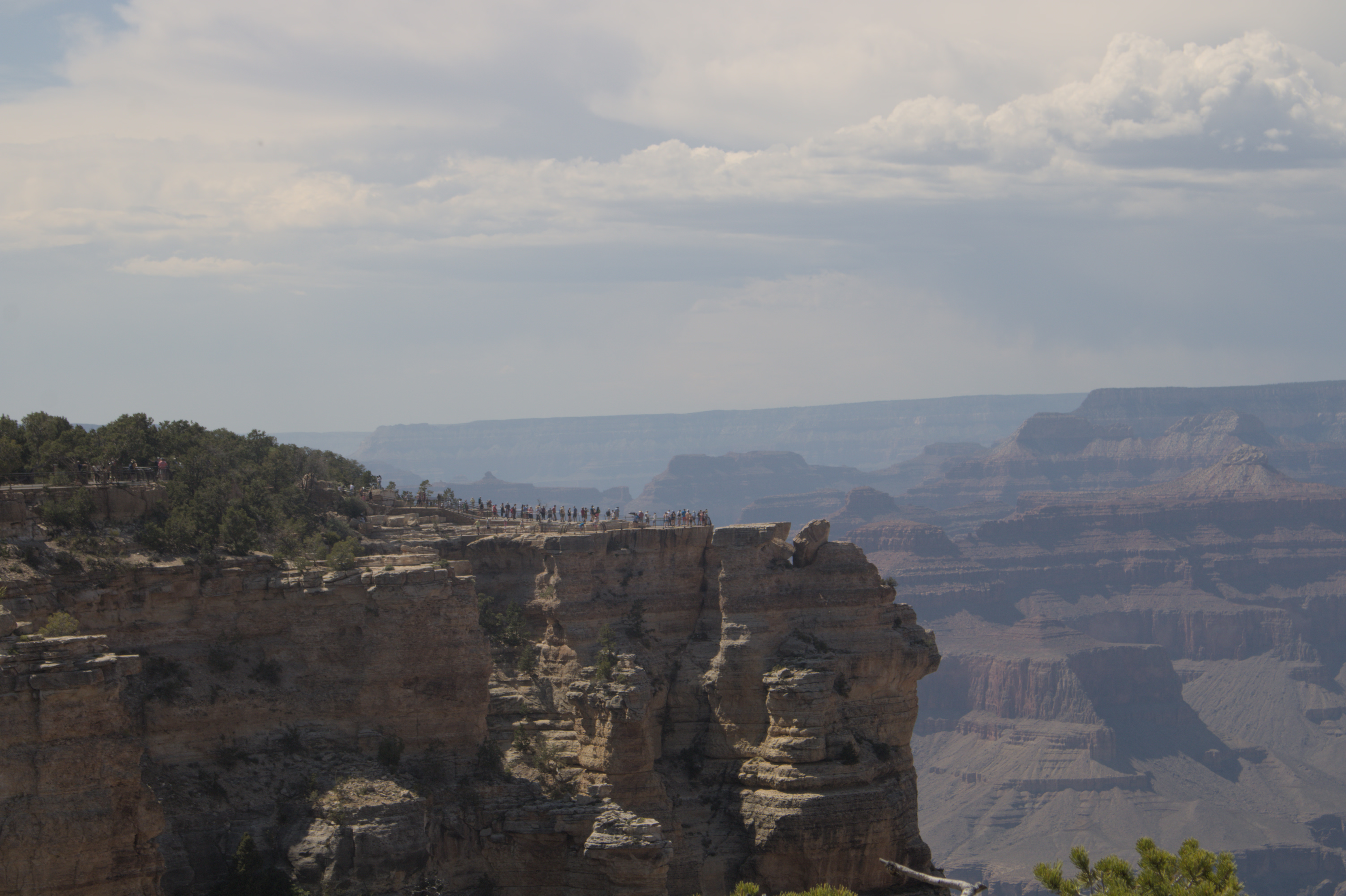
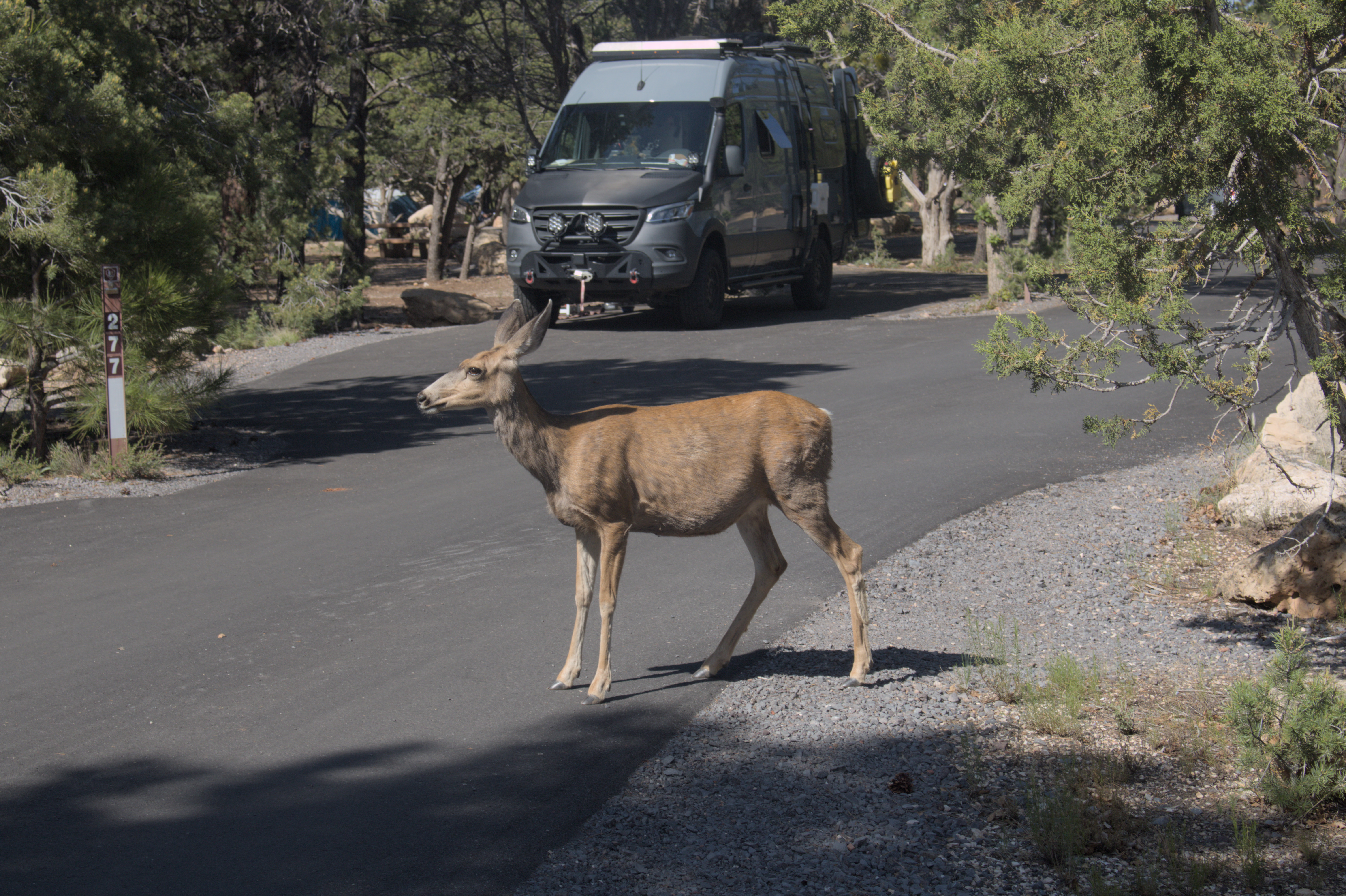
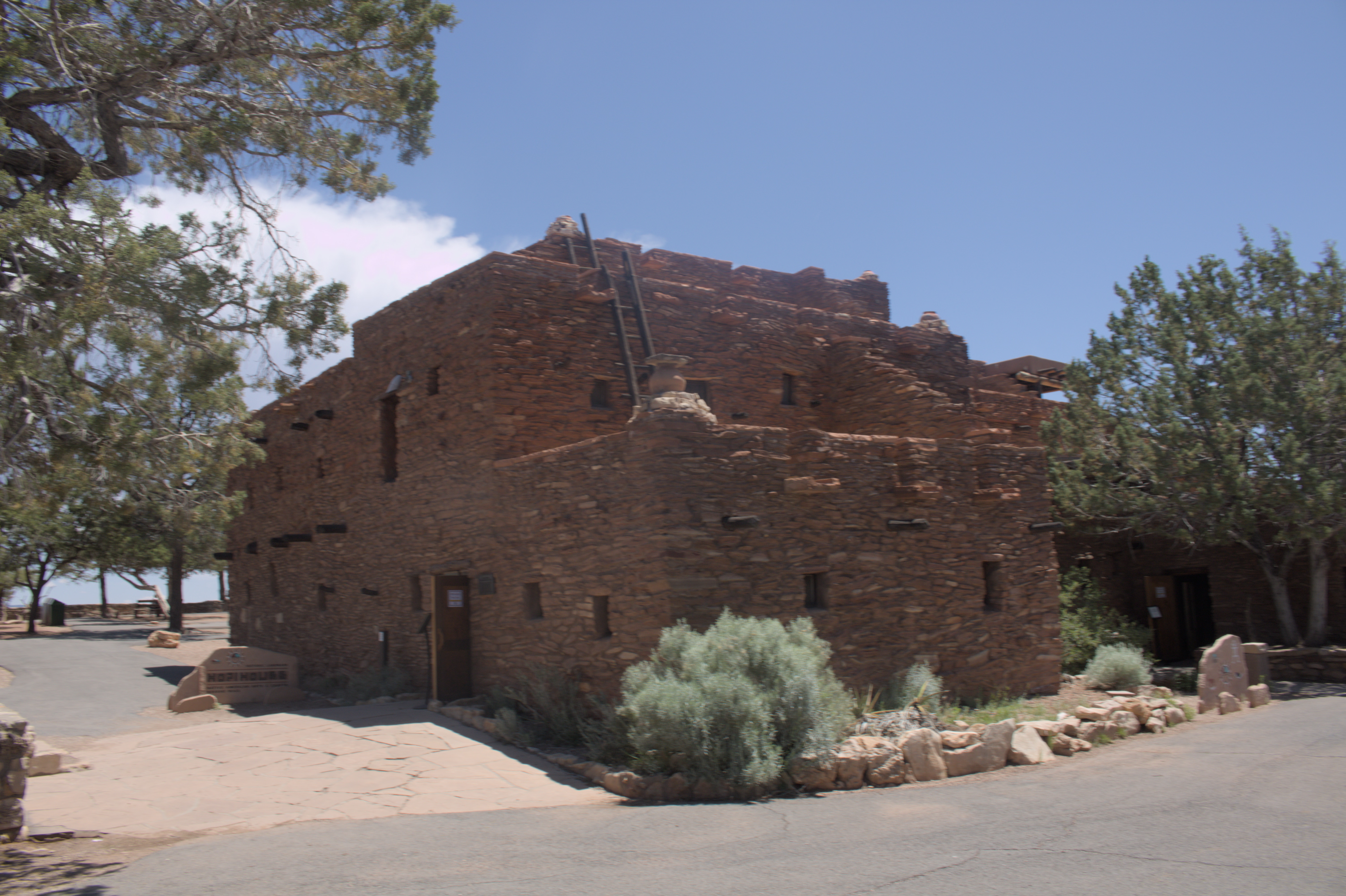
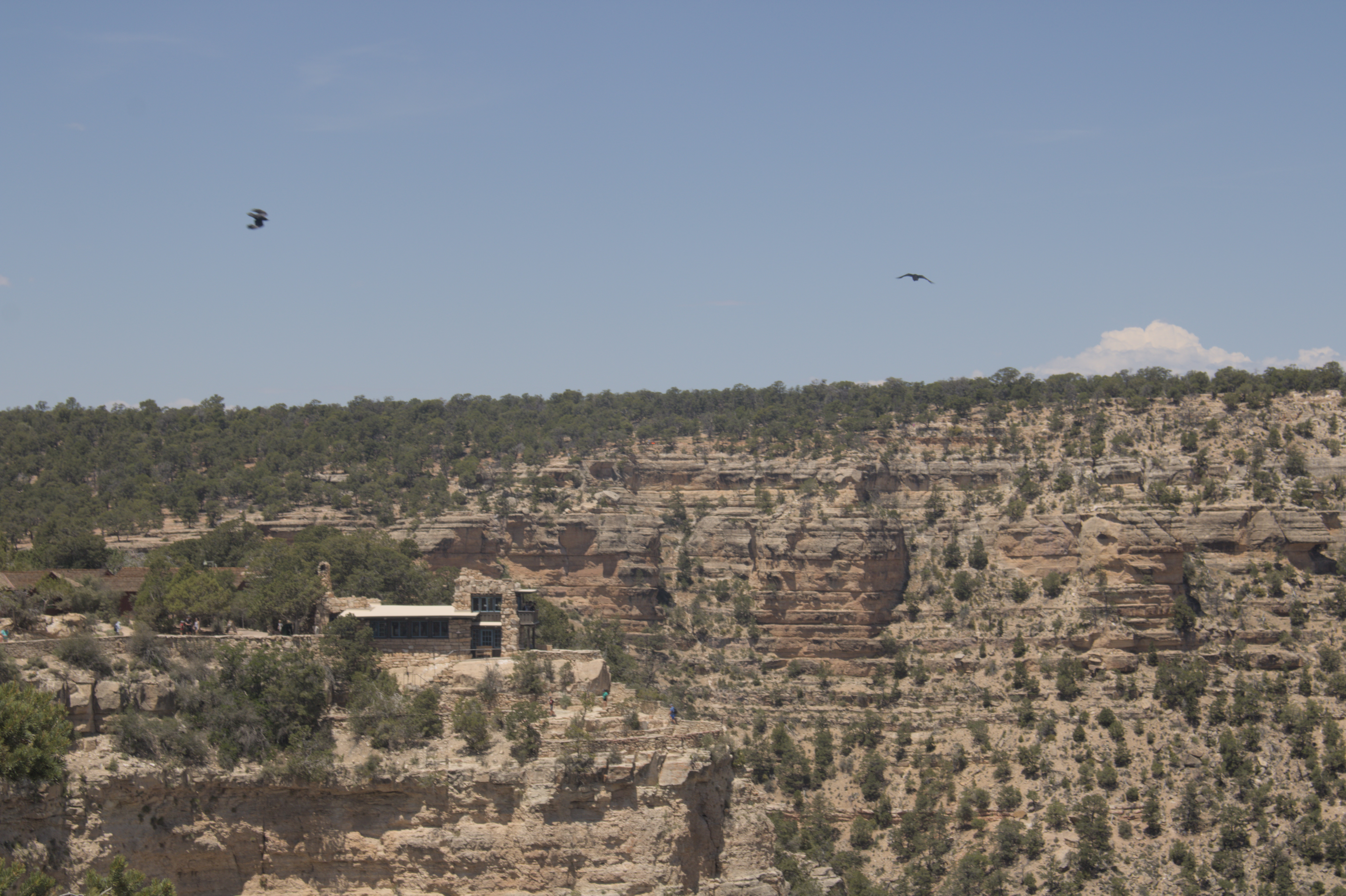
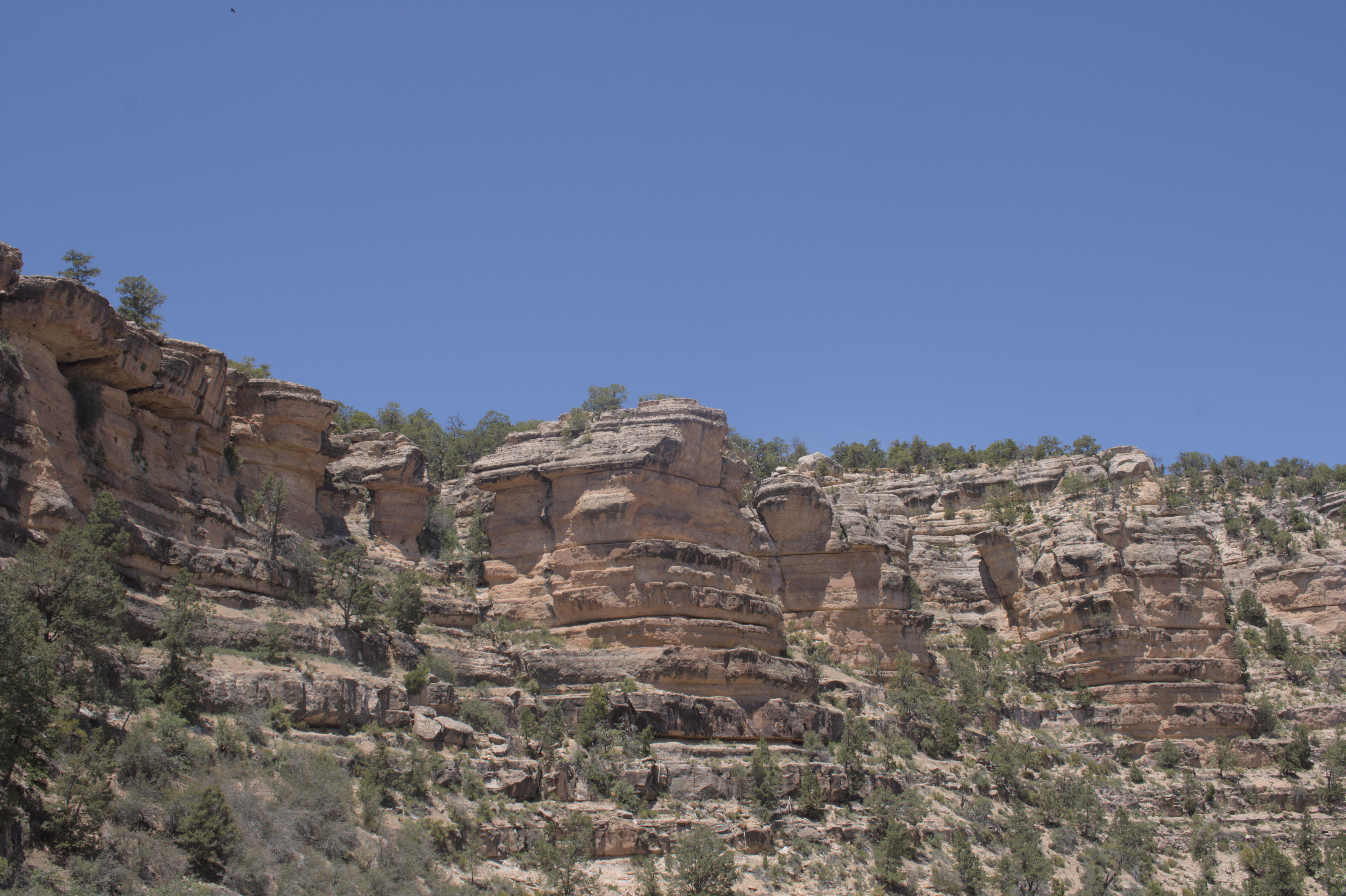
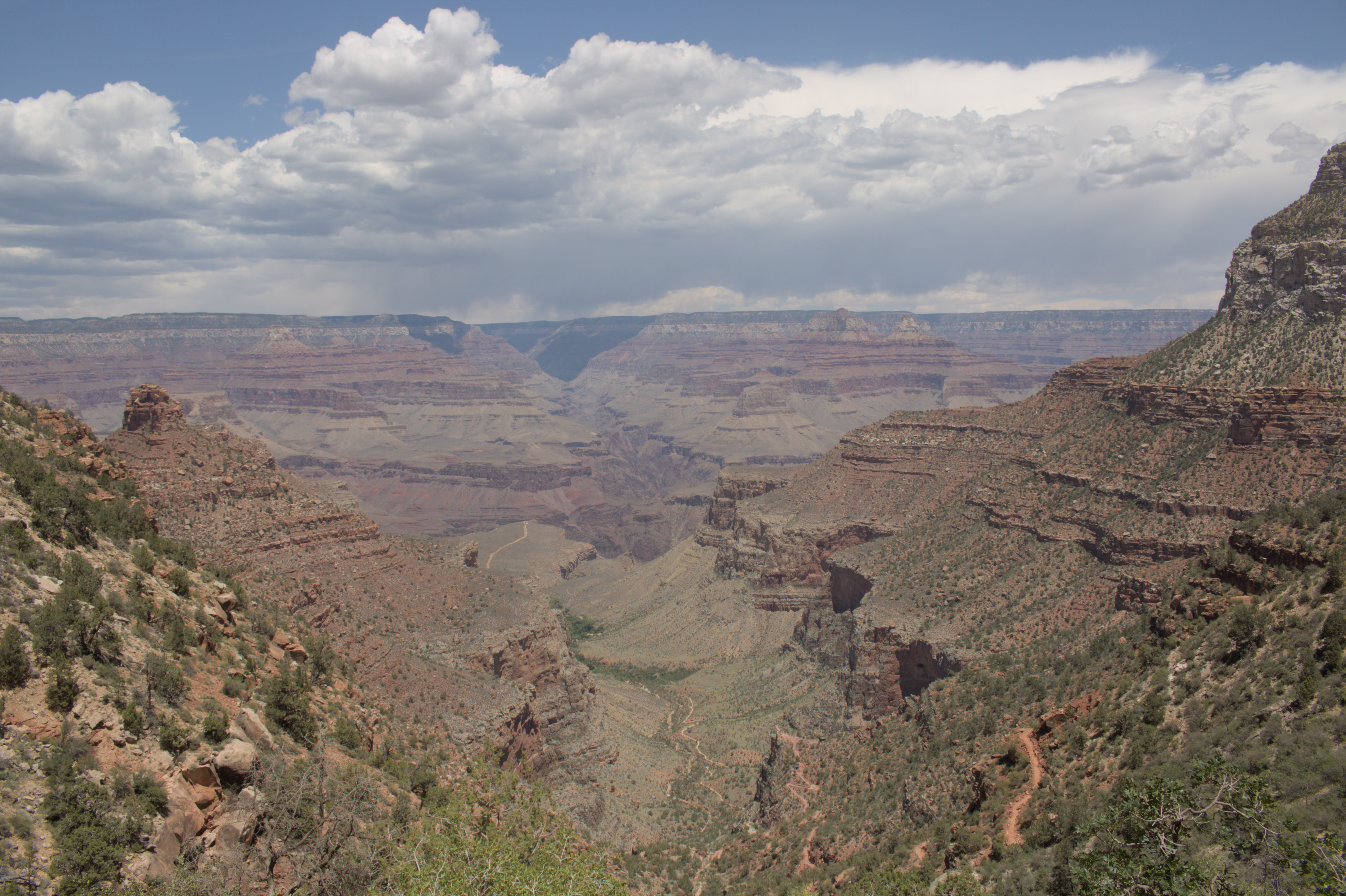
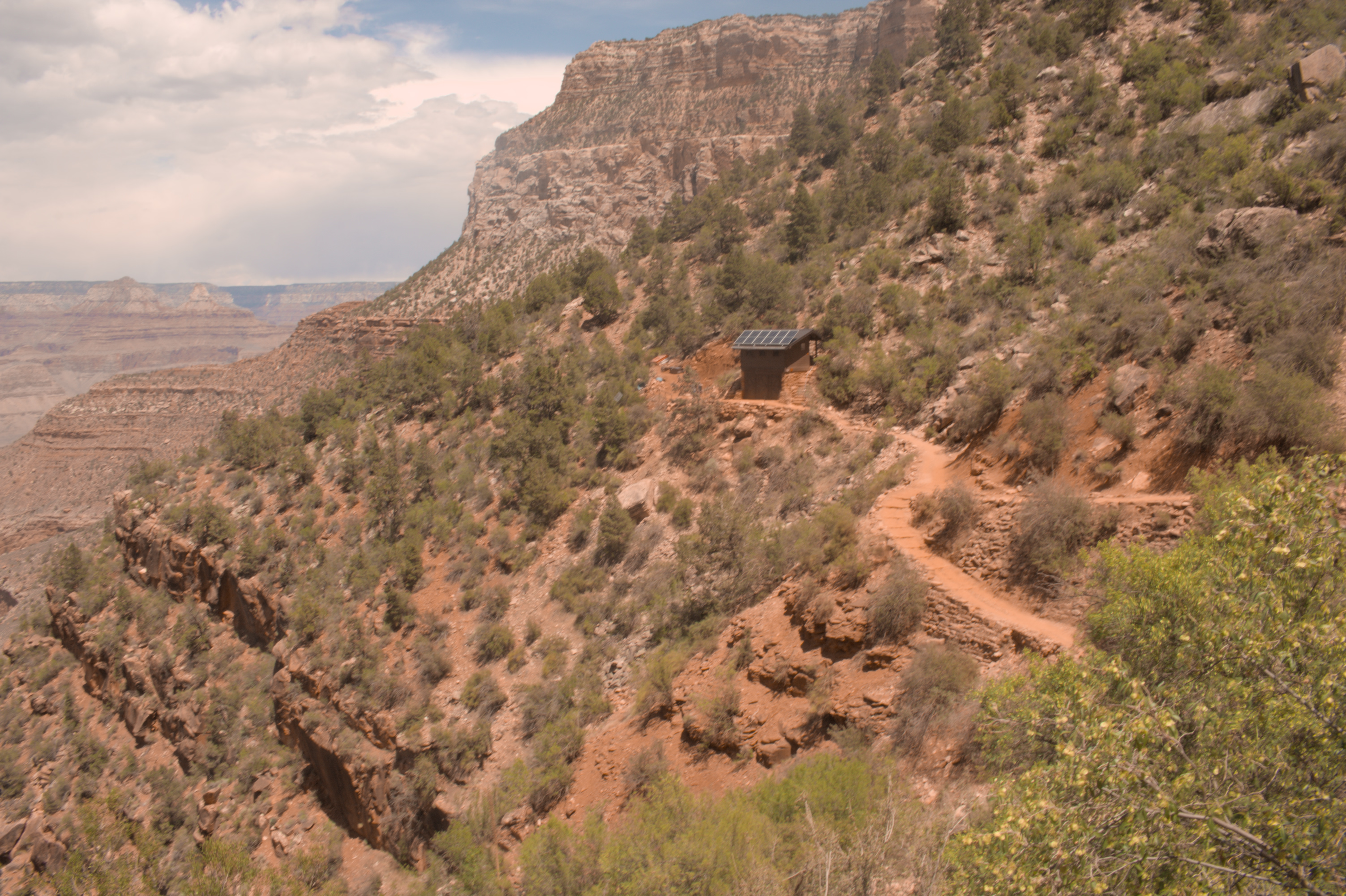
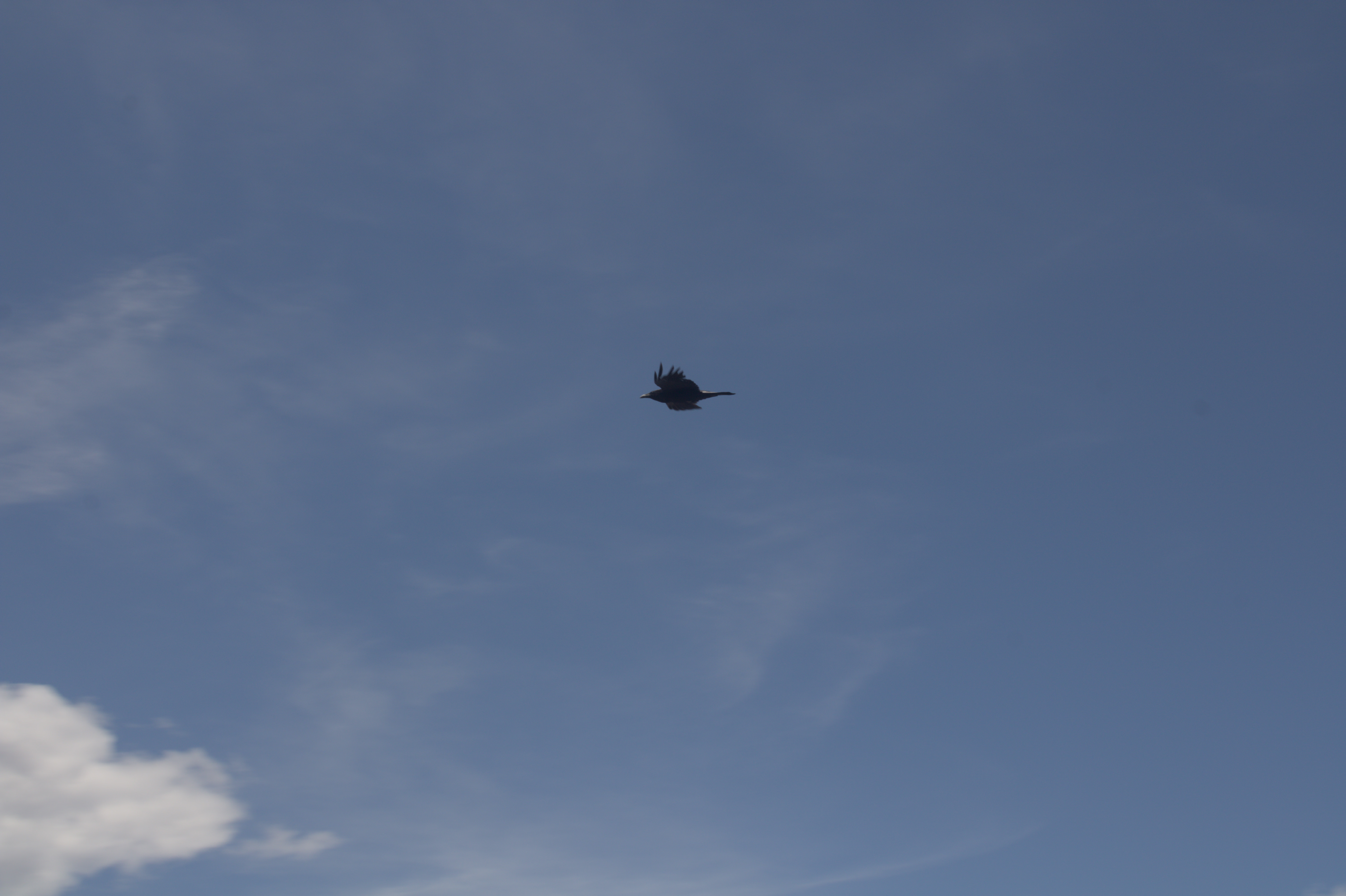
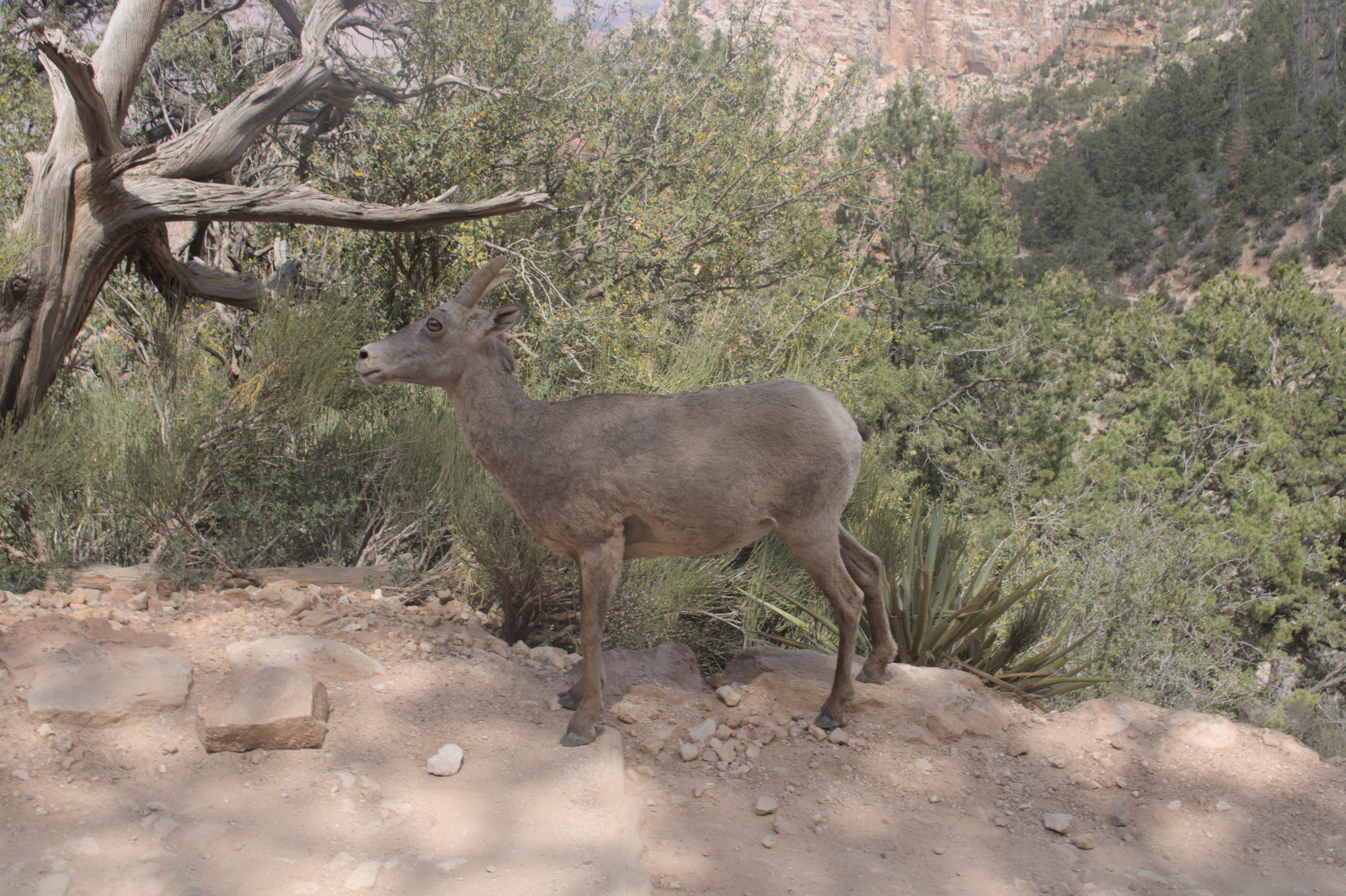
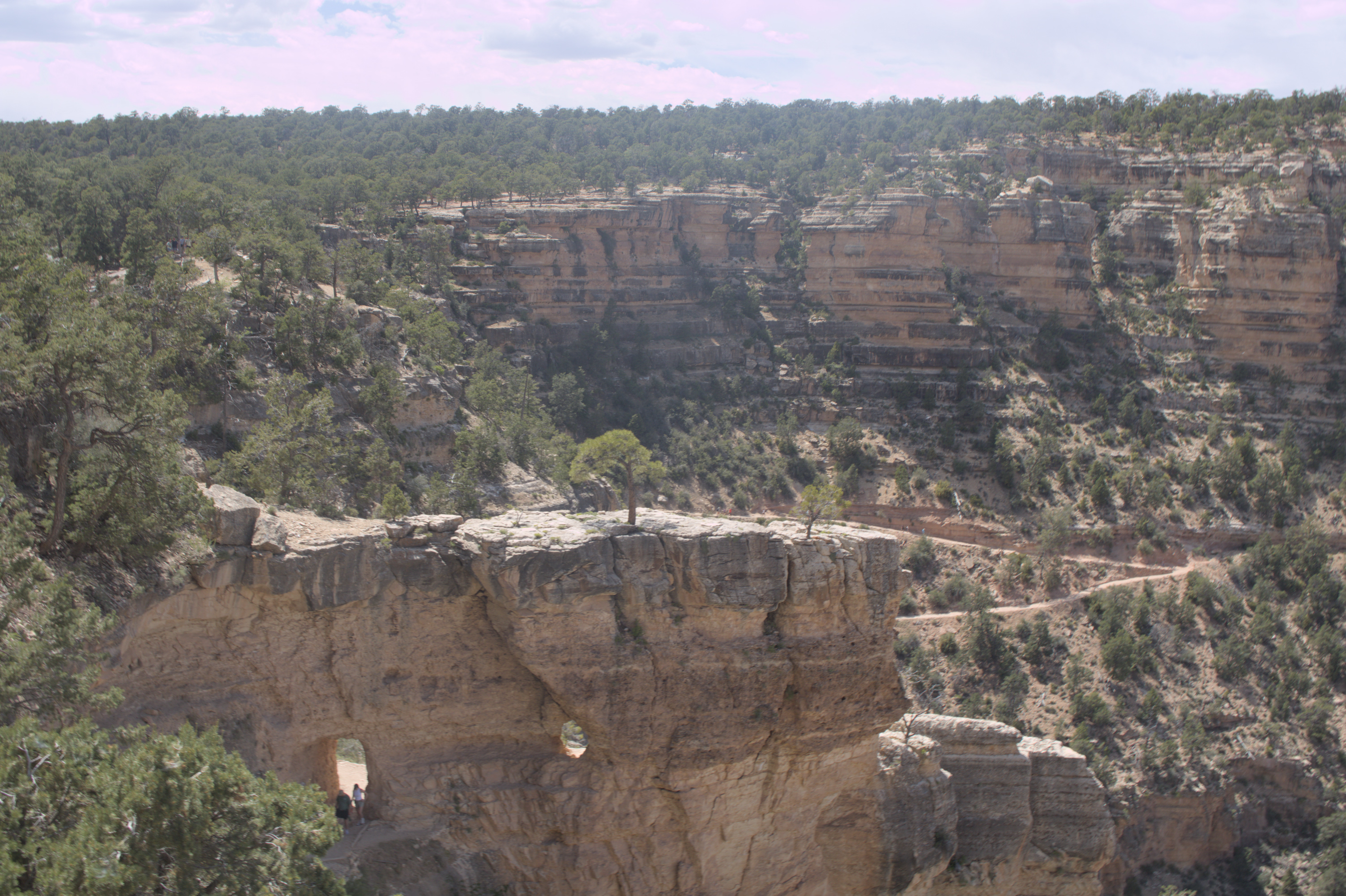
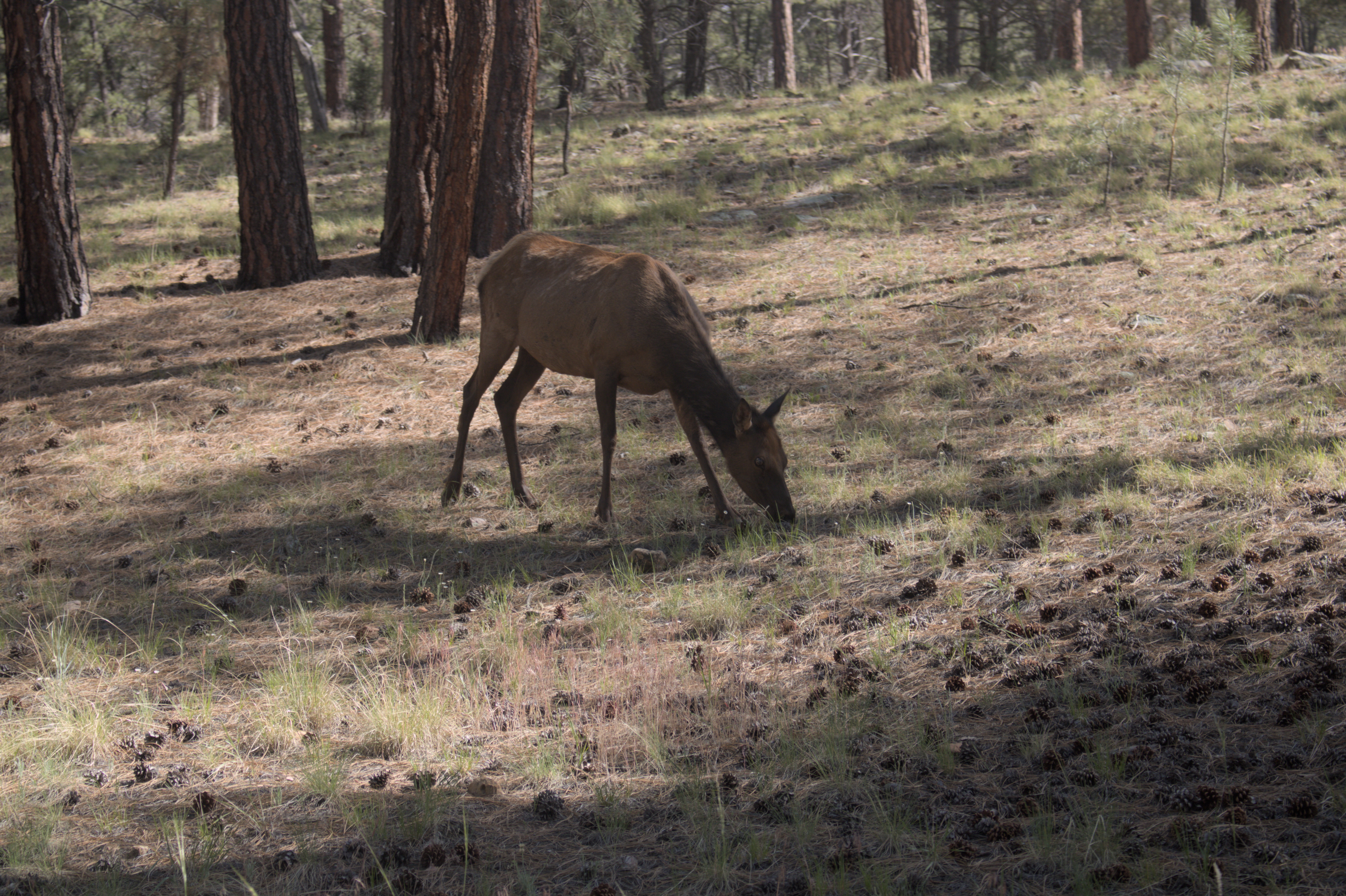
Zion
I enjoy hiking and exploring nature as a way to get away from the hustle and bustle of urban life. However, most city streets are less densely packed than Zion national park. Let’s take a look at the numbers.
| Miles of Trails | Annual Visitors (2024) source | Visitors/Mile | |
|---|---|---|---|
| Zion | 90 source | 4,946,592 | 54,962 |
| Yosemite | 750 source | 4,121,807 | 5,496 |
| Yellowstone | 1,100 source | 4,744,353 | 4,313 |
Obviously, it’s naïve to assume that visitors are equally spread out over all trails, but the point is in the proportions. Zion recieves an order of magnitude more visitors per mile of trail than other parks with similar annual attendance.

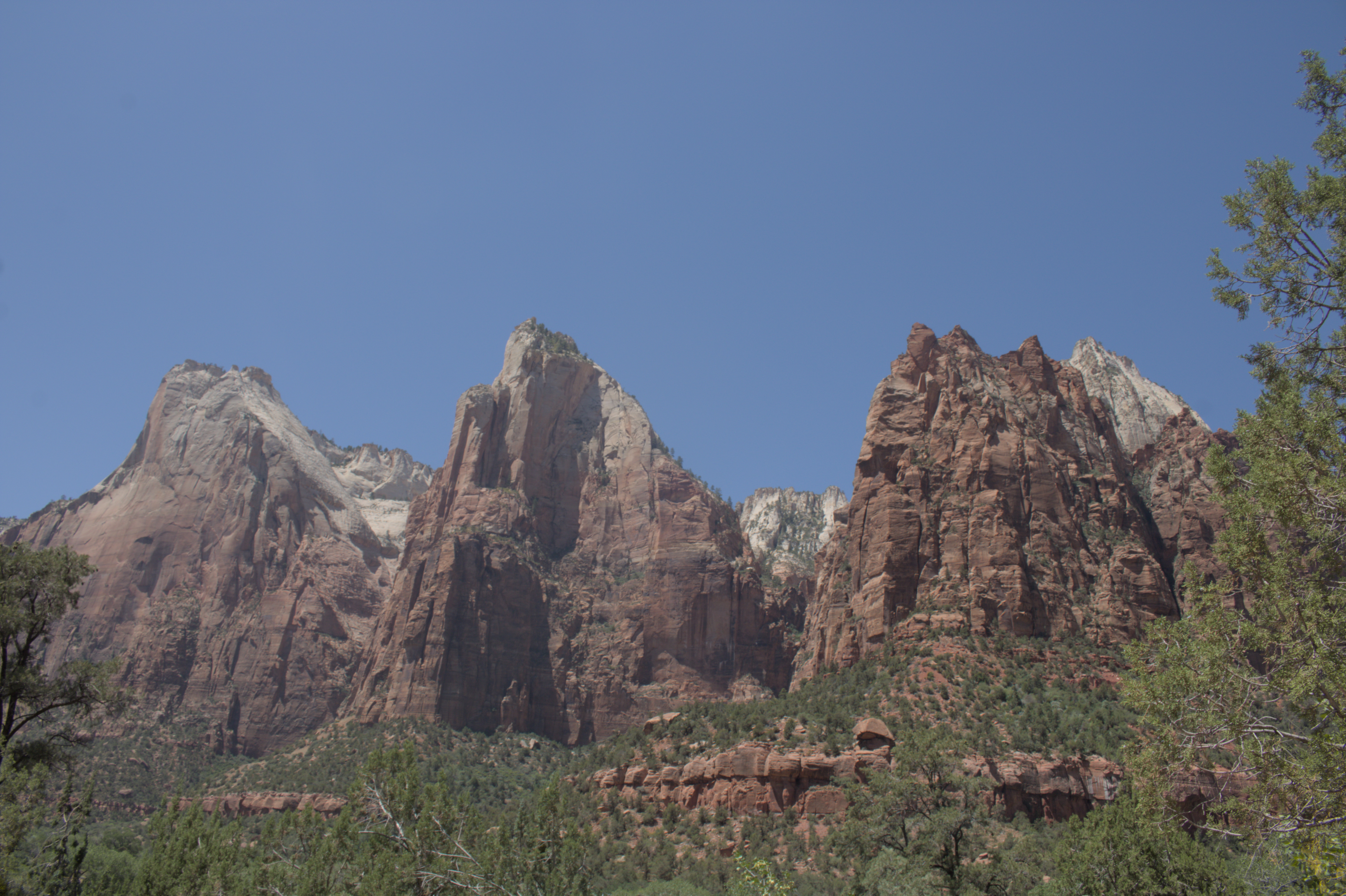
I thought it was pretty, but I definitely felt like it was overcrowded. Much of my time there was spent standing in lines, even on the trails. I’m surprised it’s this crowded, with Bryce Canyon being only like an hour away. Also, parking was $27.50.
Bryce Canyon
Sitting at around half the attendance of the parks we last discussed, Bryce Canyon received 2,498,075 visitors in 2024, making it relatively underrated in my view. It has a fast and efficient shuttle service, and plenty of unique and interesting hiking trails to explore.

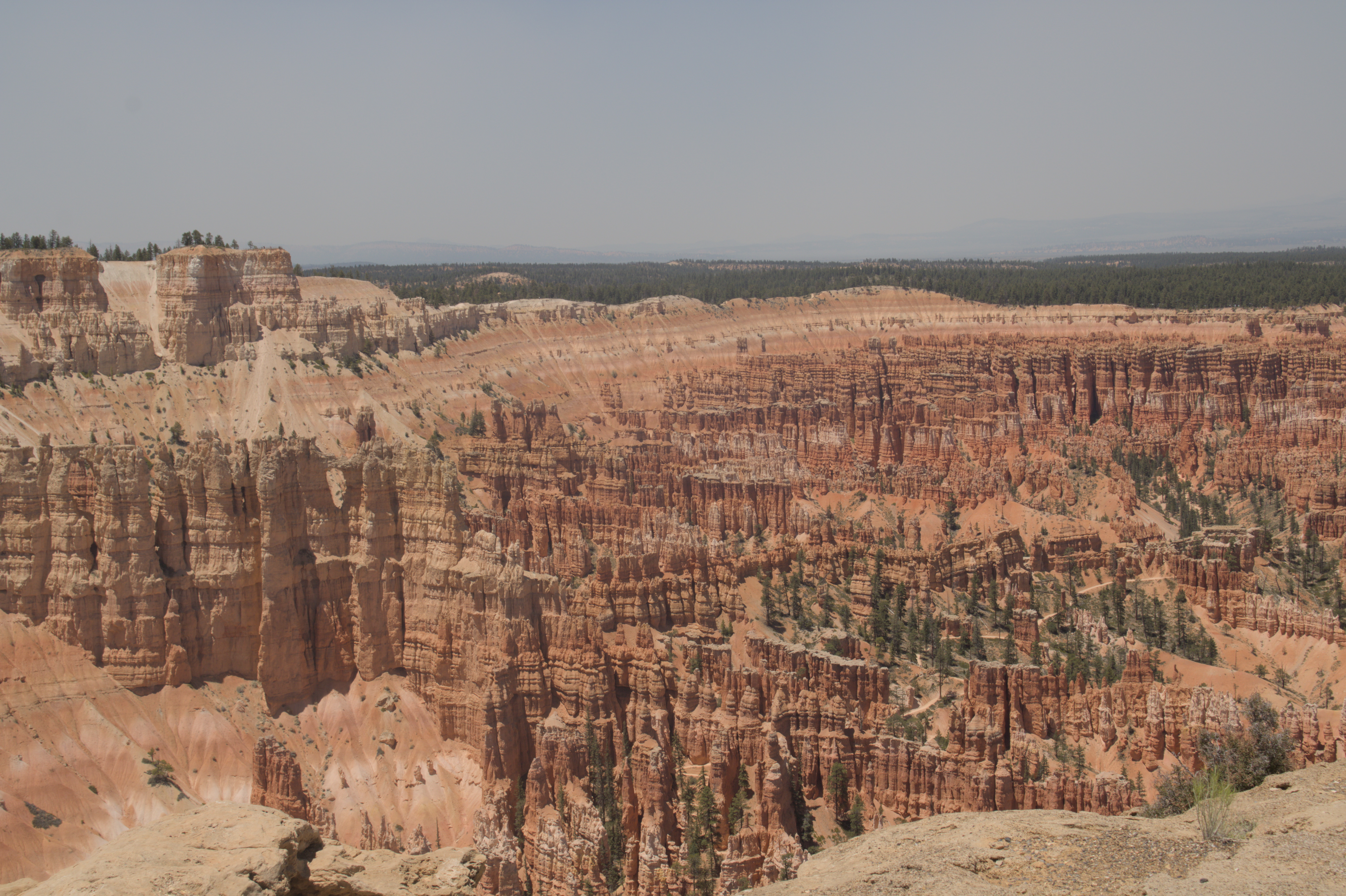
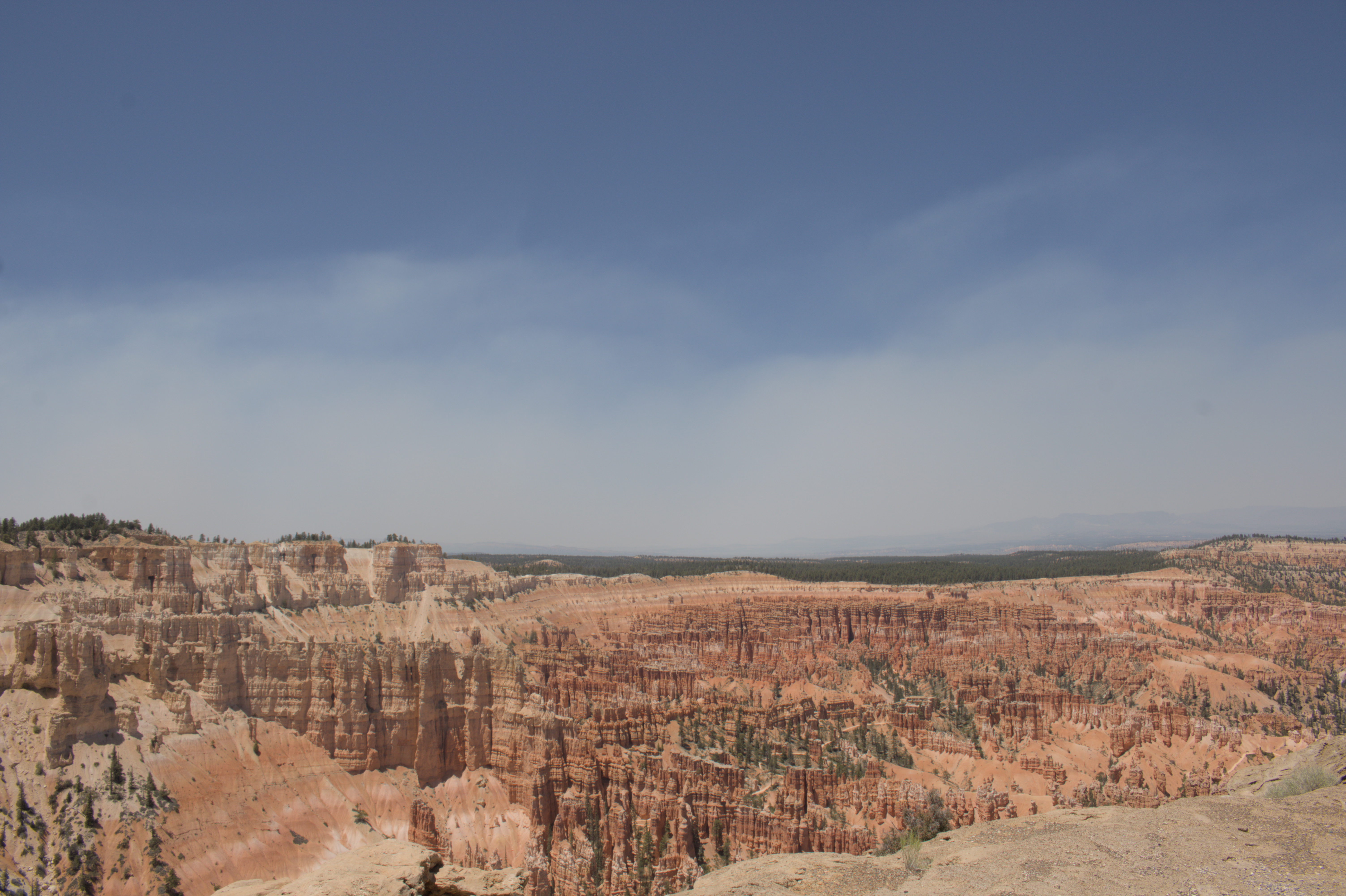
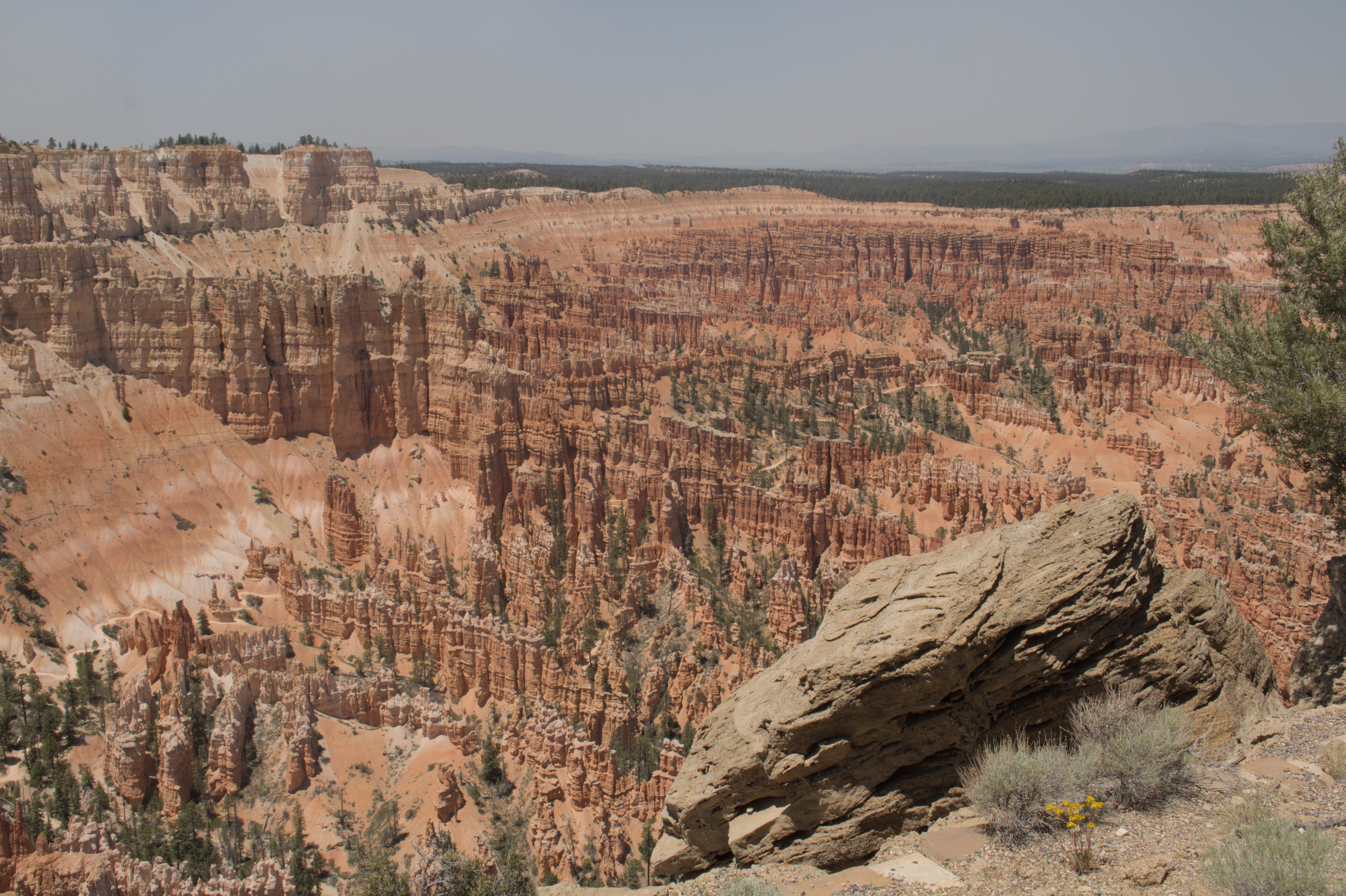
The tower-like eroded rocks you see are called “hoodoos”, which are formed through uplifted sedimentary rock that has been eroded away over time.
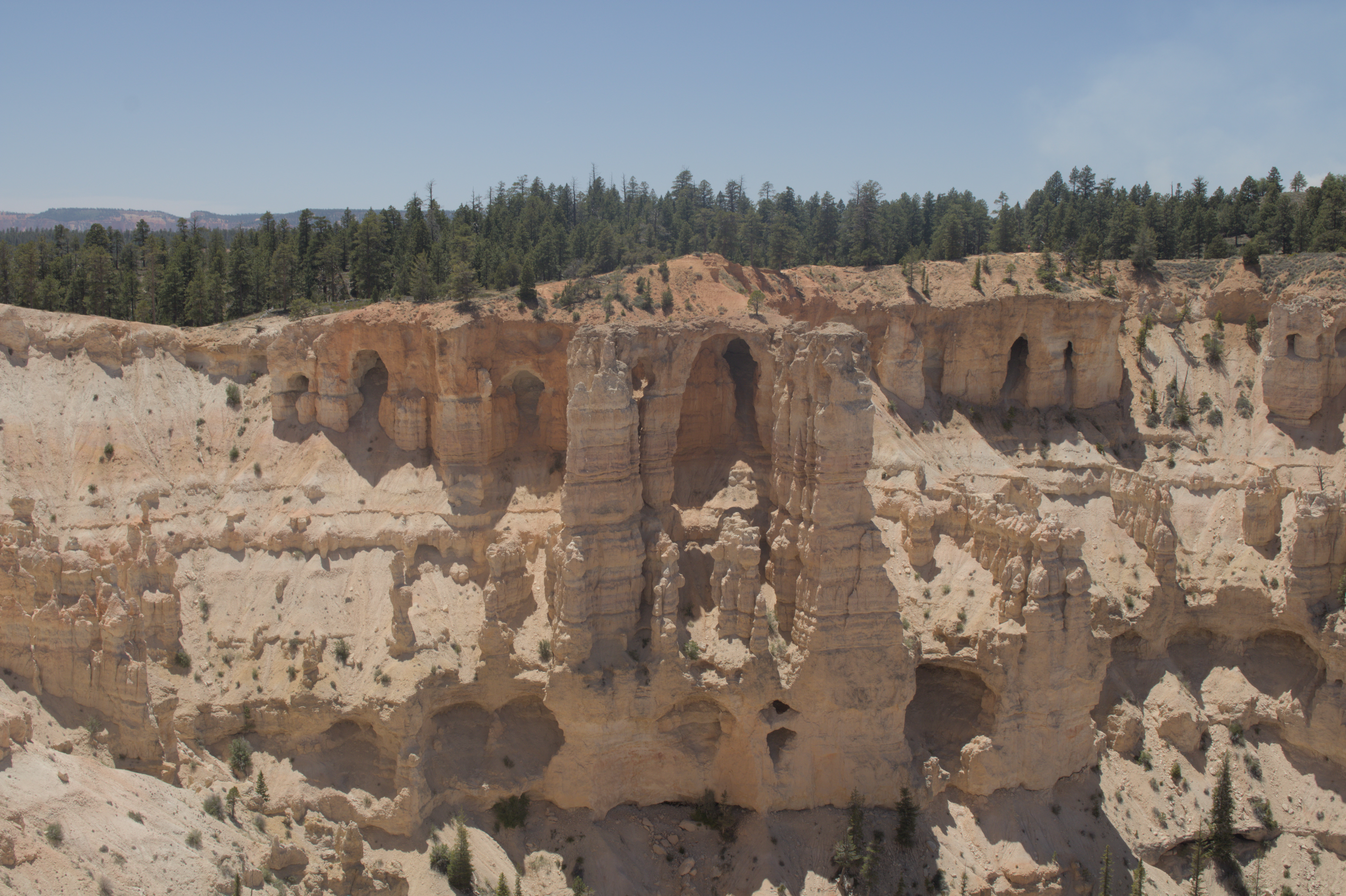
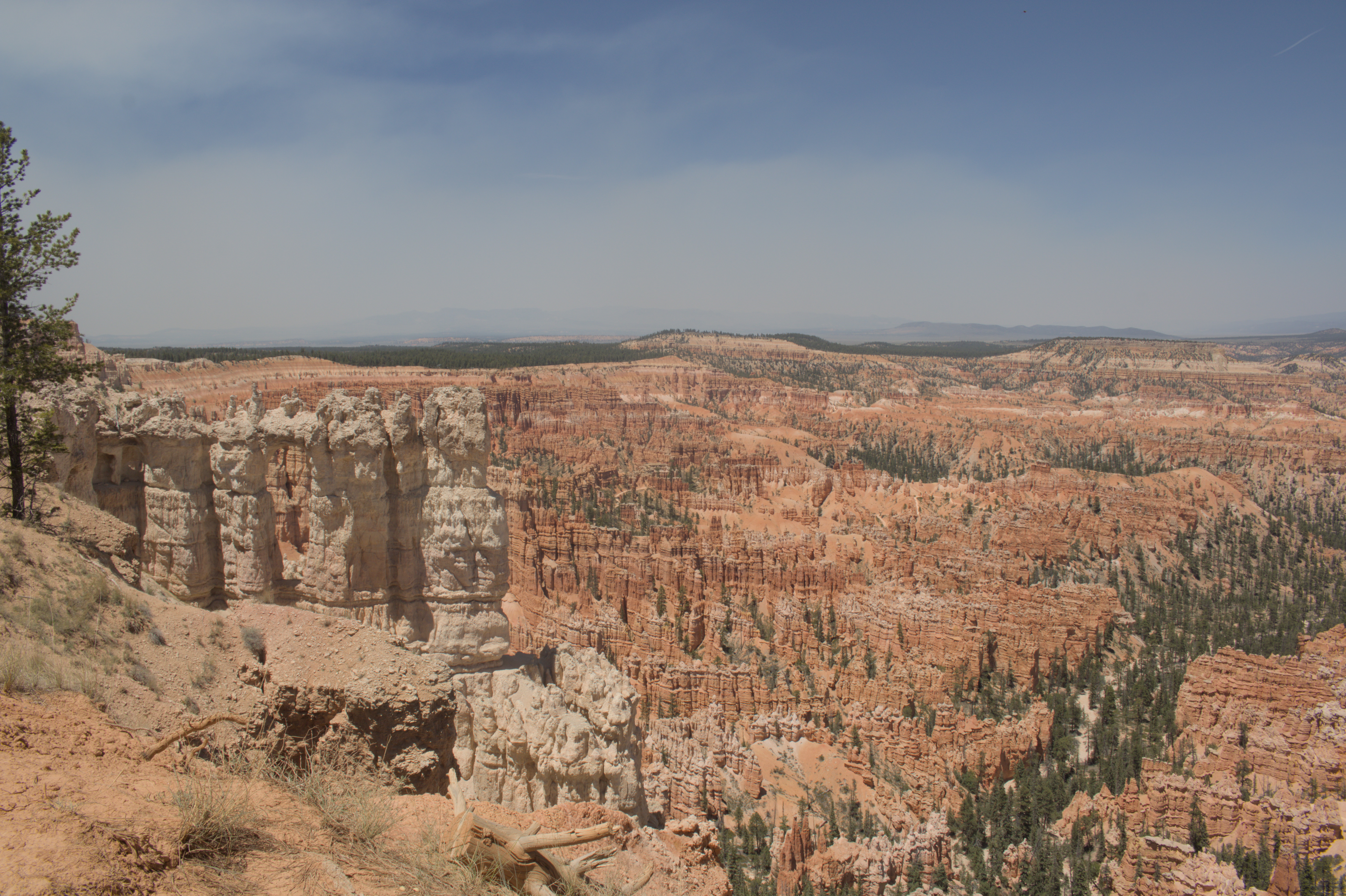
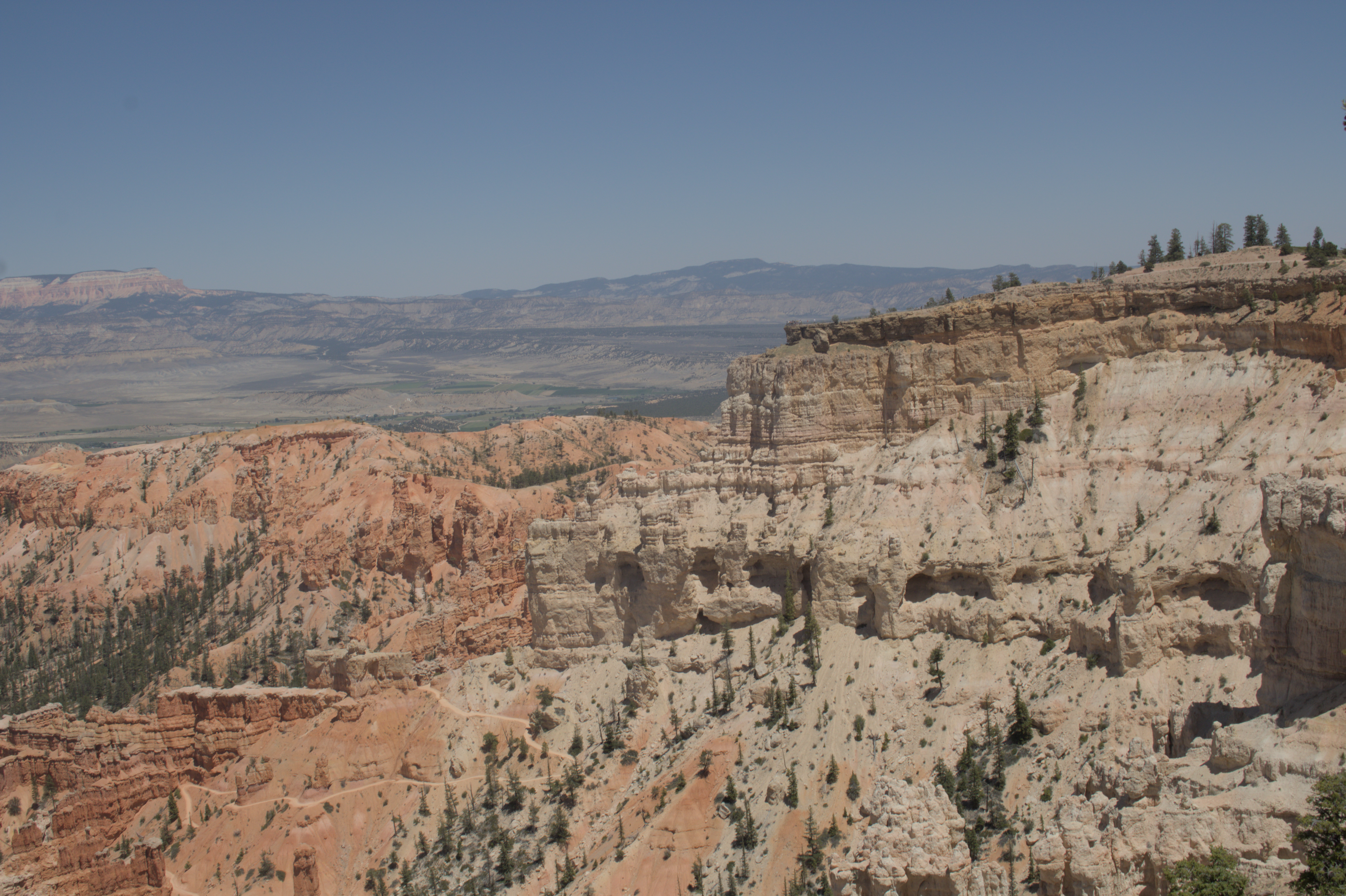
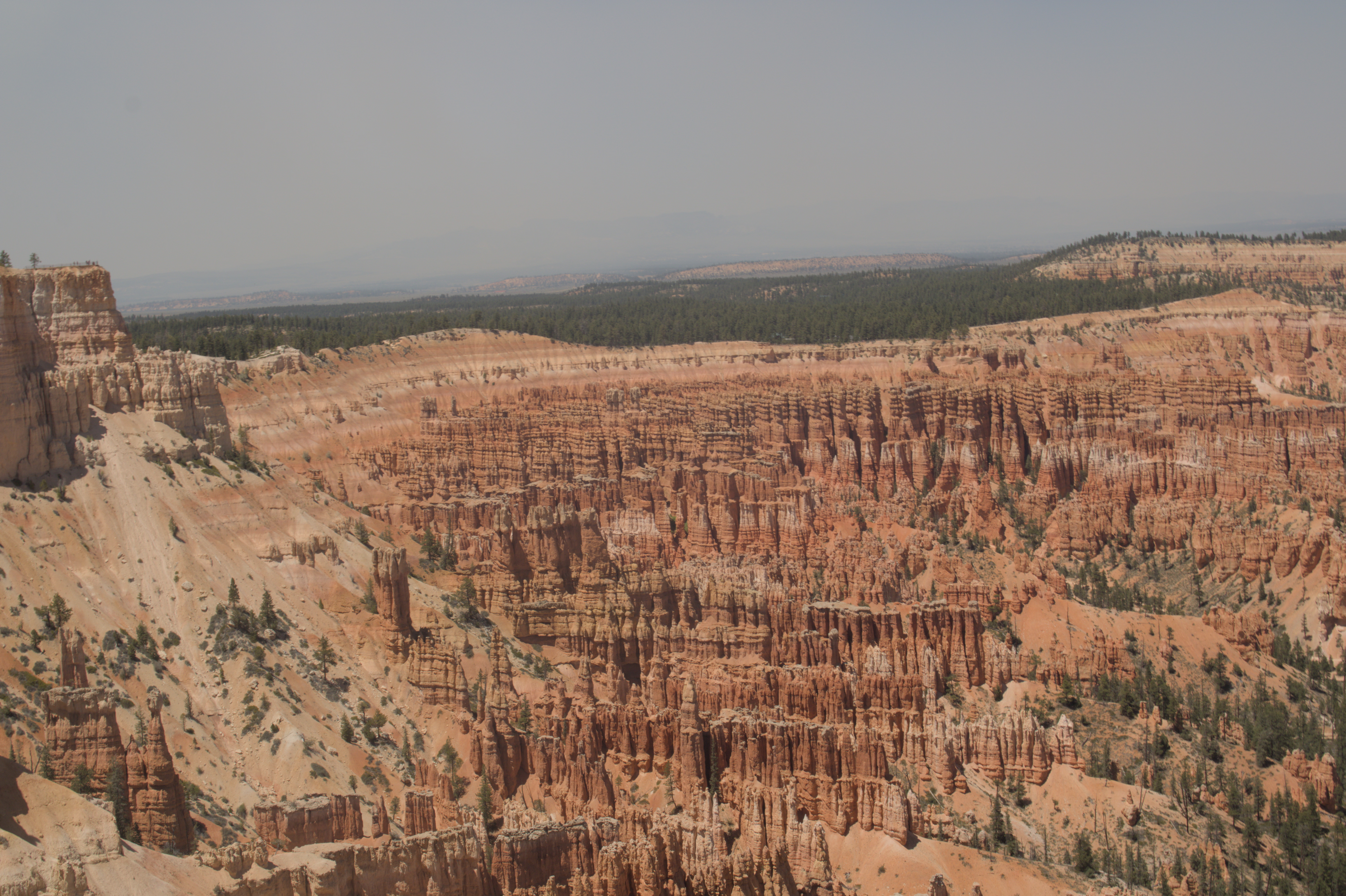
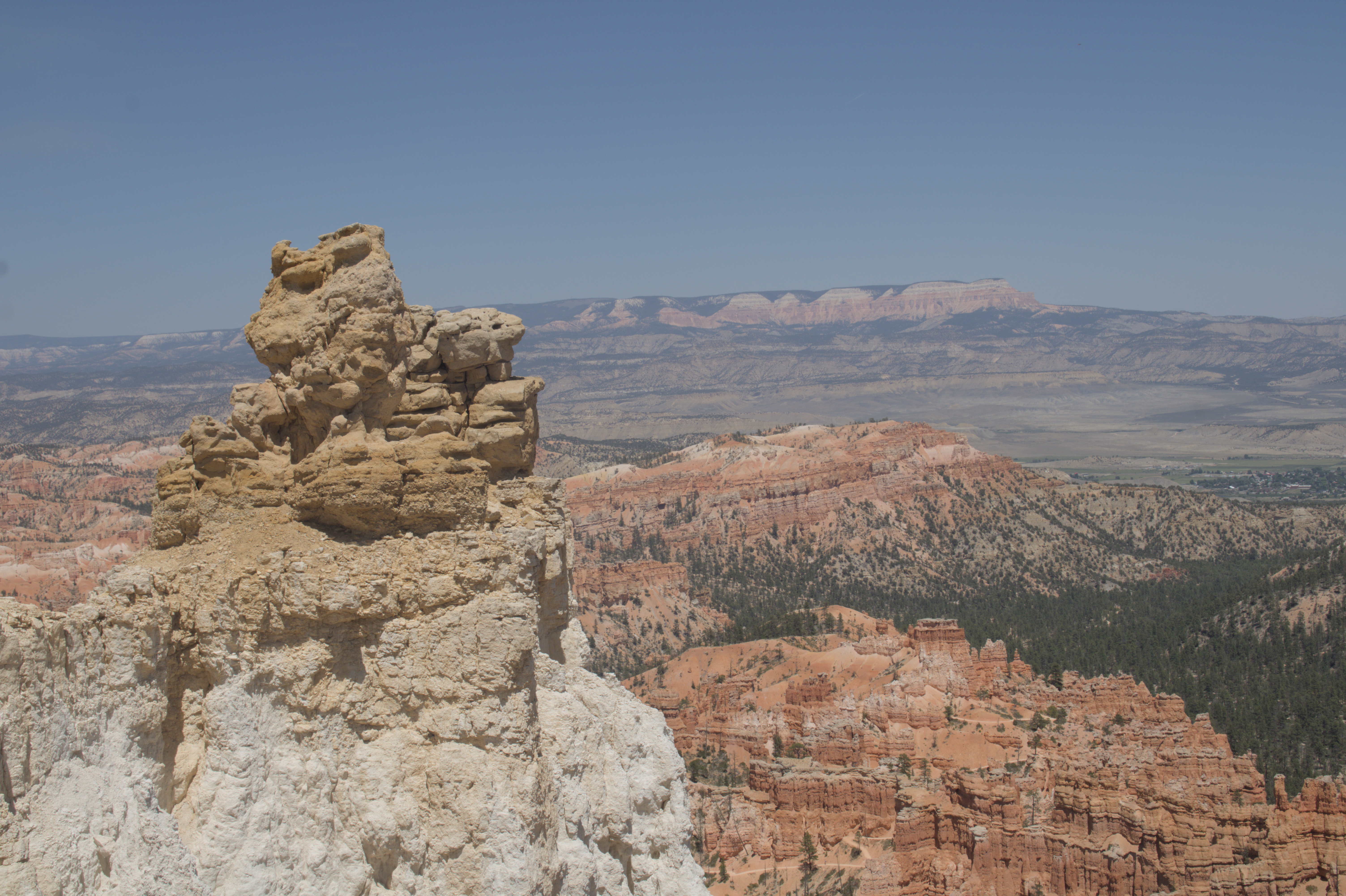
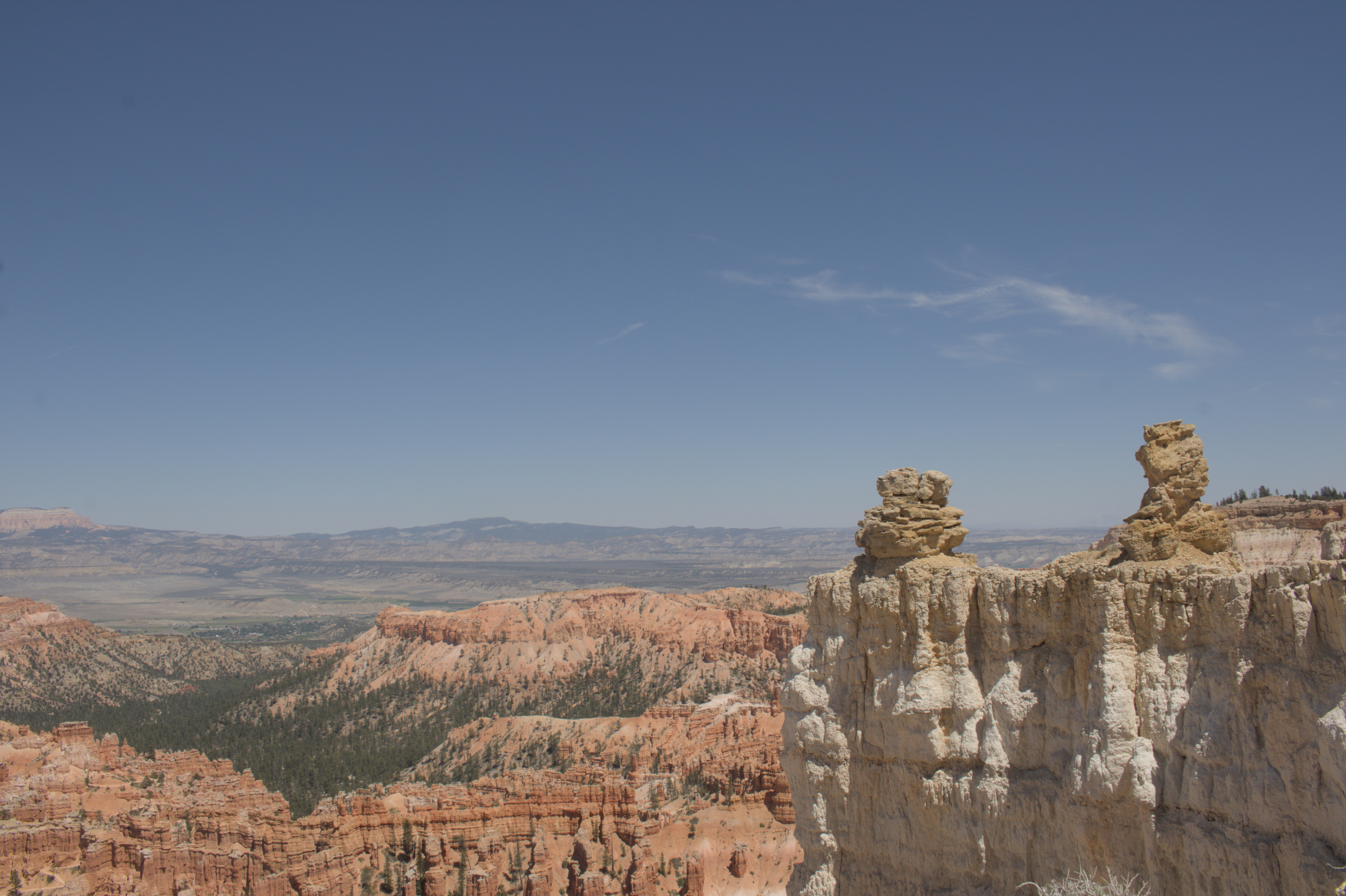
There was a quote on a sign about the Coyote God Sinawava in Paiute Indian tradition that stuck out to me:
The Paiutes inhabited this region for hundreds of years before the arrival of European Americans. A sacred oral tradition of the Paiute Indians states that the hoodoos are ancient legend people turned into stone by coyote as a punishment for bad deeds. It is the custom of the Paiutes to tell these stories only during the winter season. Spring summer and fall are for hunting gathering and storing food it is out of respect for this custom that the authentic story is not repeated here.
— NPS Sign
I liked this for two reasons. For one, I can totally see how some freaky-looking hoodoos got personified as people who had been turned to stone. Additionally, I generally think of written text as being outside of time, so it’s interesting to see a reference to a story that should not be printed, lest it be read outside of the appropriate season. Very interesting!
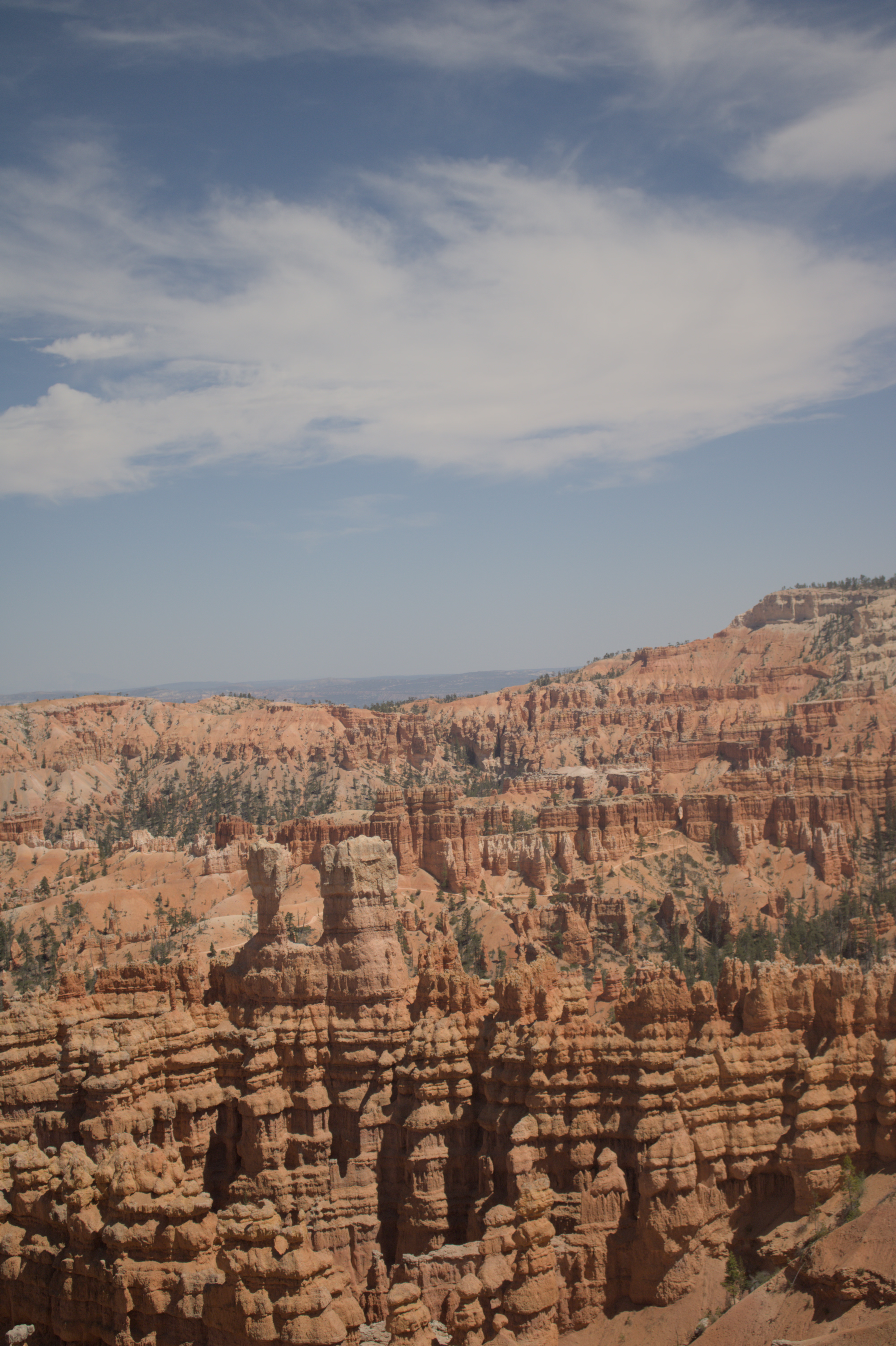
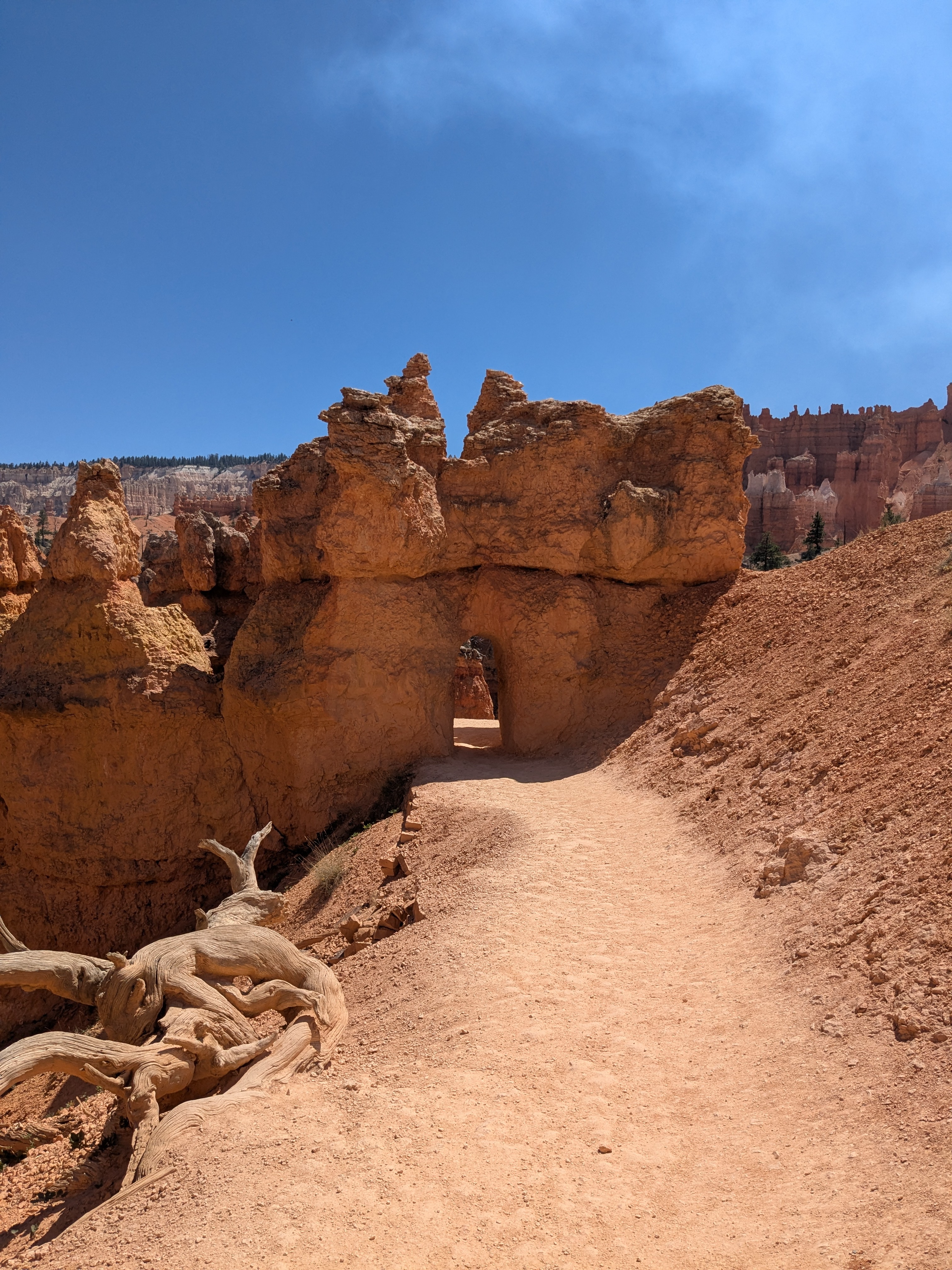
Warner Campground
Early on, when planning my trip, I decided that I wanted to plan a basic structure, but leave opportunity for spontaneity. Rather than having every minute of the day planned out, I’d have a general plan of where I need to be, but I’d always reserve agency to decide what exactly to do on each day.
I think this worked out well overall!
However, there were several situations where I had to make a change of plans. For example, I planned to visit Arches National Park. When planning, I noticed the nearest campsite that wasn’t completely booked was an hour away, which seemed unfortunate but doable. I noted that it was also only accessible via gravel roads, but I decided that I’d figure it out when the time came.
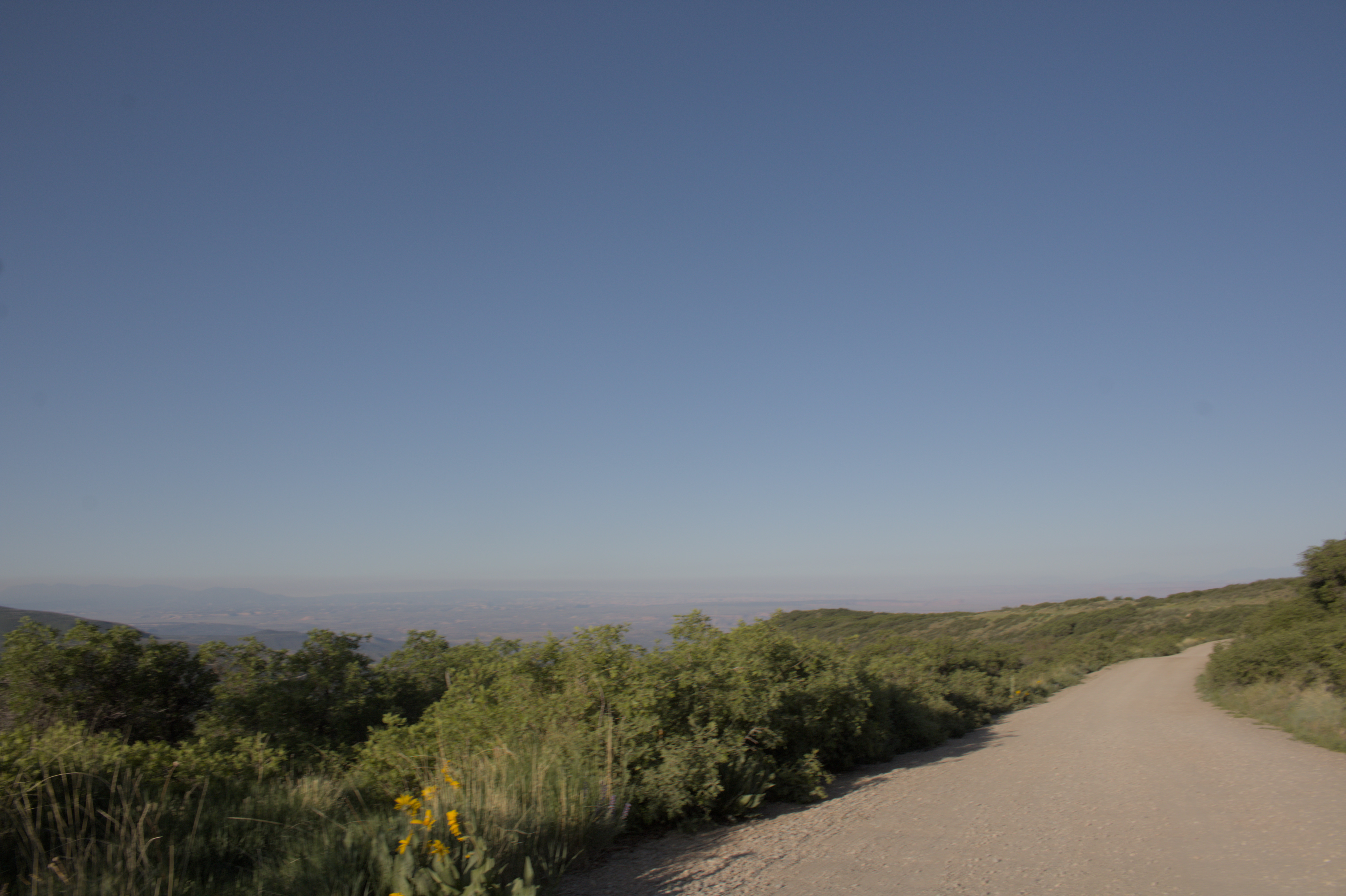
However, when I arrived, I felt that the gravel and dirt roads were taxing enough on my car that it’d be wise to minimize the times I drove on them. As such, I ended up skipping Arches, and just exploring the mountain my campsite was on. Sure, it wasn’t what I planned, but I ended up really enjoying it anyway!
And when I arrived at my campsite, I made several new deer friends:
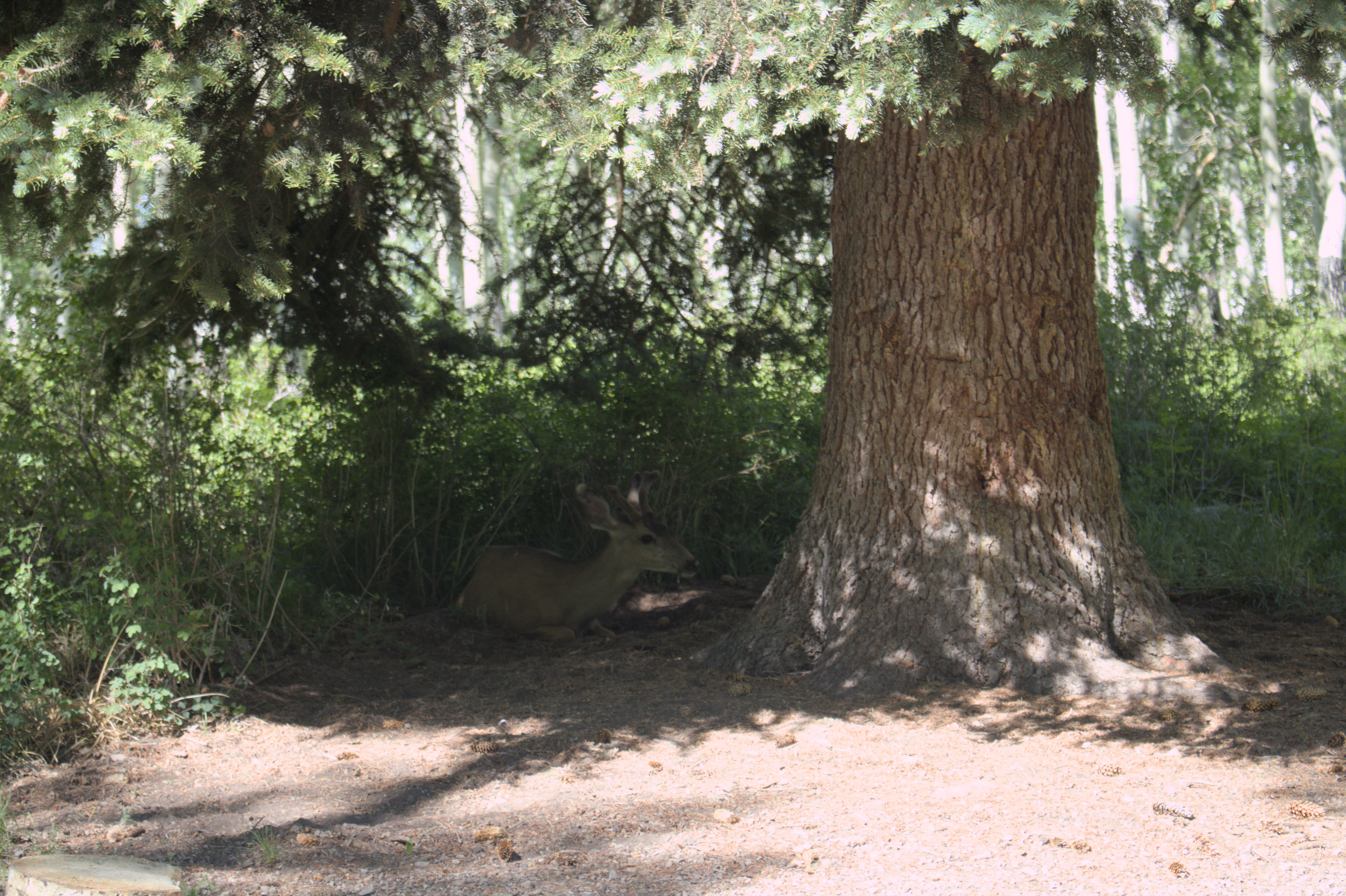
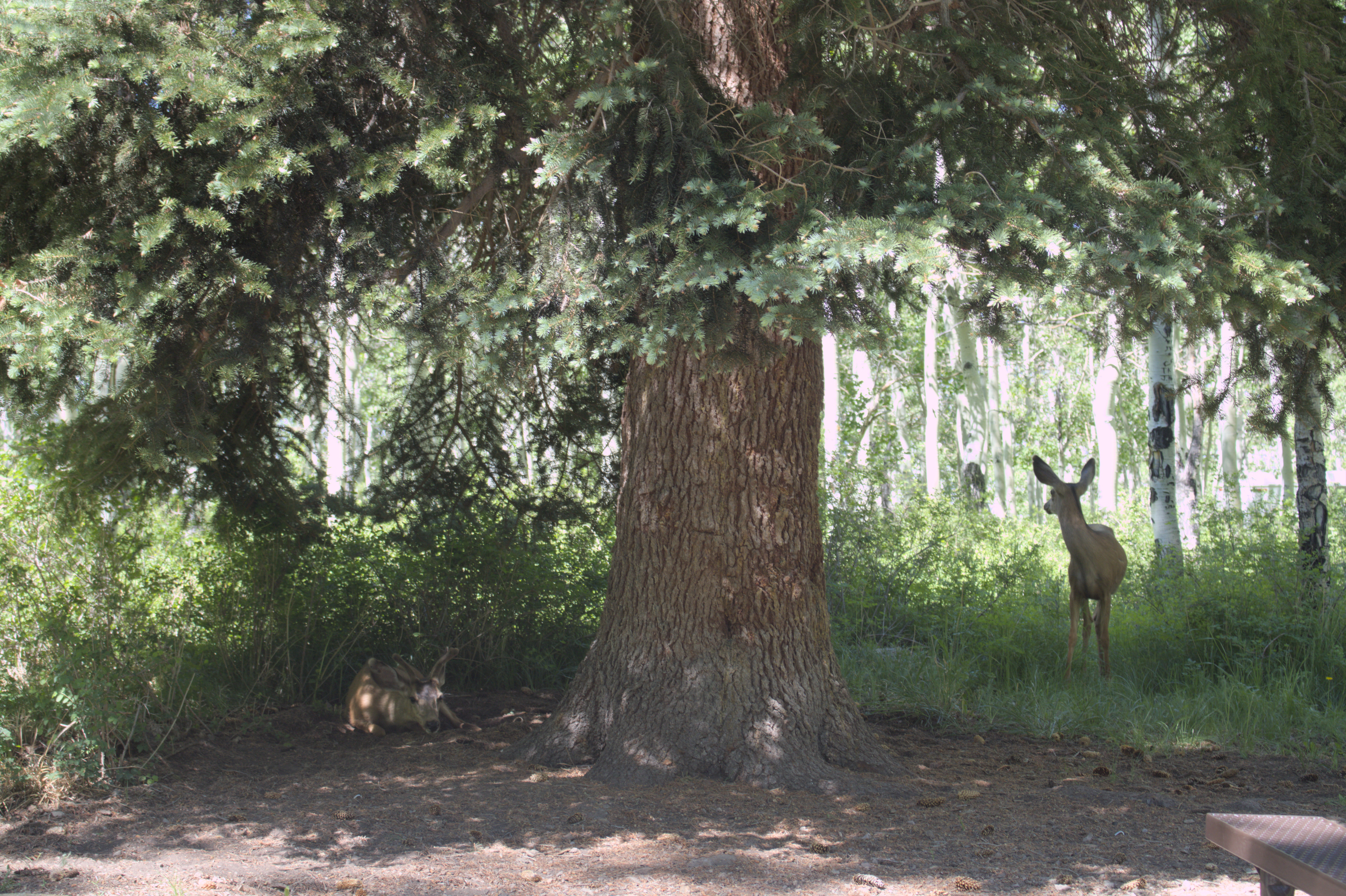
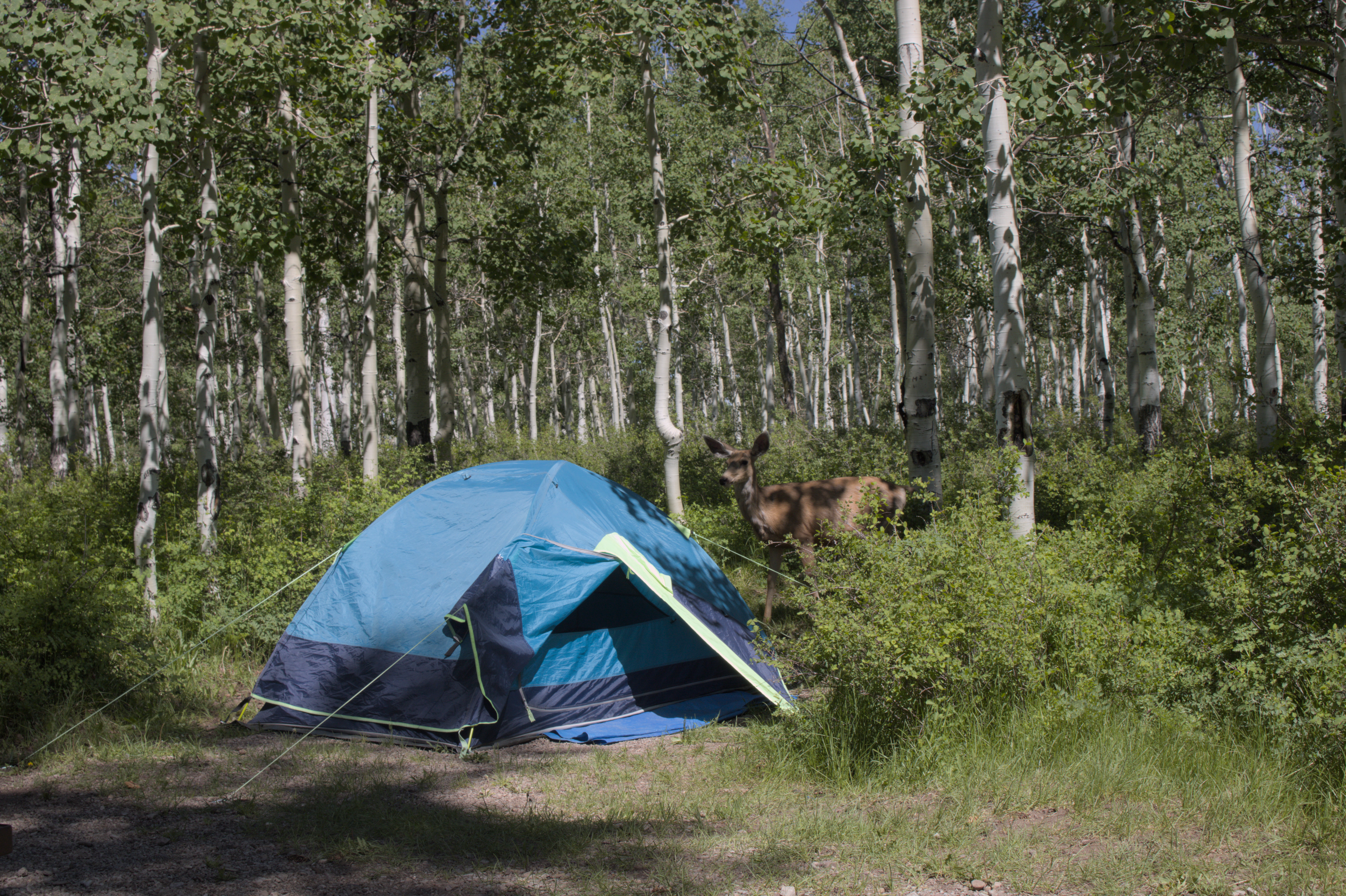
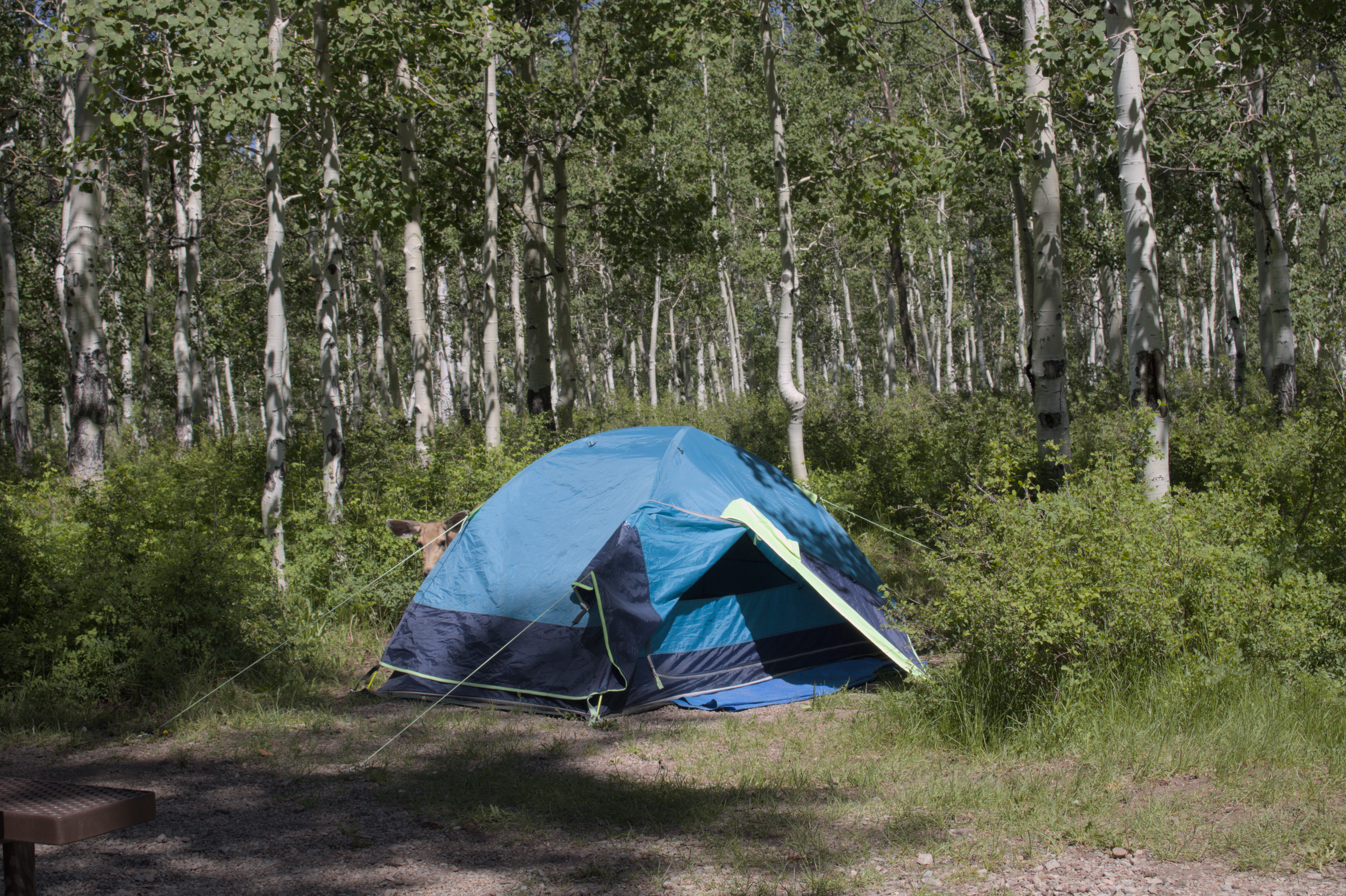

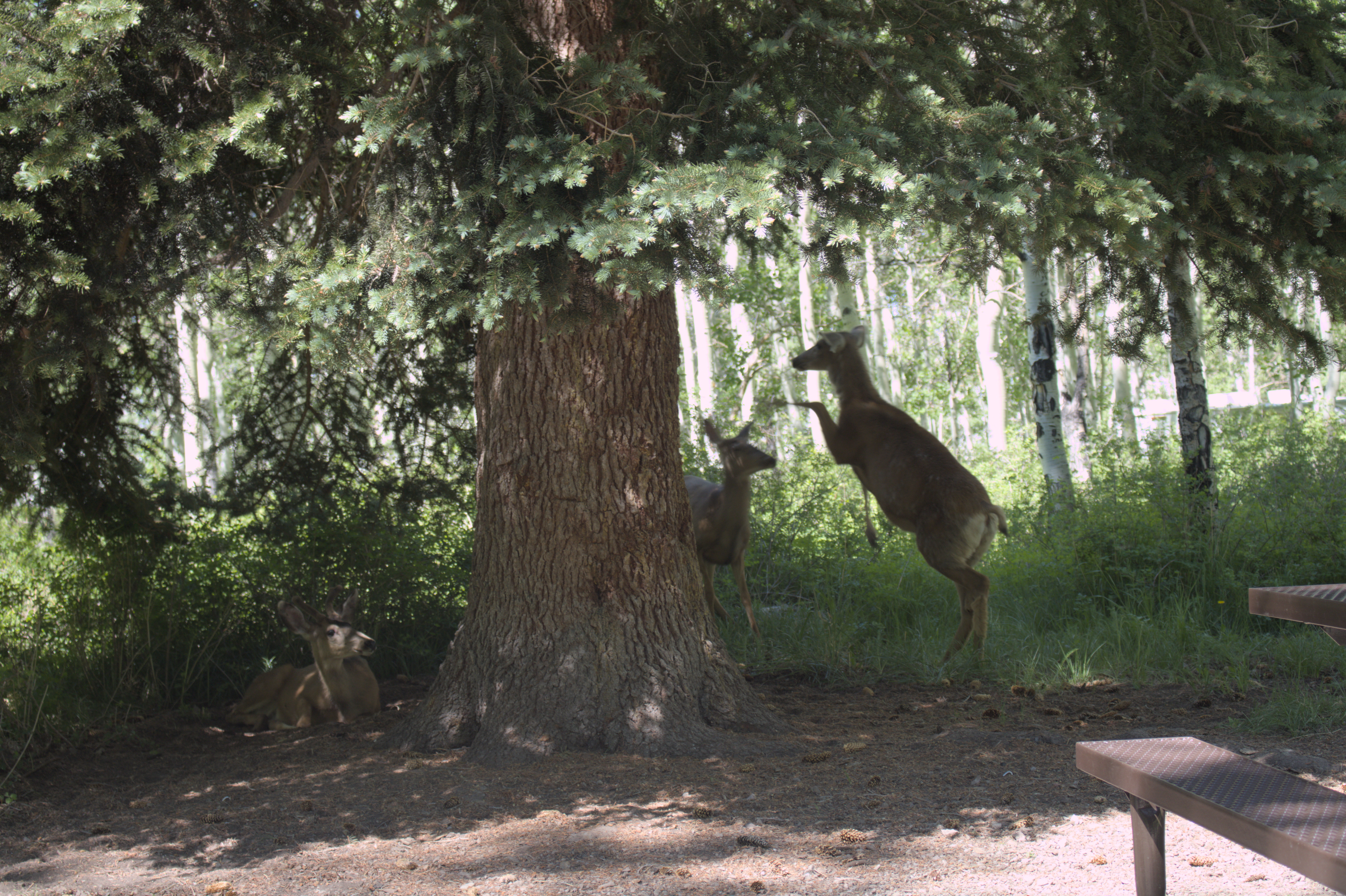
And, apparently deer can be really rude! One of them came over and literally kicked the other ones out from under the tree.
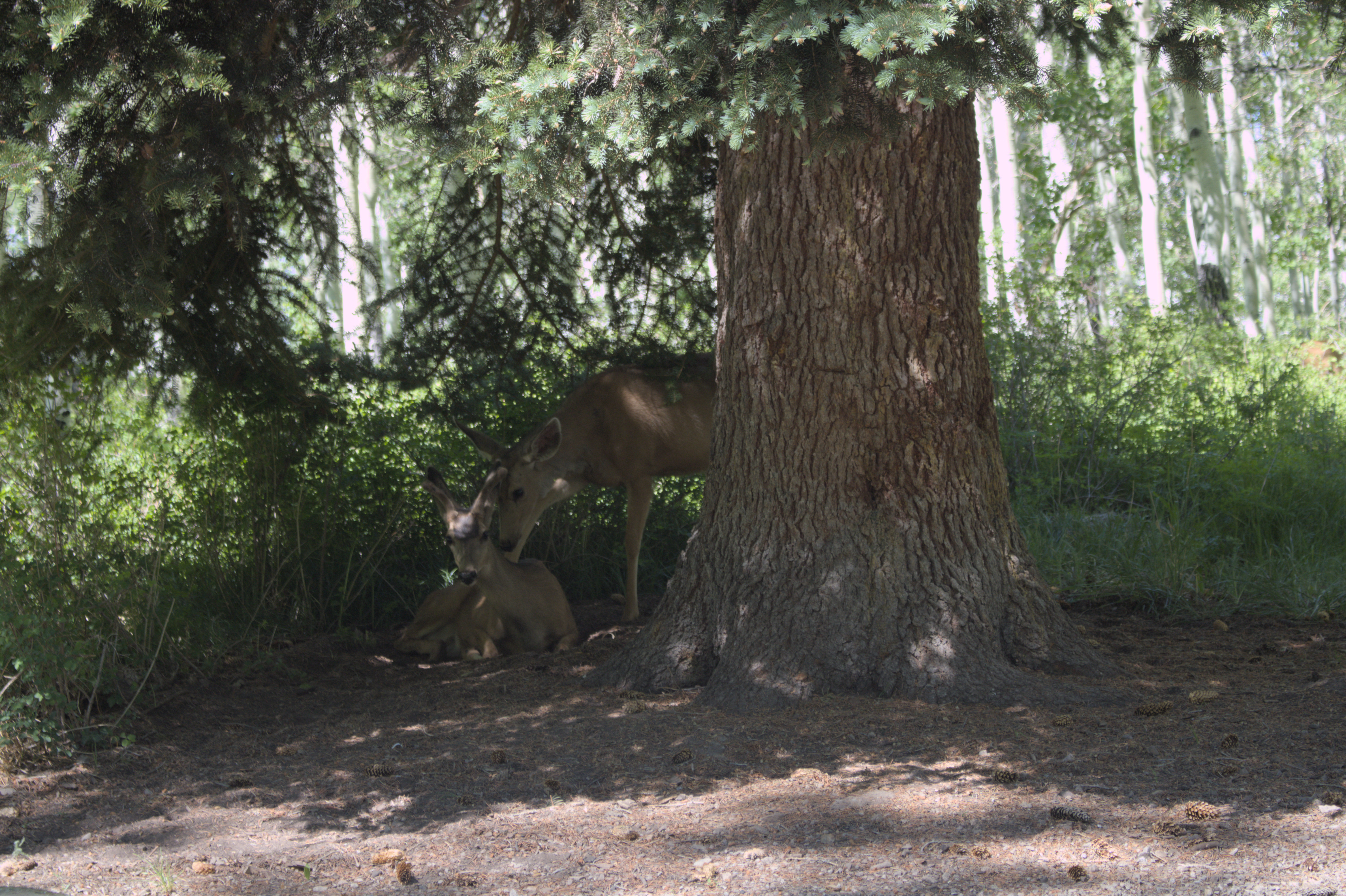
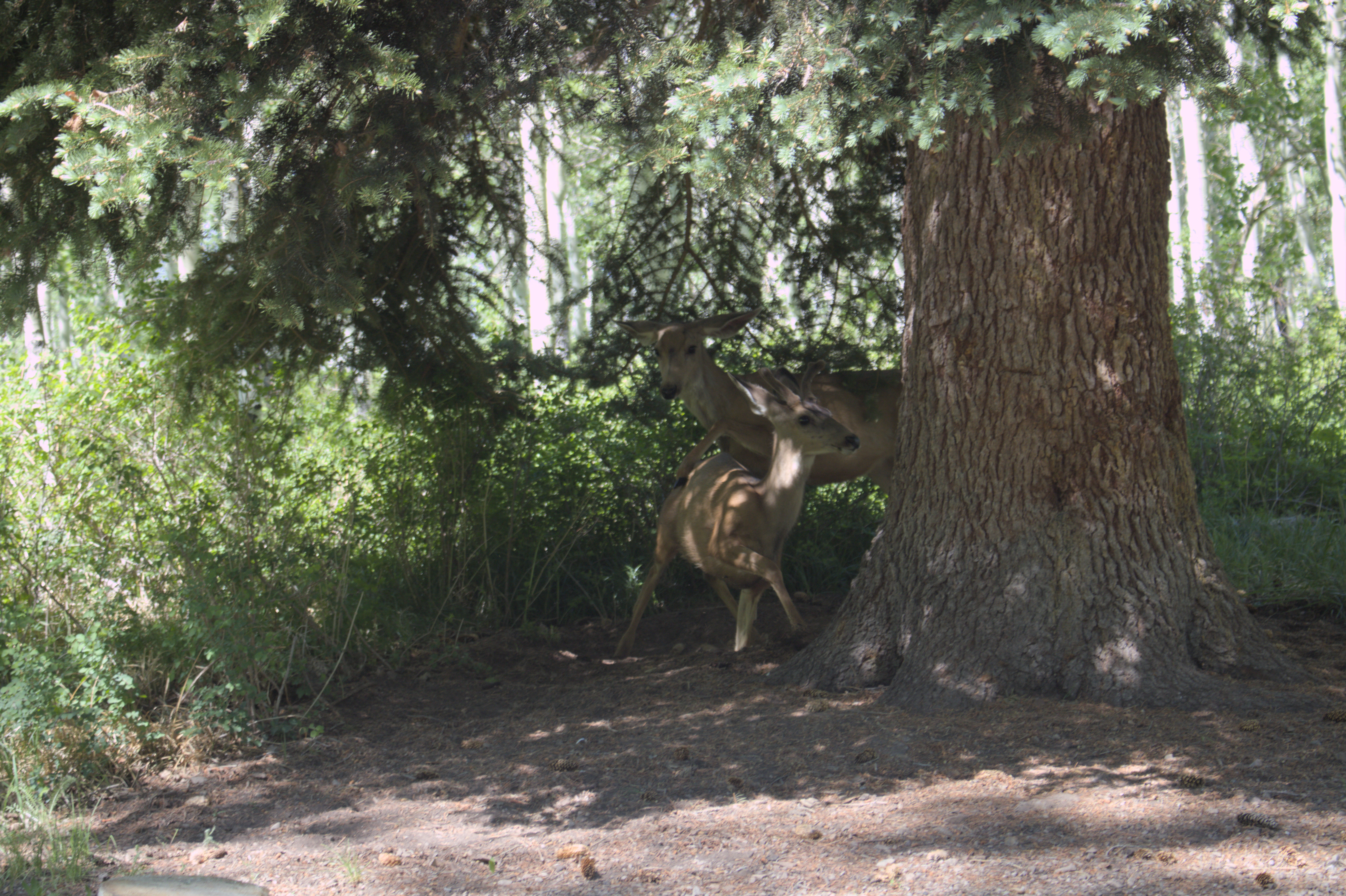
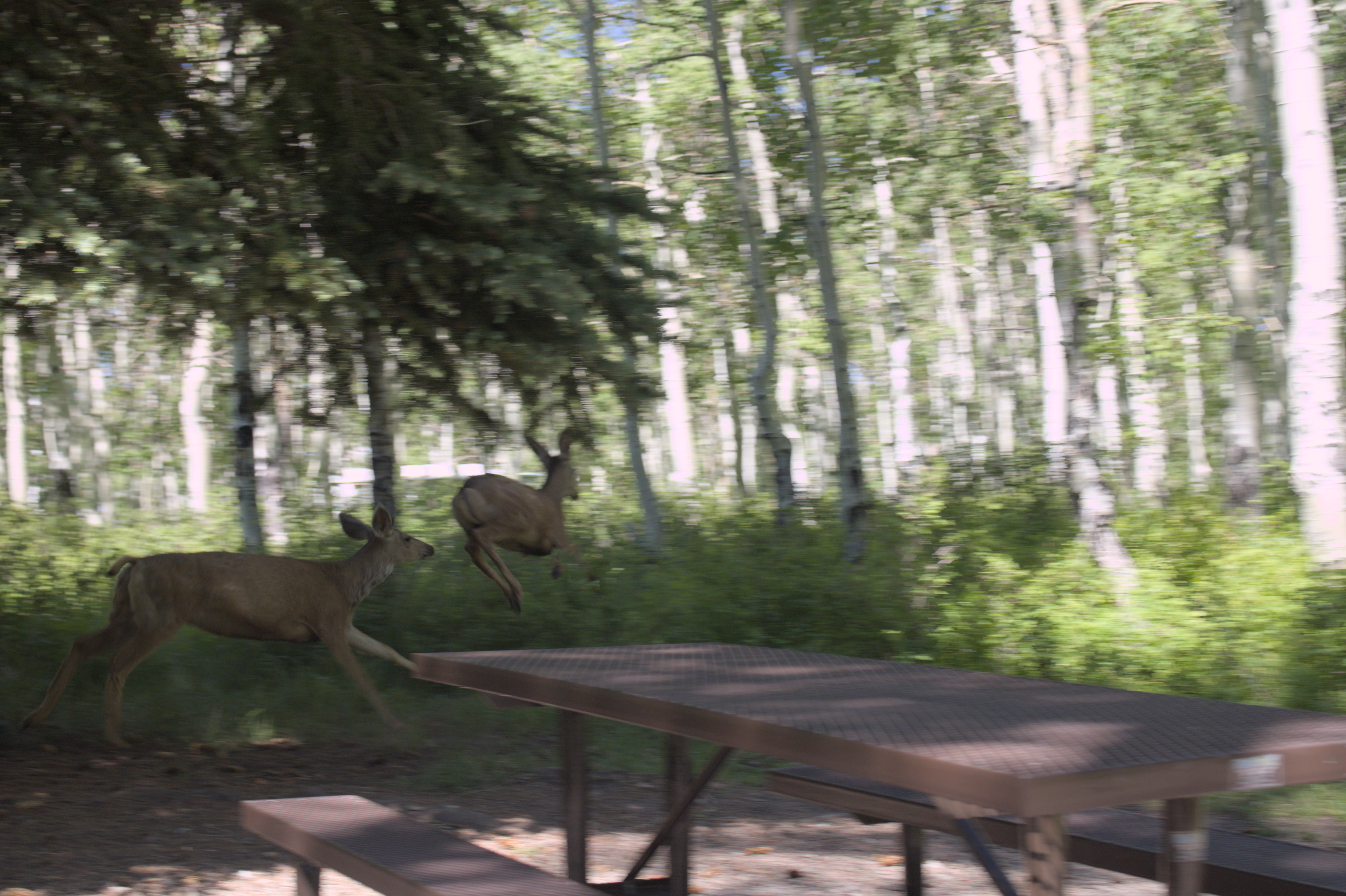
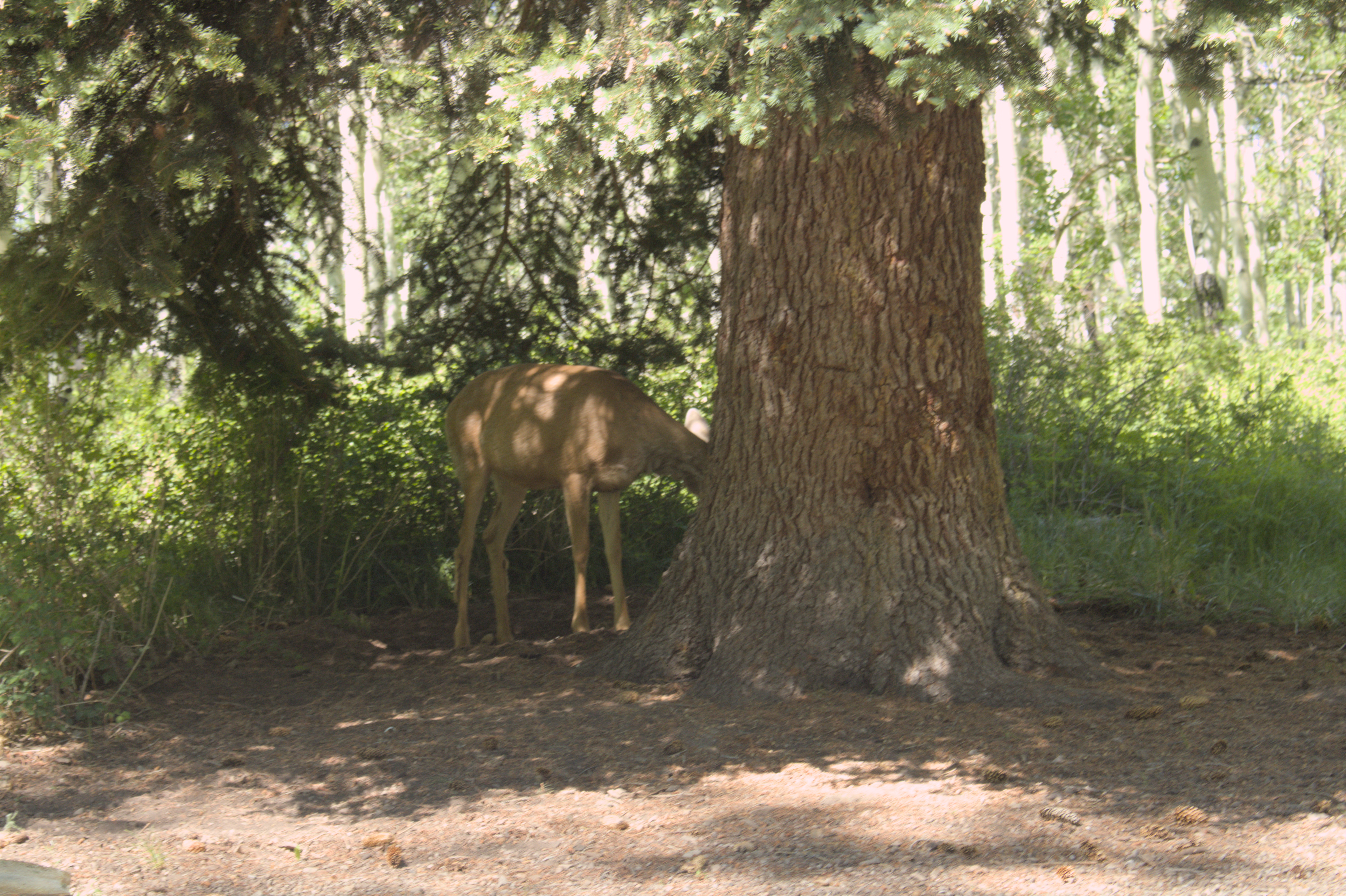
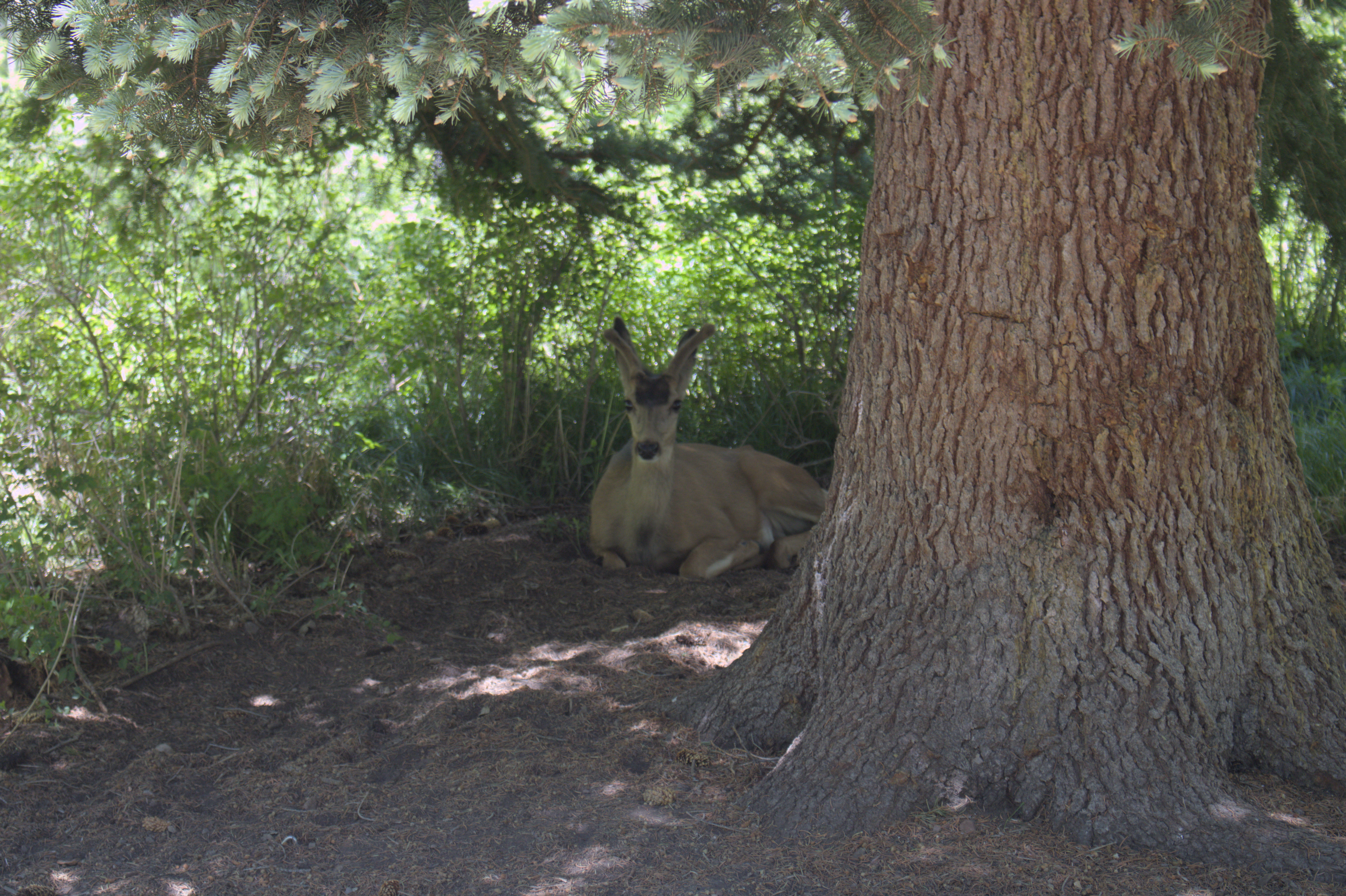
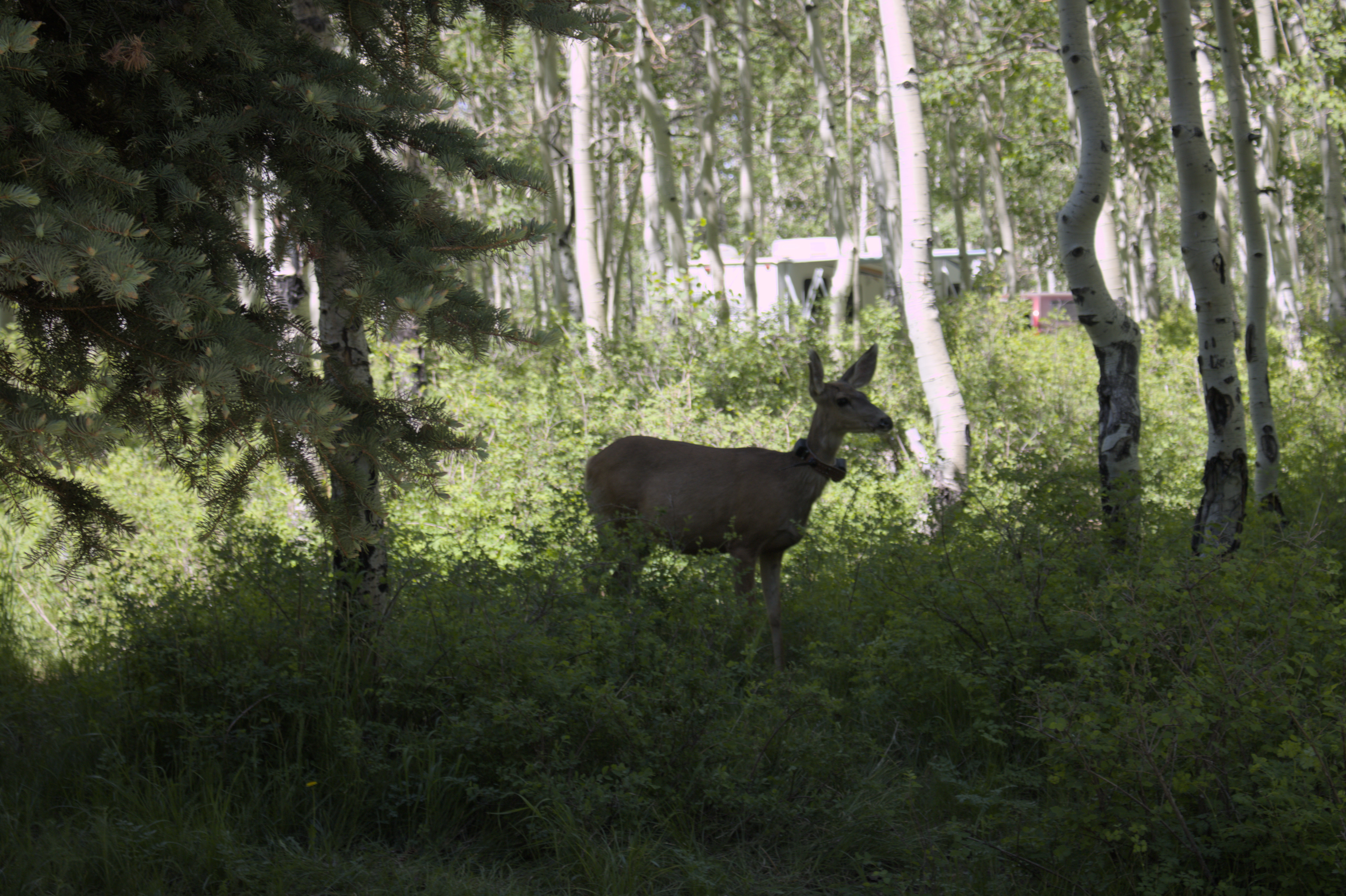
I really enjoyed hiking along the mountain trails.
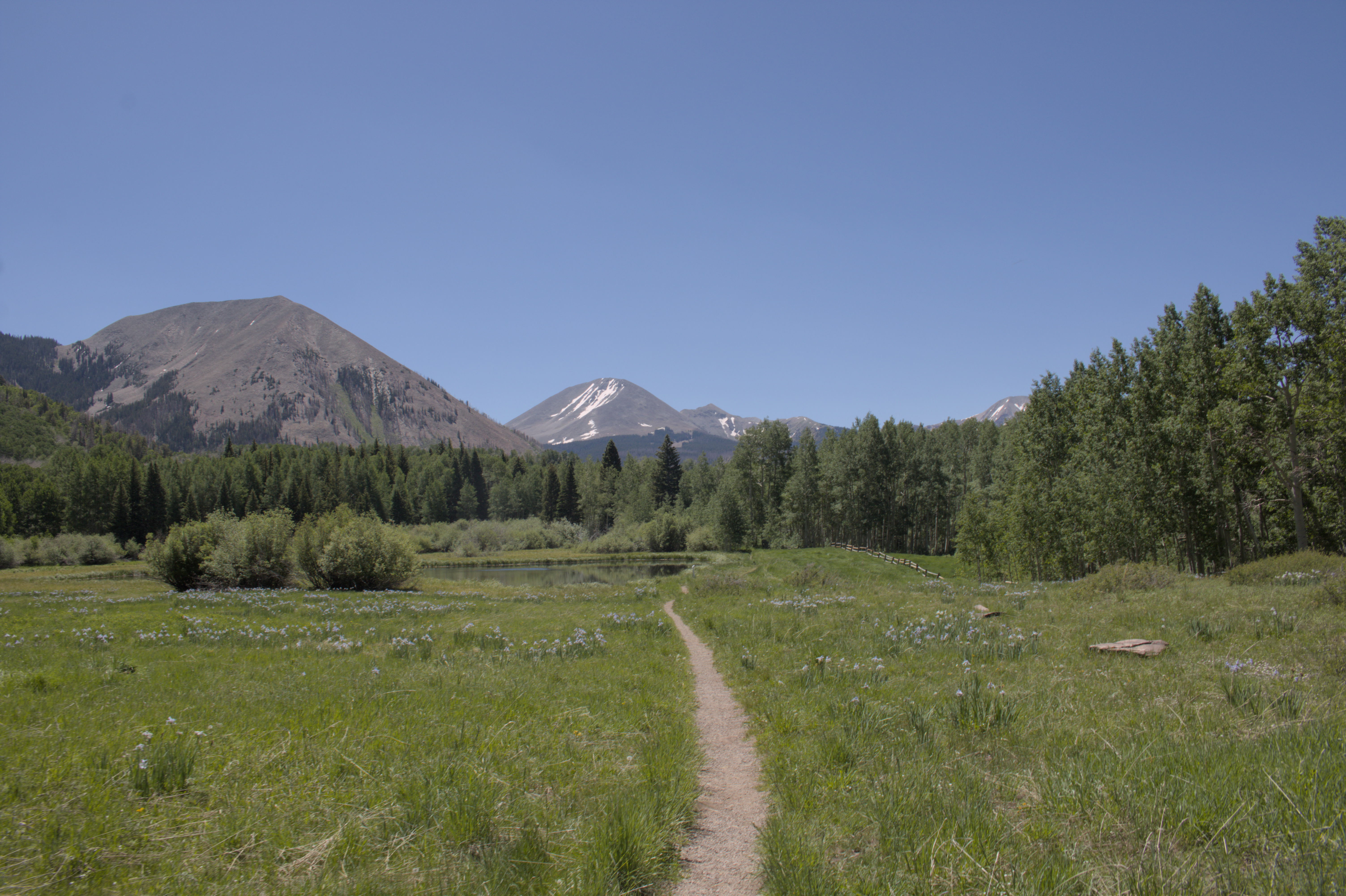
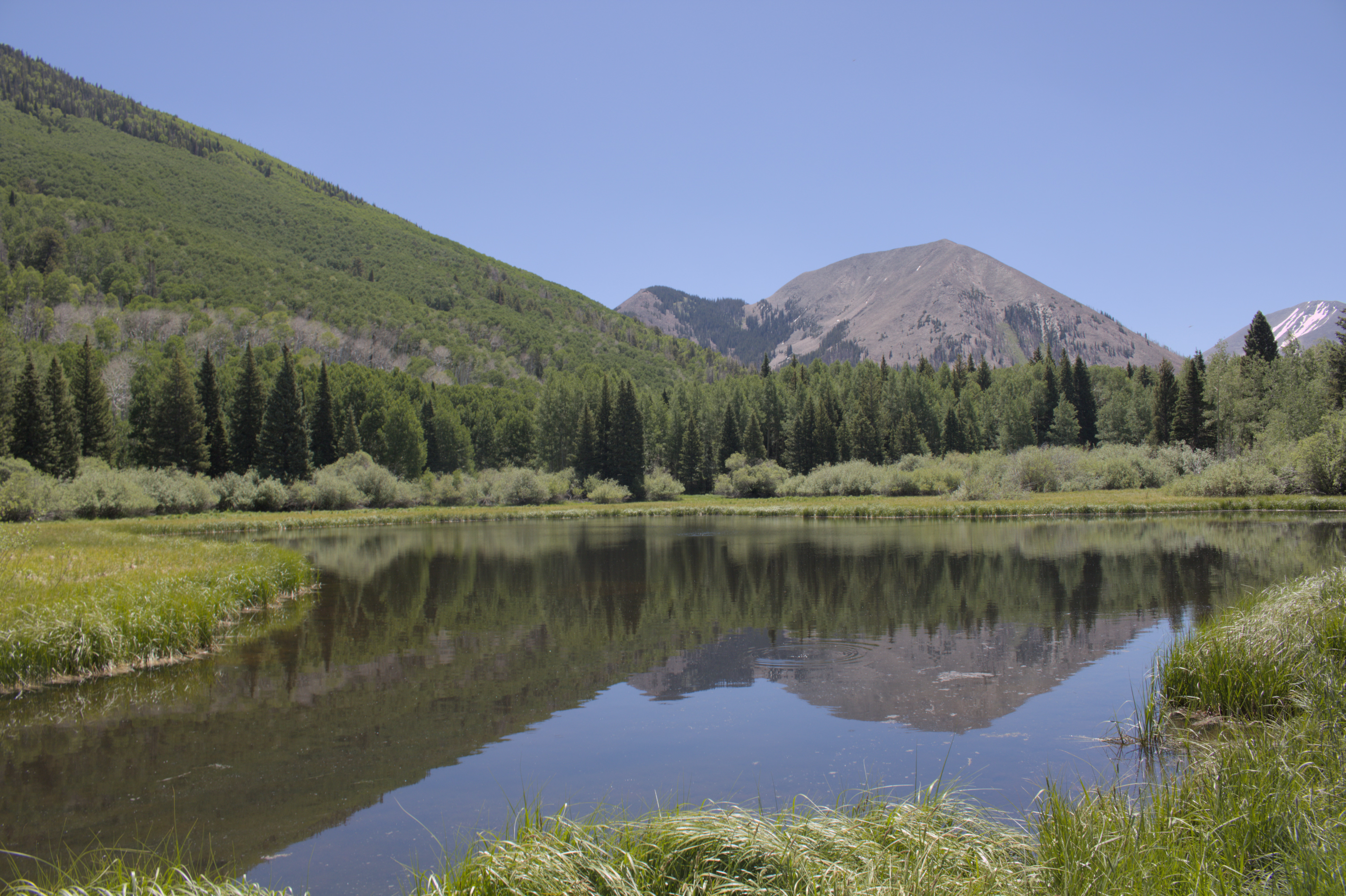
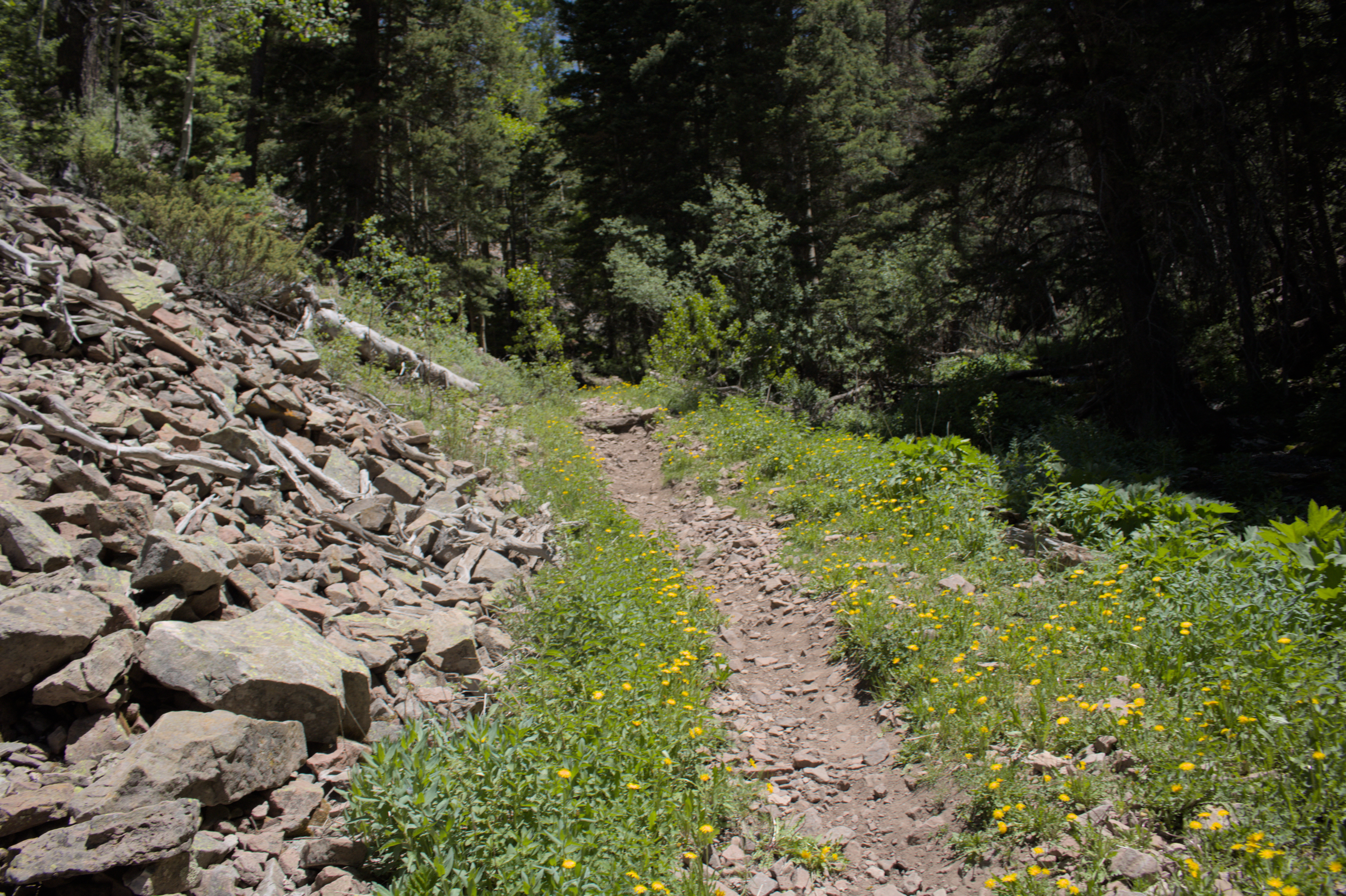
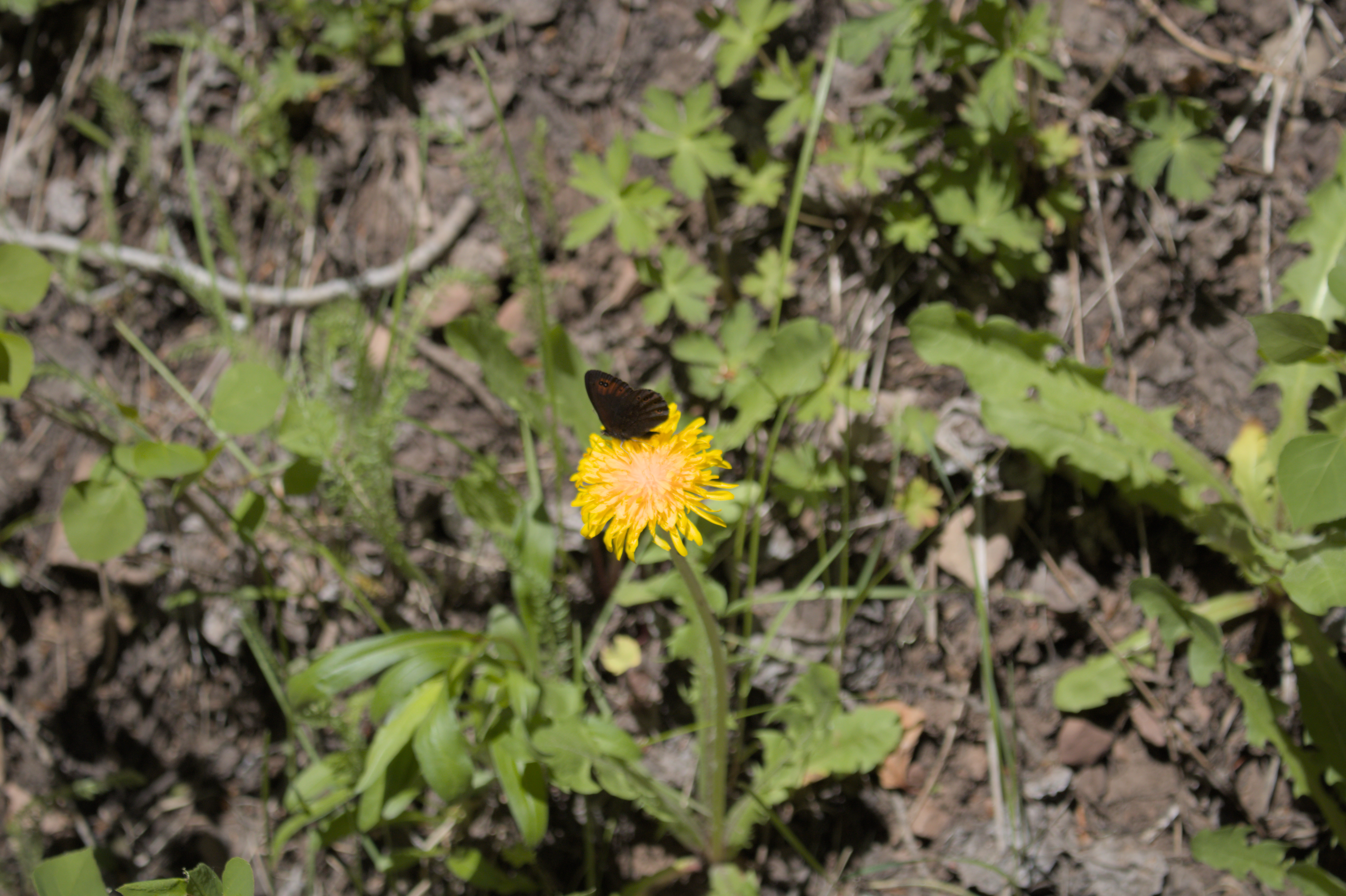
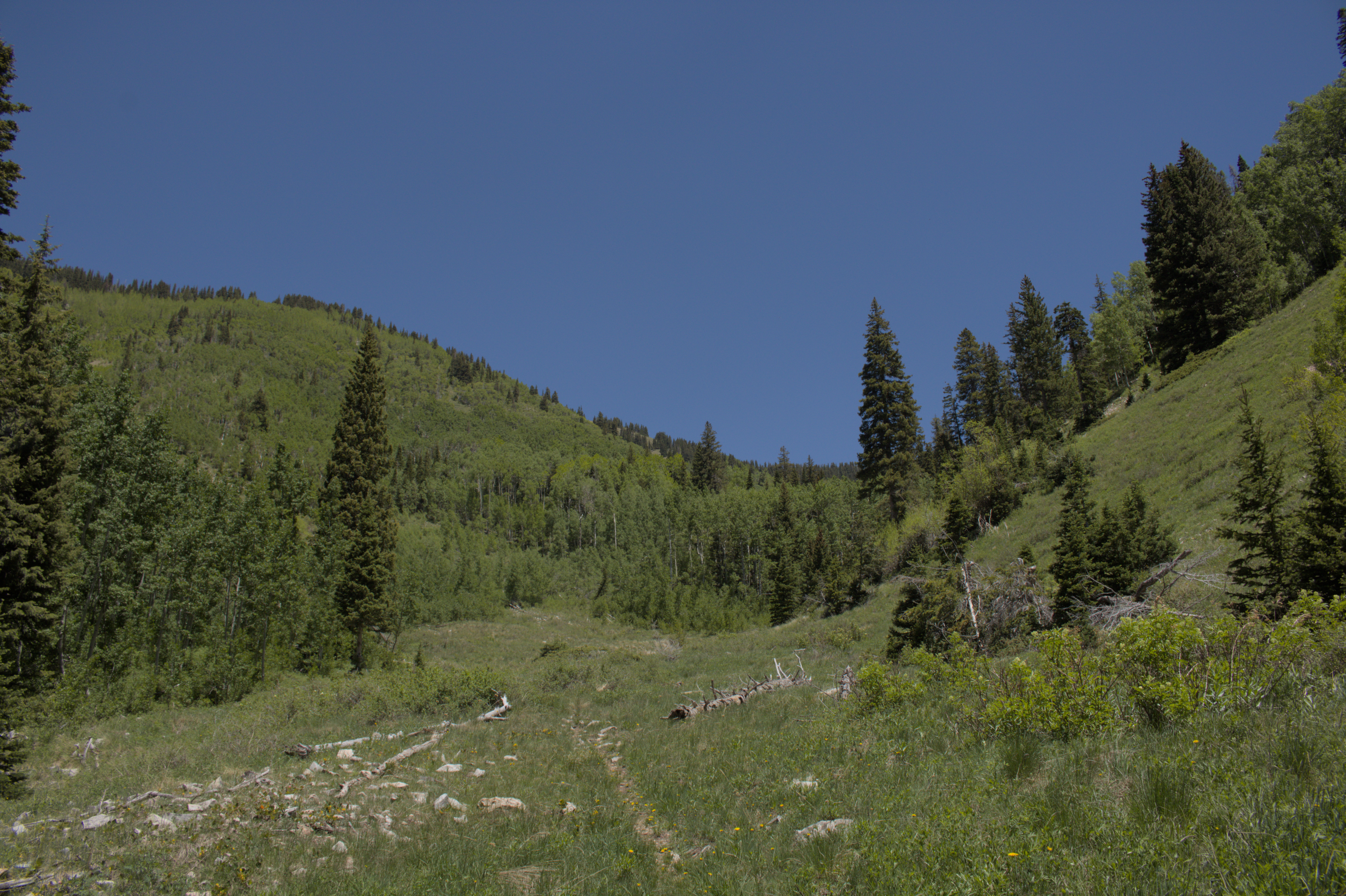
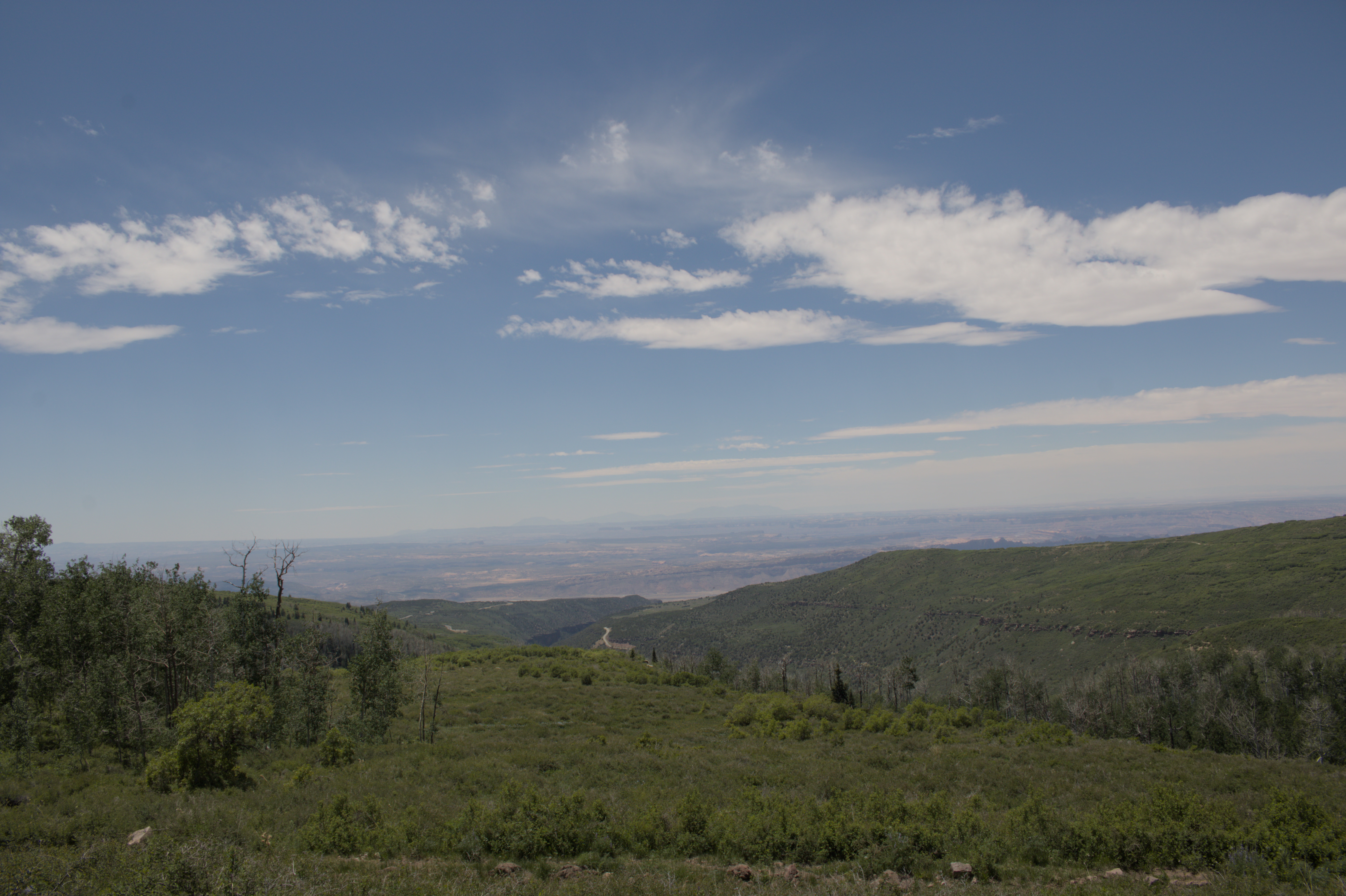
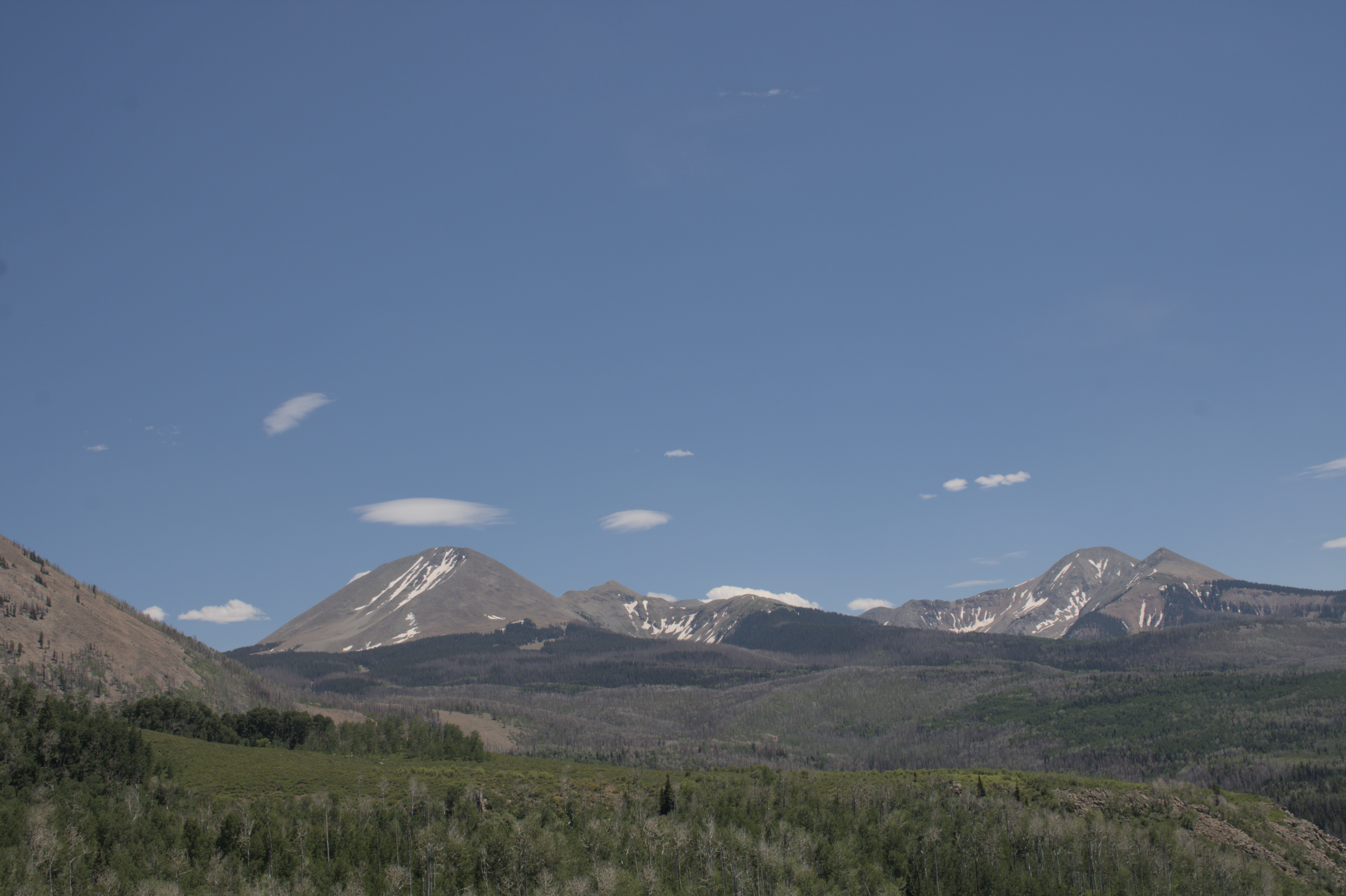
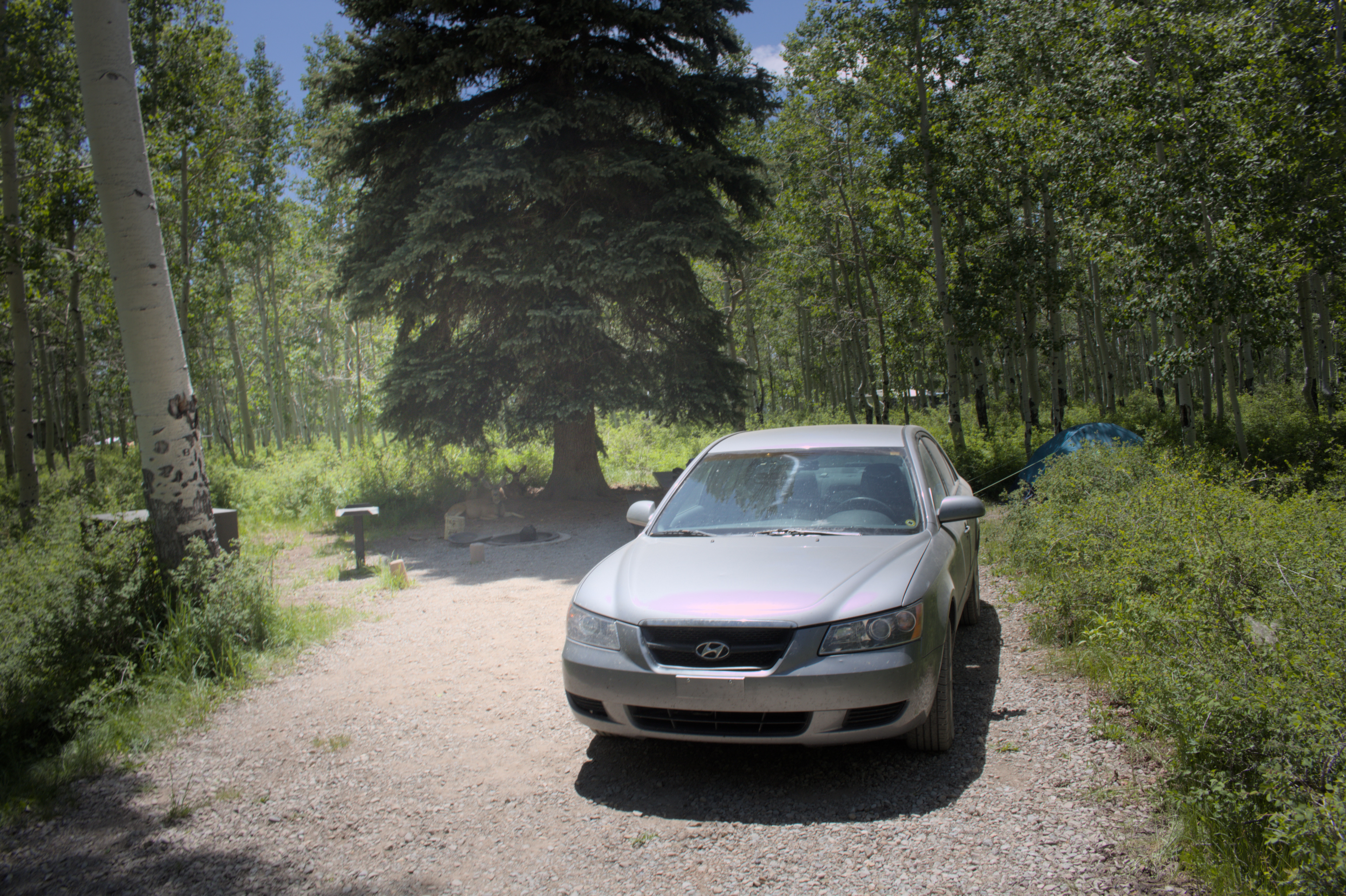
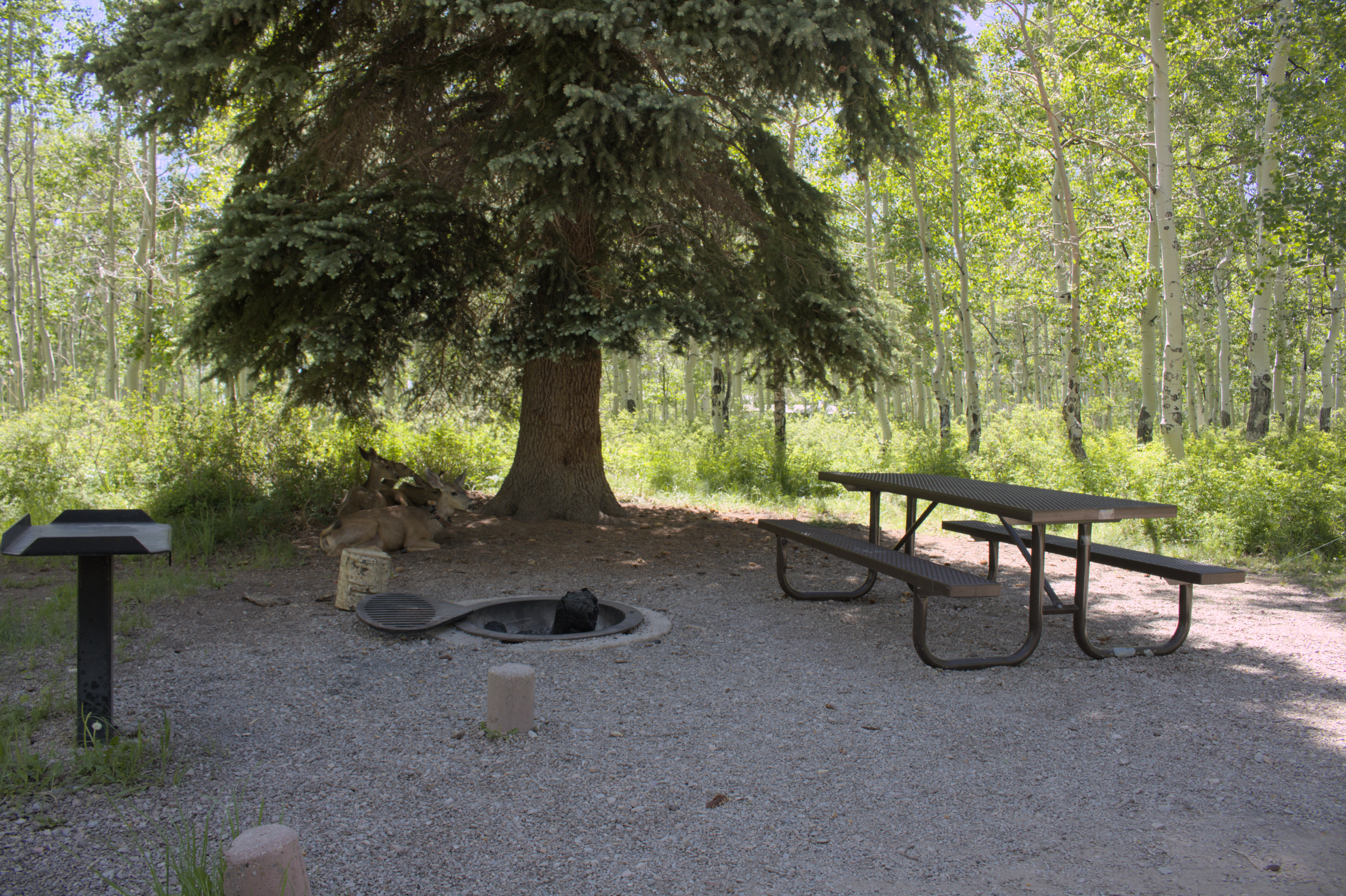

So, while my original plan was to spend this time at Arches National Park, I thoroughly enjoyed my time with the deer and in the mountains instead.
Black Canyon of the Gunnison
Now, by this point I’d visited the canyons at Yellowstone, Yosemite, the Grand Canyon, and Zion. So, when visiting the Black Canyon of the Gunnison, I felt an almost paternal air towards it: “Who’s a good little canyon? Are you gonna grow up to be like the Grand Canyon one day?”
It’s certainly a nice place, but I think it helps contextualize how utterly amazing all of the other national parks are by comparison. As far as I’m aware, there’s around 19 miles of trails in the park,† making Zion look practically massive.
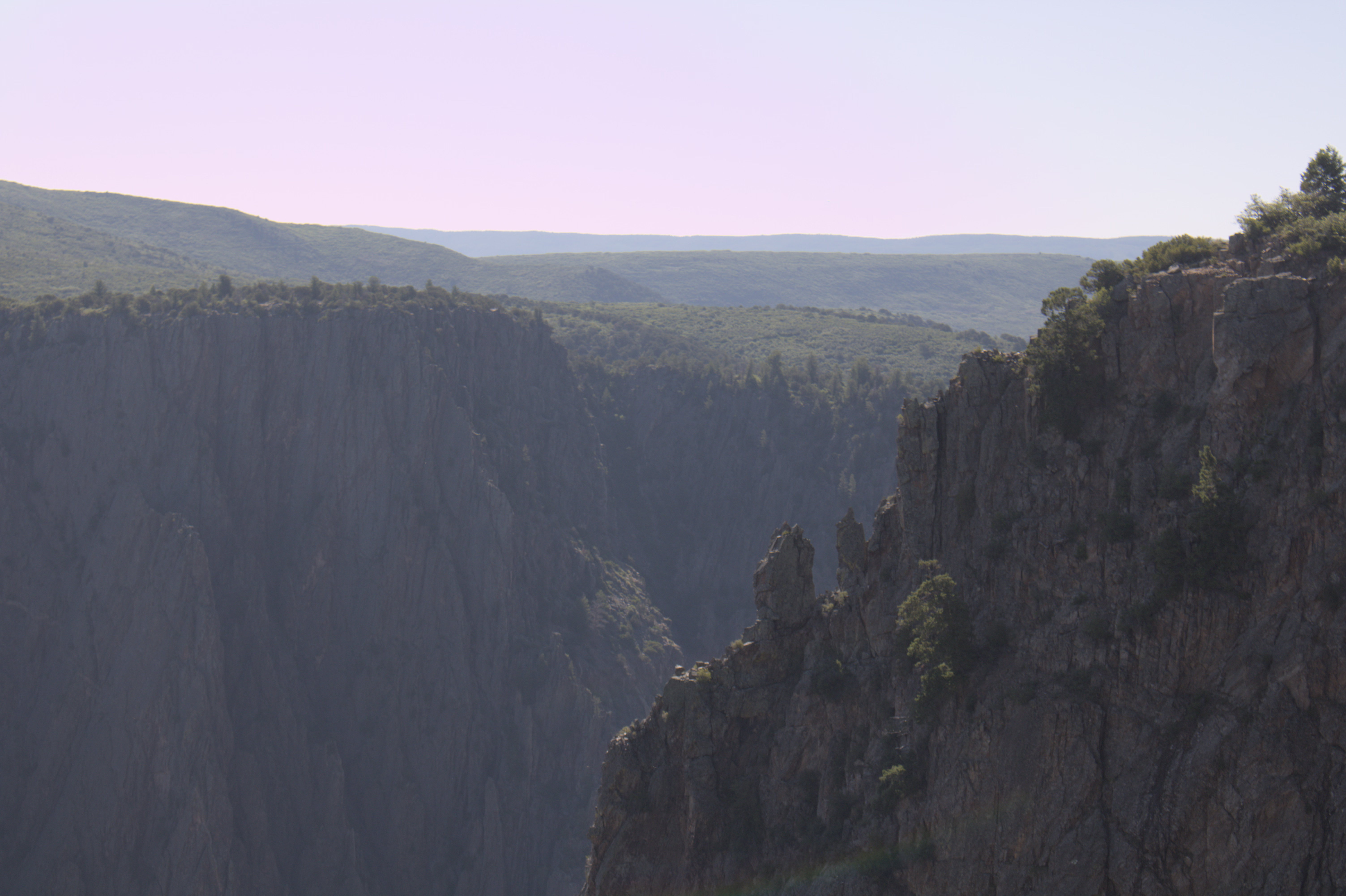
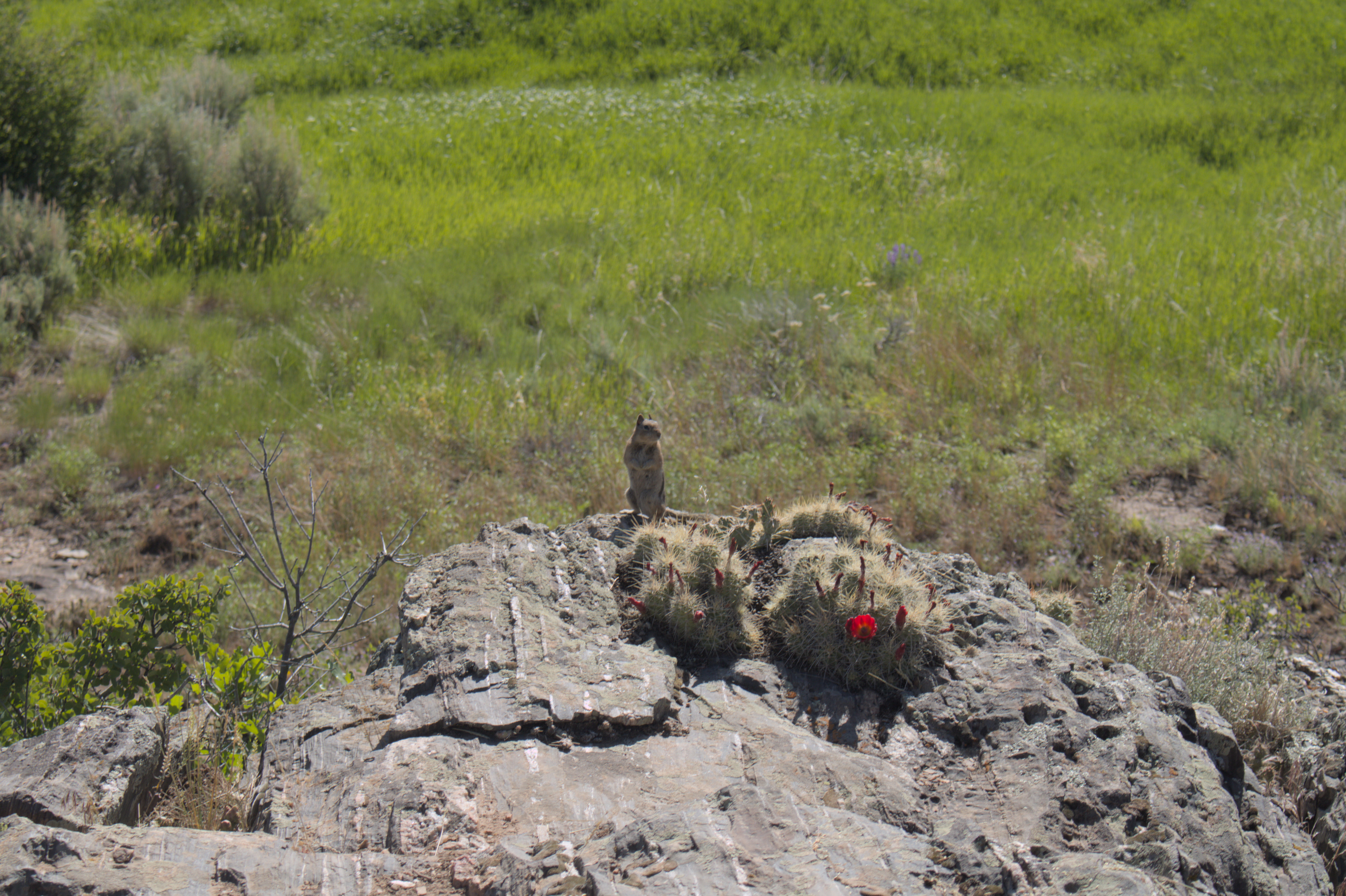
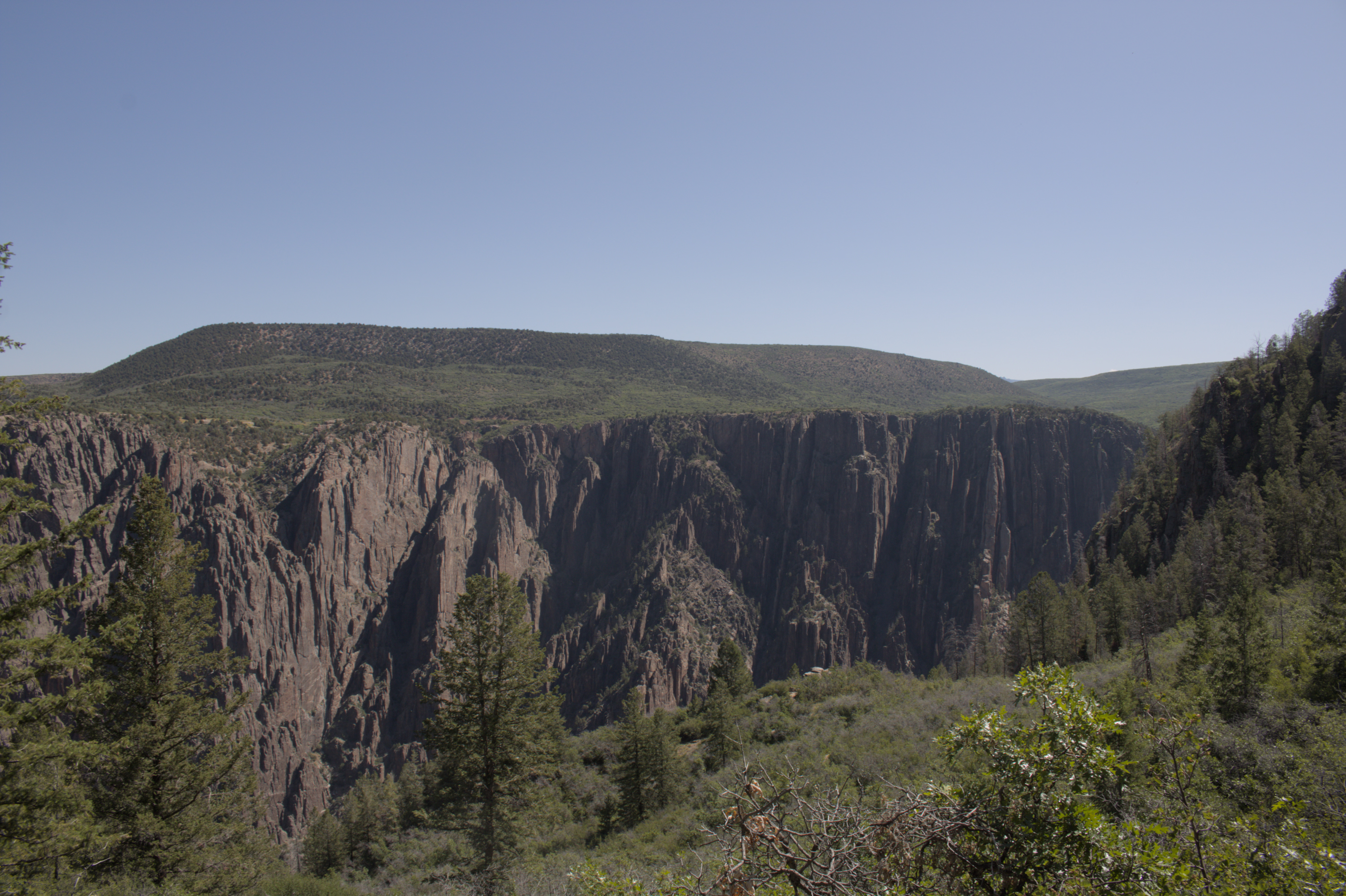
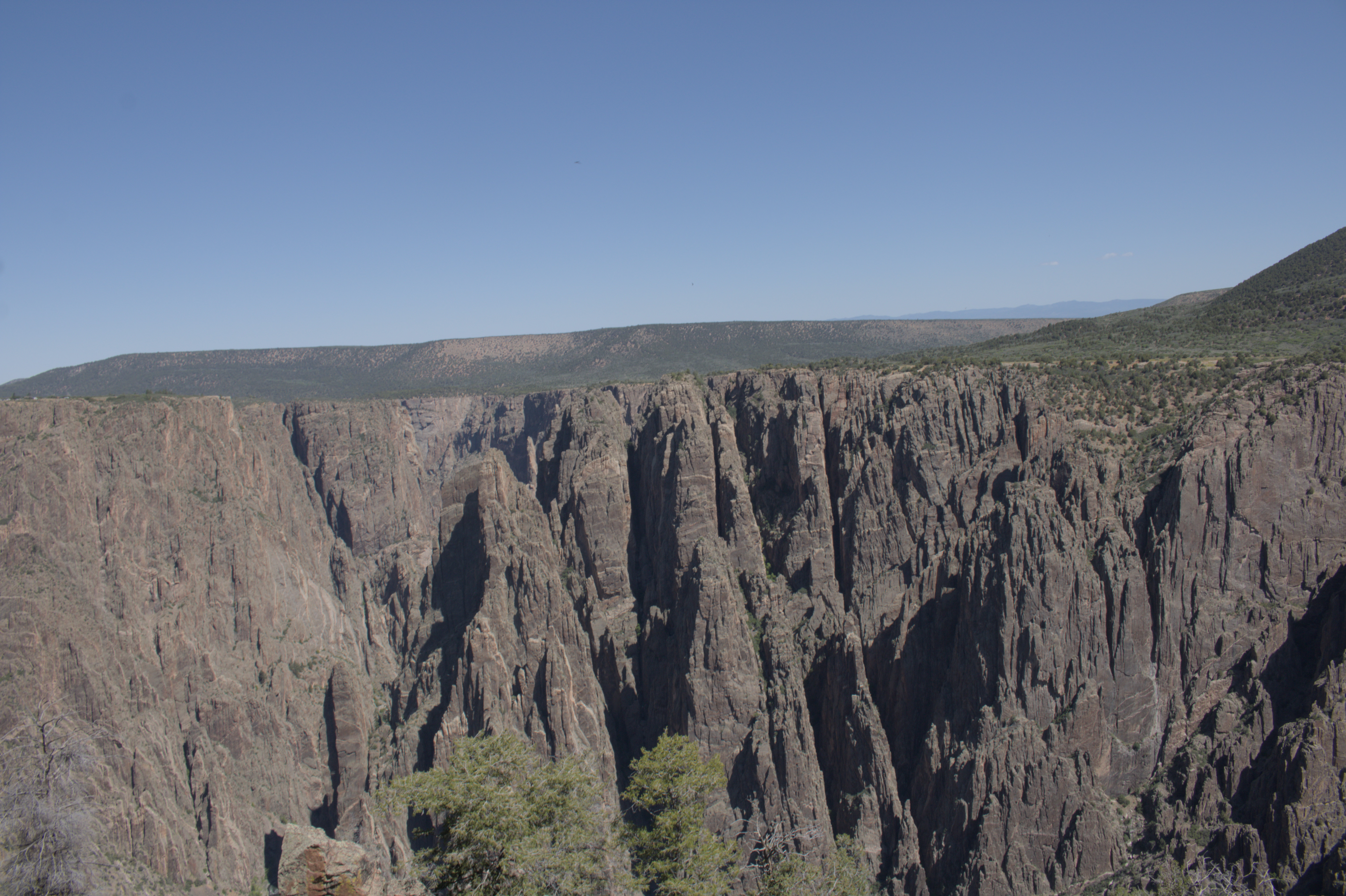
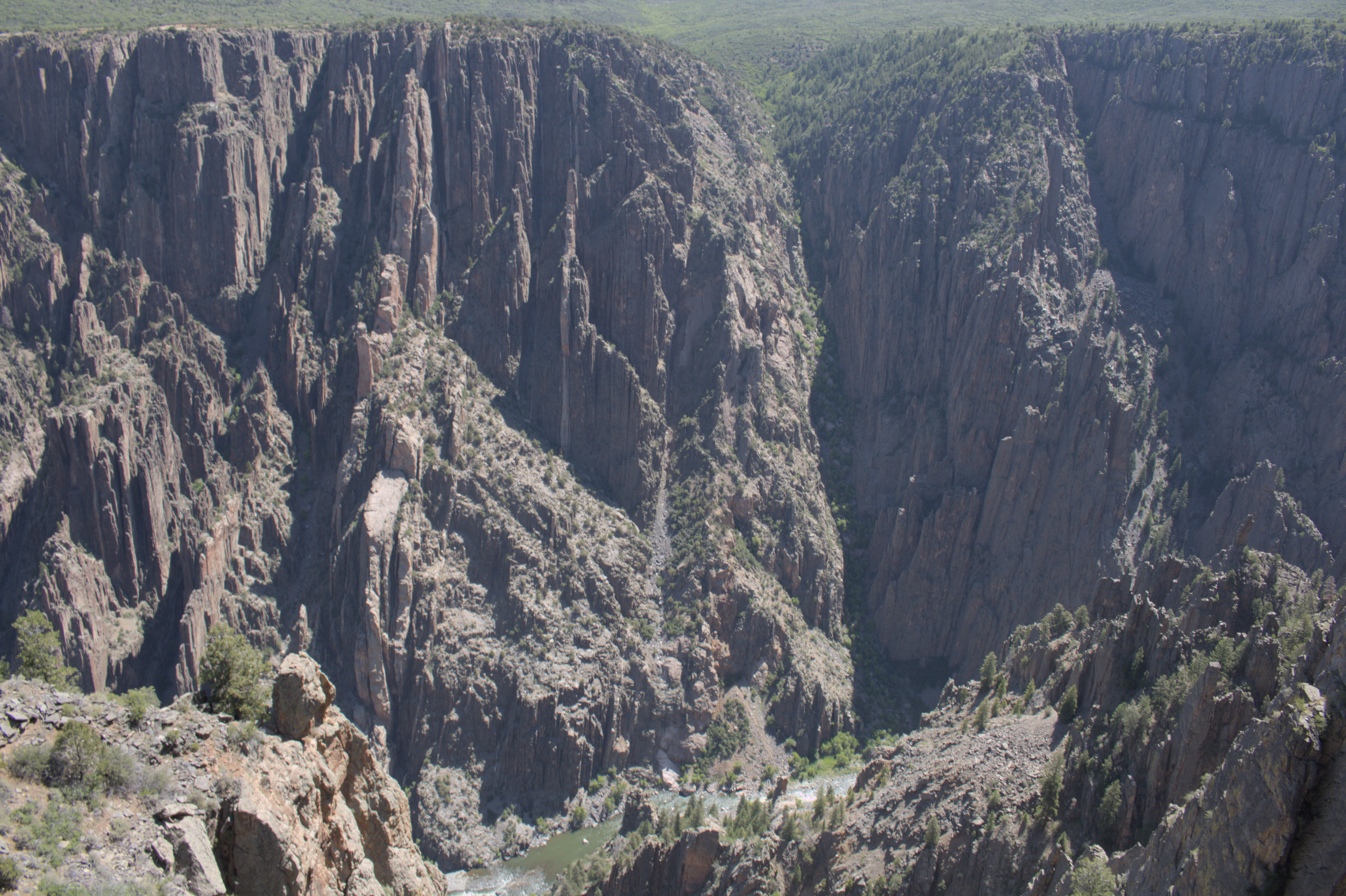
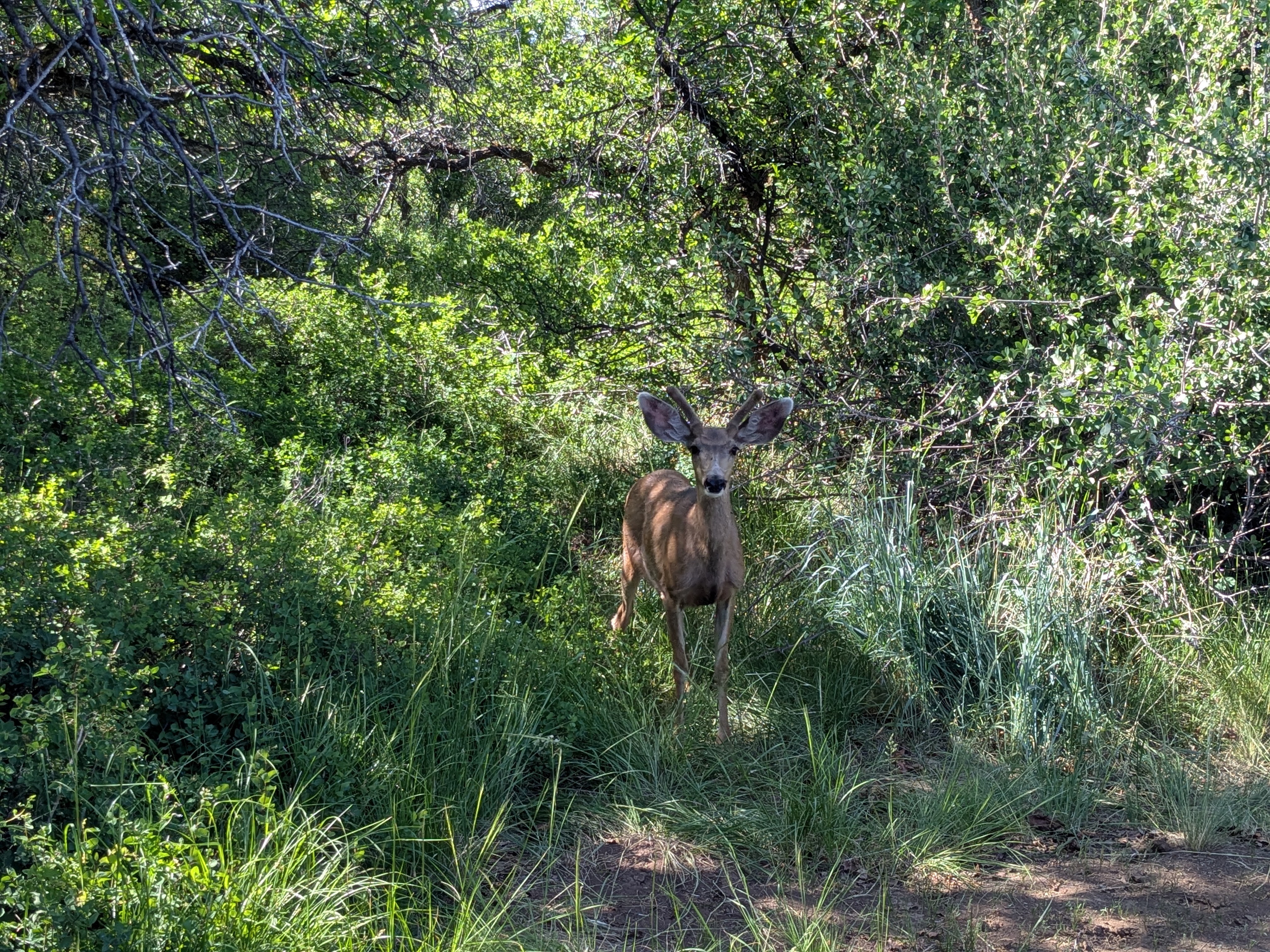
Colorado Springs
Once again, I feel fortunate to have visited many amazing places during this trip, but the time I got to spend with people meant the most to me.
Thanks to Carson and Thora for spending like three days showing me around Colorado Springs! I had a really great time!
Garden of the Gods
On our last day together, we visited Garden of the Gods, which is famous for its towering rock formations, of which a few are pictured below.
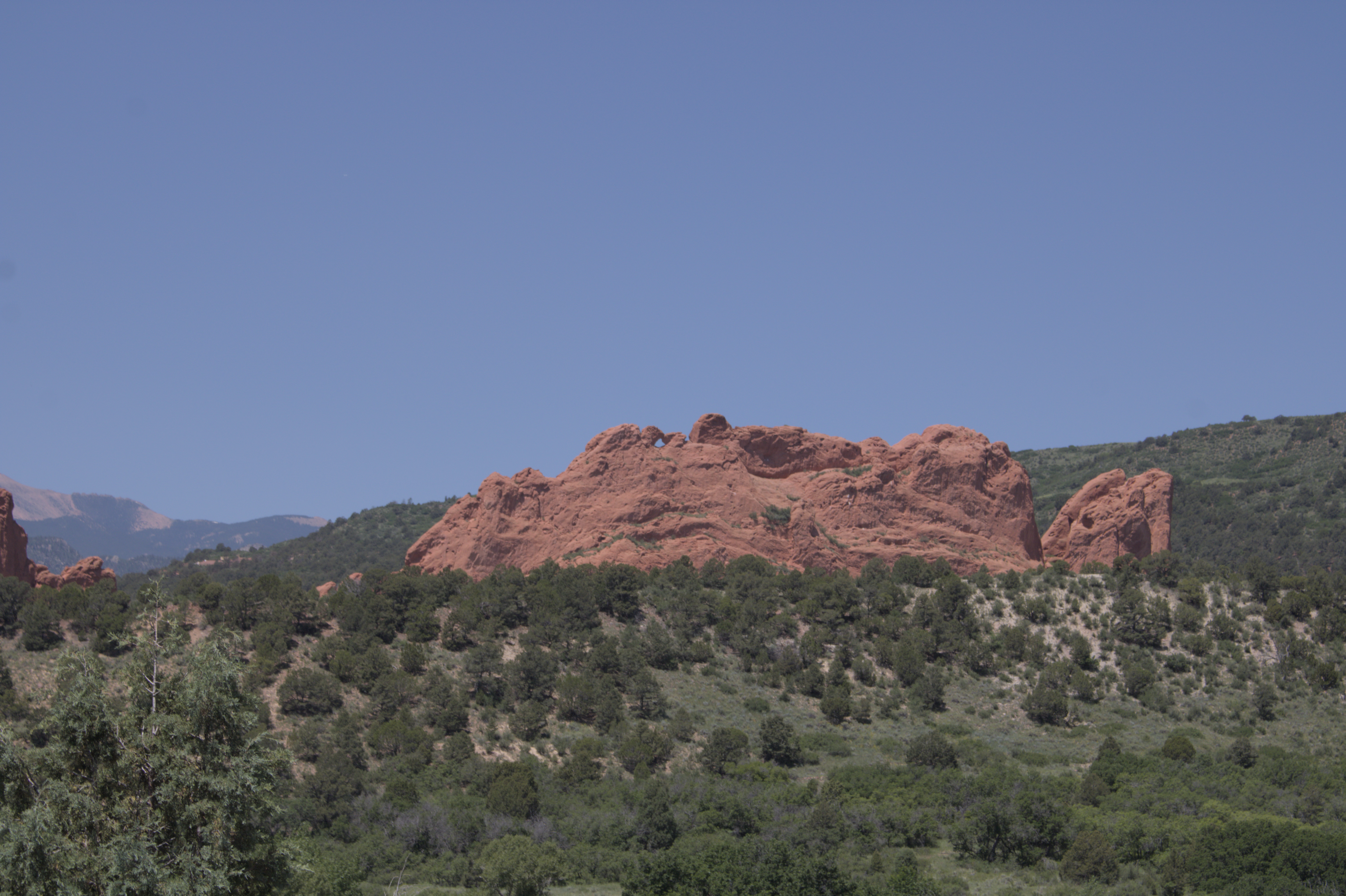
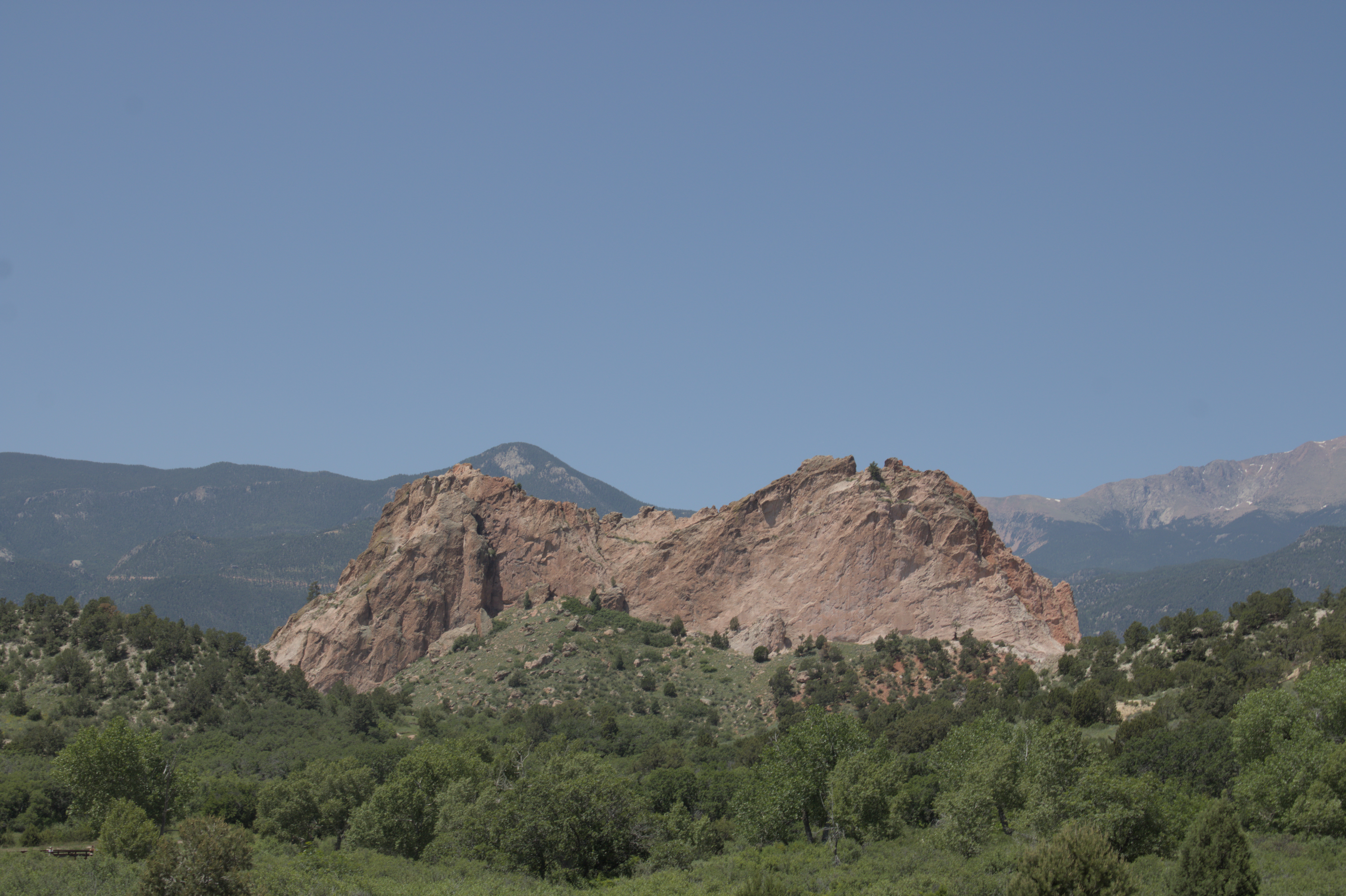
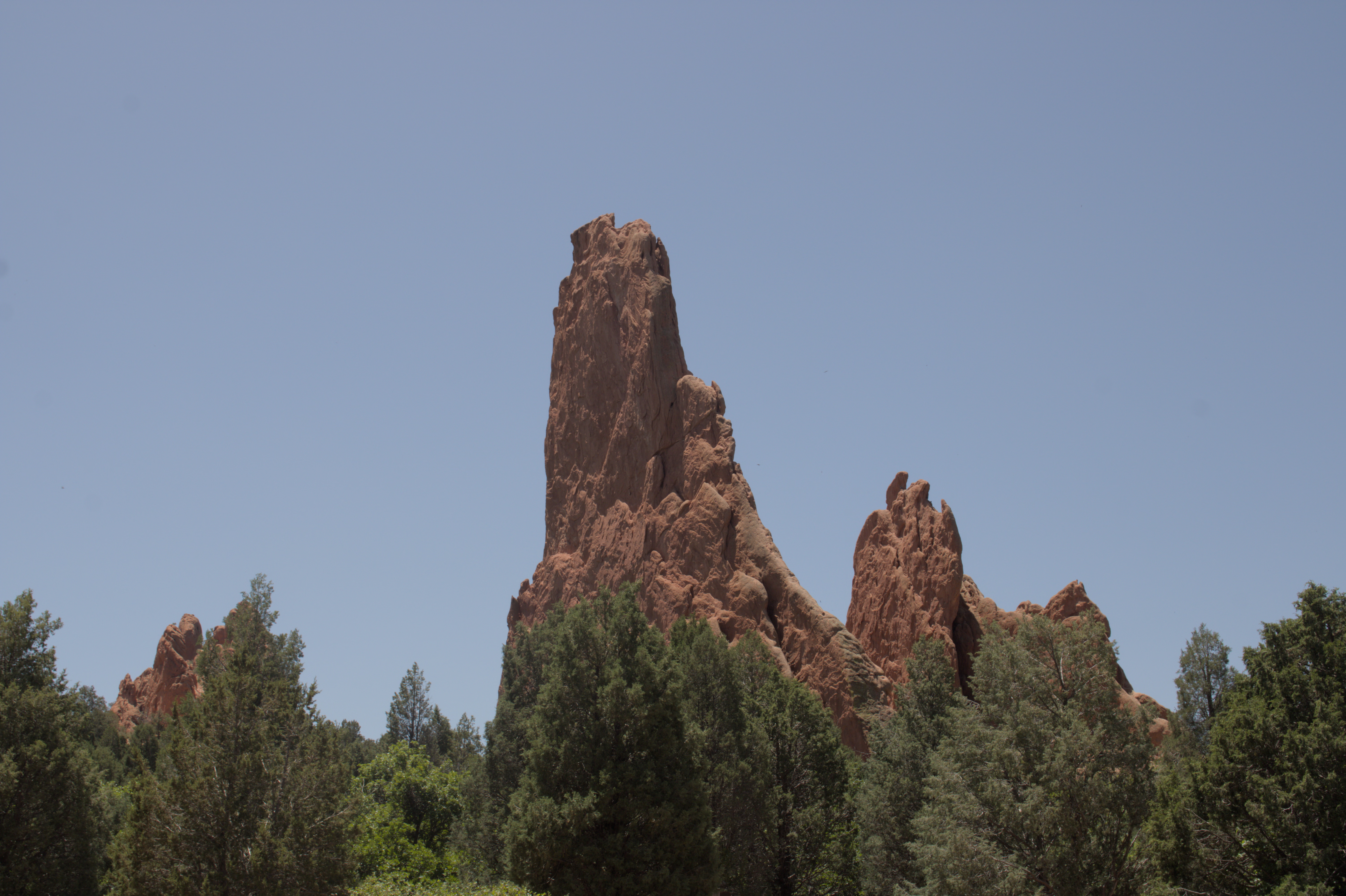
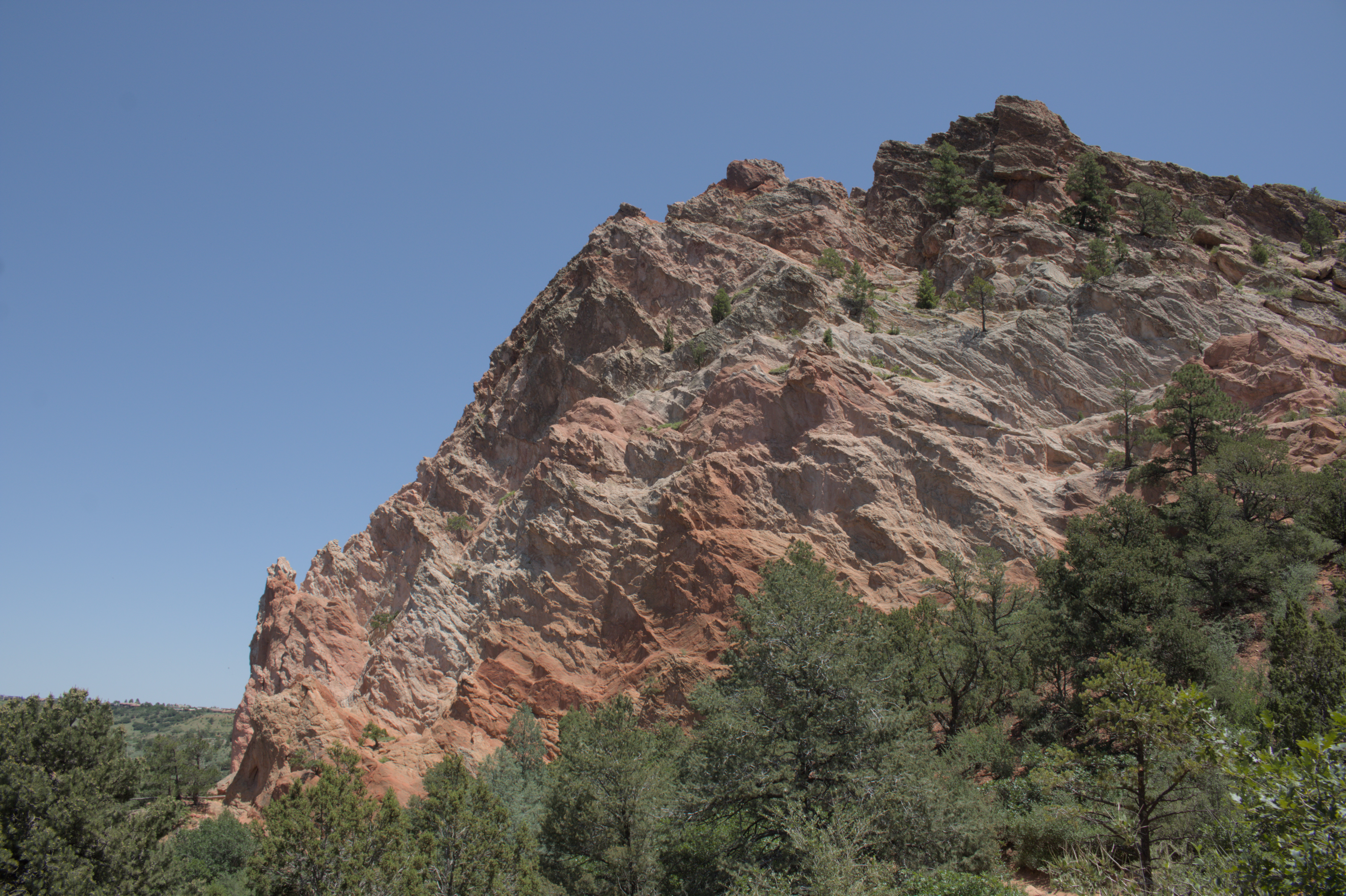
And thanks to Thora for taking this picture of Carson and me. :]
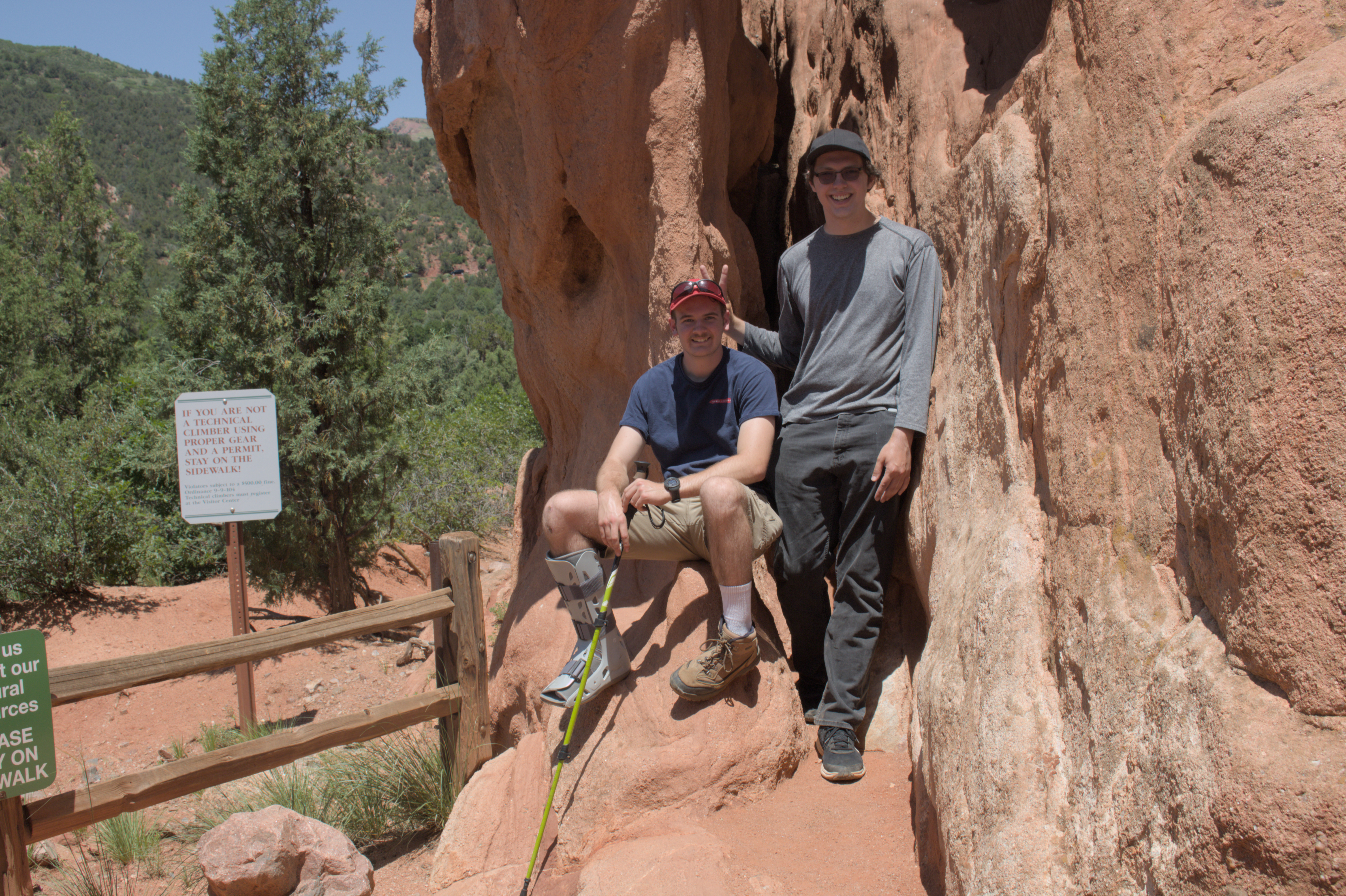
Heading Home
And so, I headed back east through Kansas, Missouri, and Illinois.
My only note is that it’s Important to check your tire pressure after coming down from high elevation. There are lots of free air pumps in Kansas City for this reason.
Beyond that, I found this leg of the journey to be entirely uneventful.
Conclusion & FAQ
So, that’s it! That has been a quick peek into what I was up to for those 43 days.
Finishing the trip was has been a weird mix of emotions. I had a great time, learned a lot, and it was certainly life-changing. However, by the time I got home, I was really excited to just sleep in my own bed. In campsites, I saw quite a few people living a “digital nomad” or “van-life” lifestyle, and this trip helped me learn that’s not for me!
Anyway, I’ll try to answer some questions you might have!
What was your favorite part?
My favorite parts were the times I spent with people! Thanks to everyone who met up with me during my trip!
But, in terms of areas, I really enjoyed the Pacific Northwest. I could totally see myself living in Portland, Oregon or Coeur d’Alene, Idaho. I was astounded by both the natural beauty and the friendliness of the people I met. It’s a really great region.
How did you plan this trip?
While there were a few times I had to improvise, this trip was generally well planned and low stress.
I attribute this to all of the planning I did in Google Sheets.
I started off with a list of places I wanted to go. From there, I used Google Apps Script to automatically calculate driving times between locations, lookup geocoords, and estimate gas costs. This helped me eliminate places that would take too long to get to, and add new stops so I wasn’t driving for more than 9 hours per day.
I had a few programs to help me out:
- My Google Apps Script, which was embedded in my Google Sheet, and took care of calculating driving times, estimating gas costs, and more.
- A script to convert my spreadsheet to
.ical, which ensured I had all driving times, check-ins, and check-outs marked on my calendar. Calendar integration was super convenient to help me handle timezones while I was travelling. - A script to convert my spreadsheet to
.kml, which helped me visualize my trip ahead of time, and make sure it was reasonable.
I’ll keep the rest of the sheet private, as it has quite a bit of personal information, but I hope that the idea is clear. It was useful to have one spreadsheet to be a single source-of-truth, and then use scripts to convert it for Google Calendar and Google My Maps.
How much did this cost?
For the 43 day trip, I spent:
| Lodging | $ 2,004.42 |
| Automotive | $ 1,146.25 |
| Gas | $ 1,035.24 |
| Restaurants | $ 681.48 |
| Groceries | $ 551.03 |
| Supplies | $ 368.75 |
| Misc. Travel | $ 275.18 |
| Gifts | $ 89.73 |
| Parking | $ 46.10 |
| Experiences | $ 36.03 |
| Total: | $ 6,234.21 |
So, the largest single expense was the emergency car repair in Washington.
Was there anything you wish you did differently?
Honestly, I’m really happy with how the trip turned out.
I really enjoyed it, and I learned a lot about myself and about the world. I think the interruptions to Mt. Rainer and Arches were unfortunate, but I still really enjoyed the trip nonetheless.
Do you have any general advice?
- Make sure to book campsites as early as possible!
- Many prime campsites are booked out months in advance so the sooner you book, the better.
- Also, make sure to check your tire pressure before you start driving after experiencing any significant change in elevation.
- Bring extra oil with you! You don’t want to have to drive far if you’re low.
- Consider asking around for the supplies you need before buying them.
- Thanks to Aaron for letting me borrow his tent and tripod!
Unless otherwise stated, all of the images and videos above are licensed as Creative Commons Attribution-ShareAlike 4.0.
